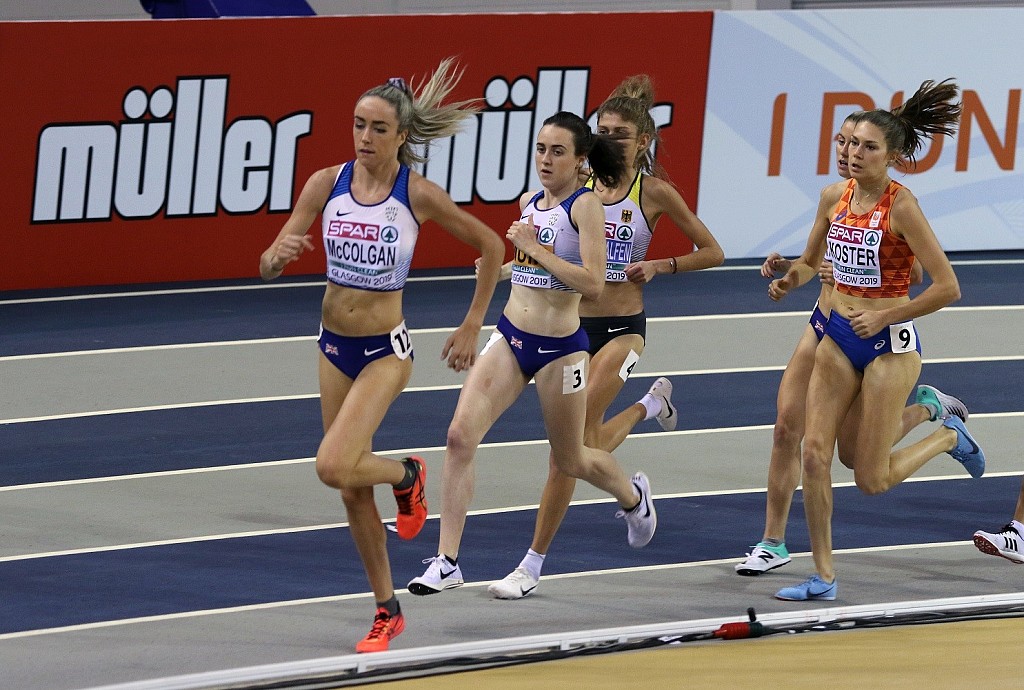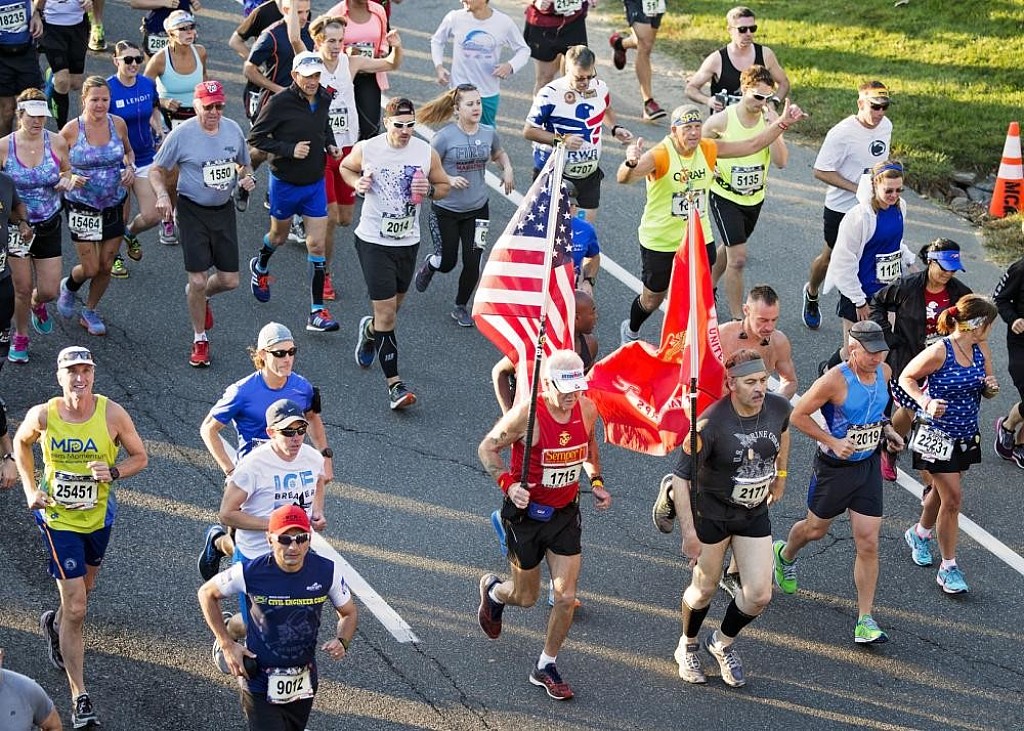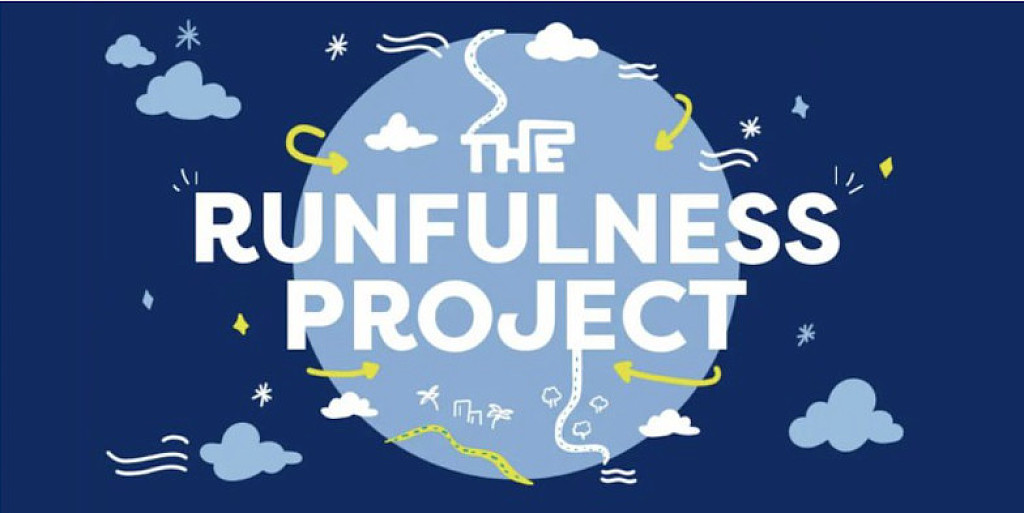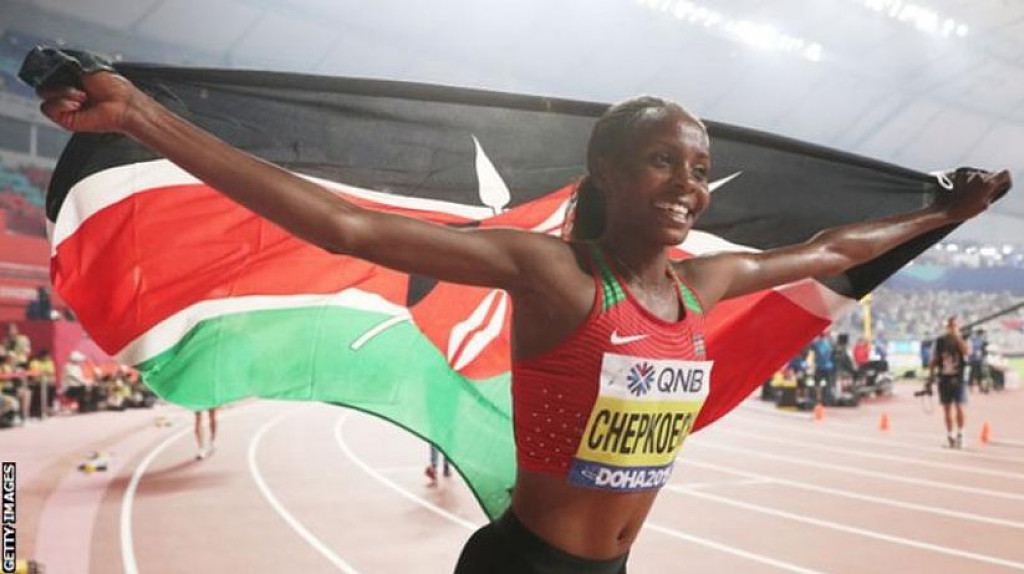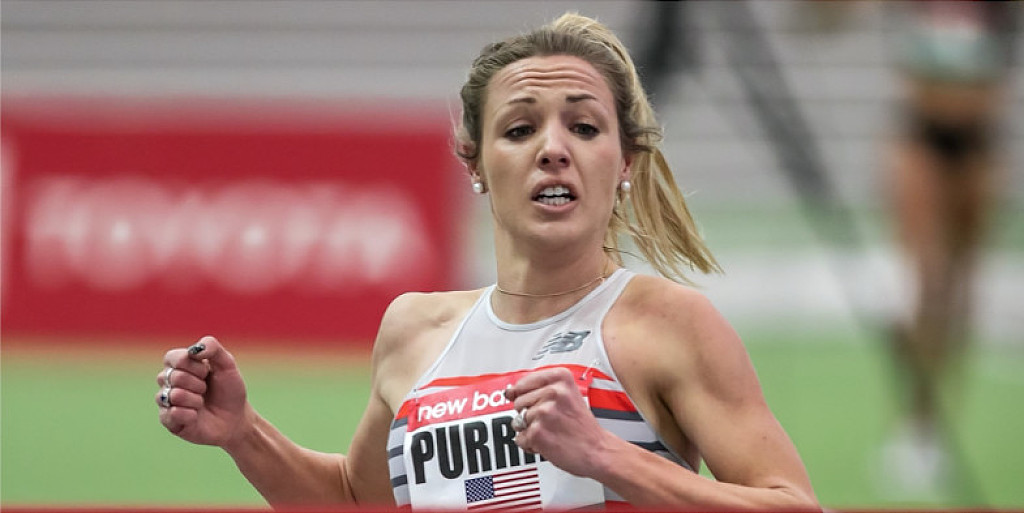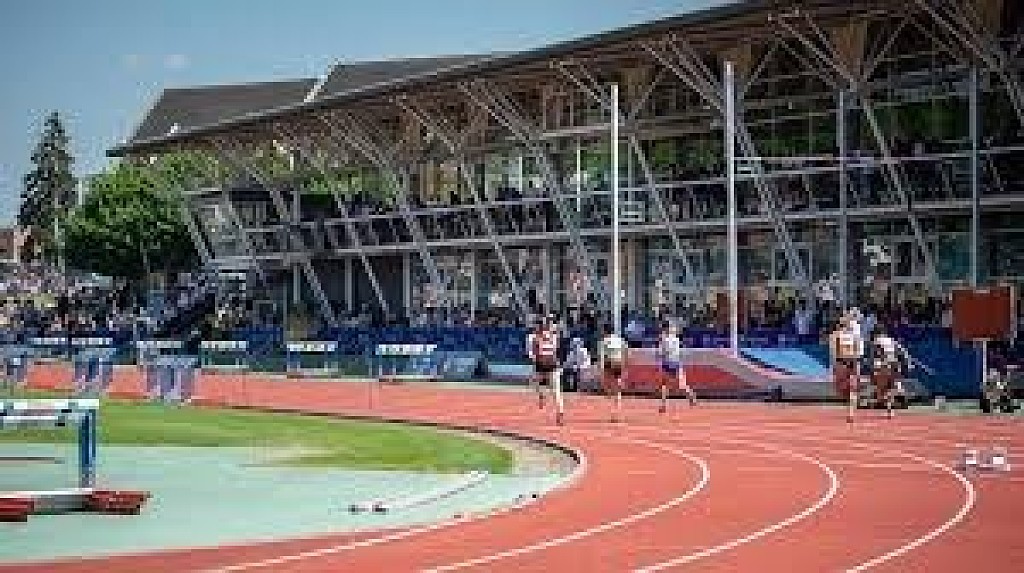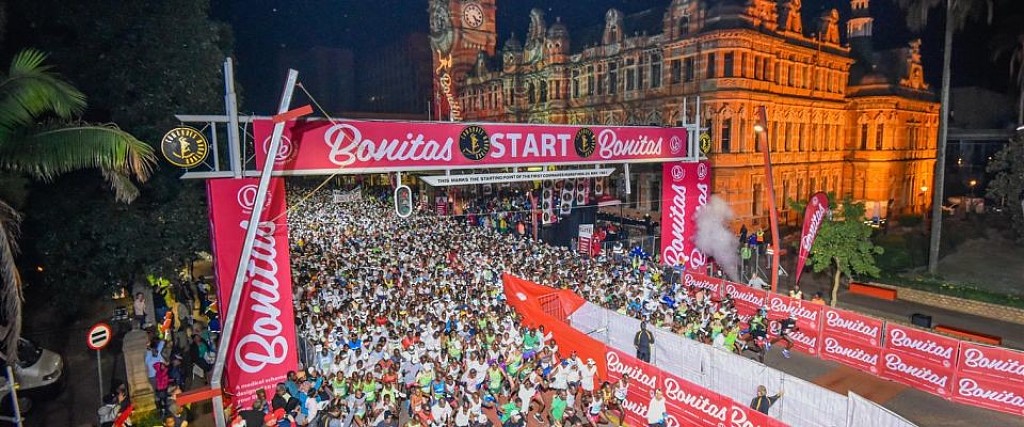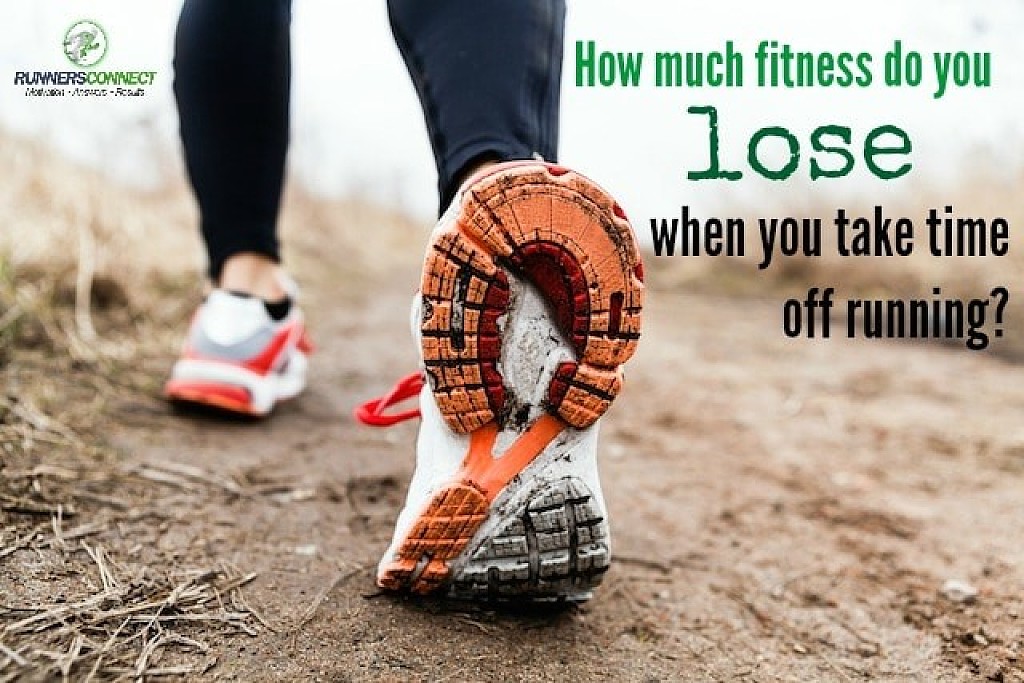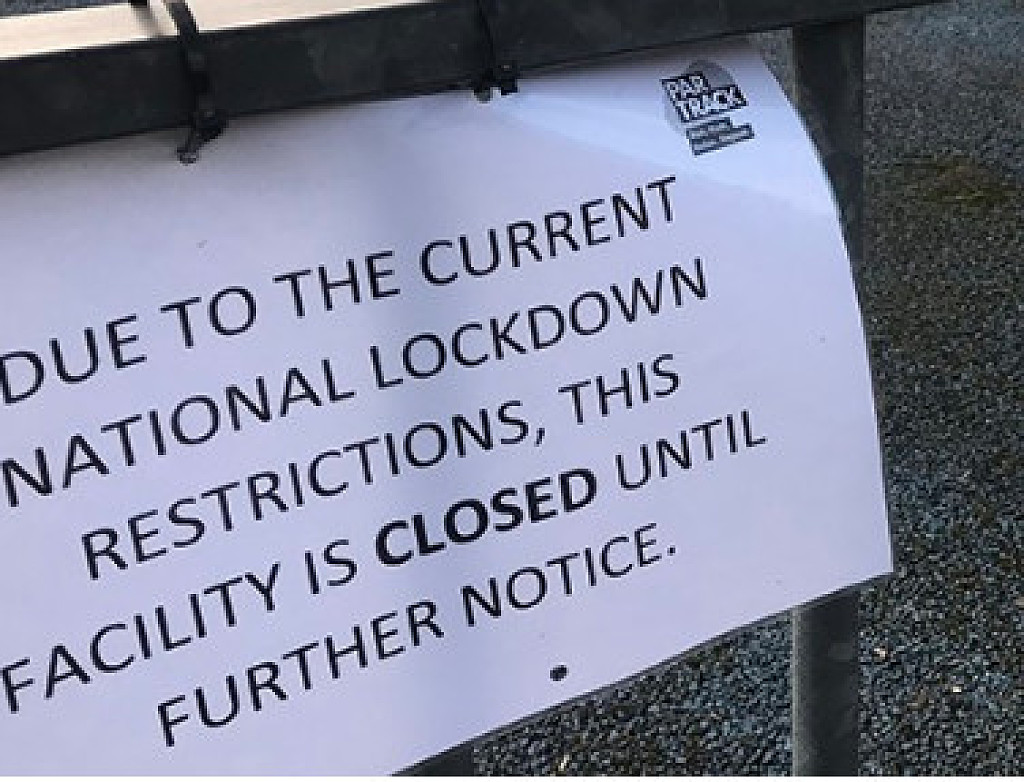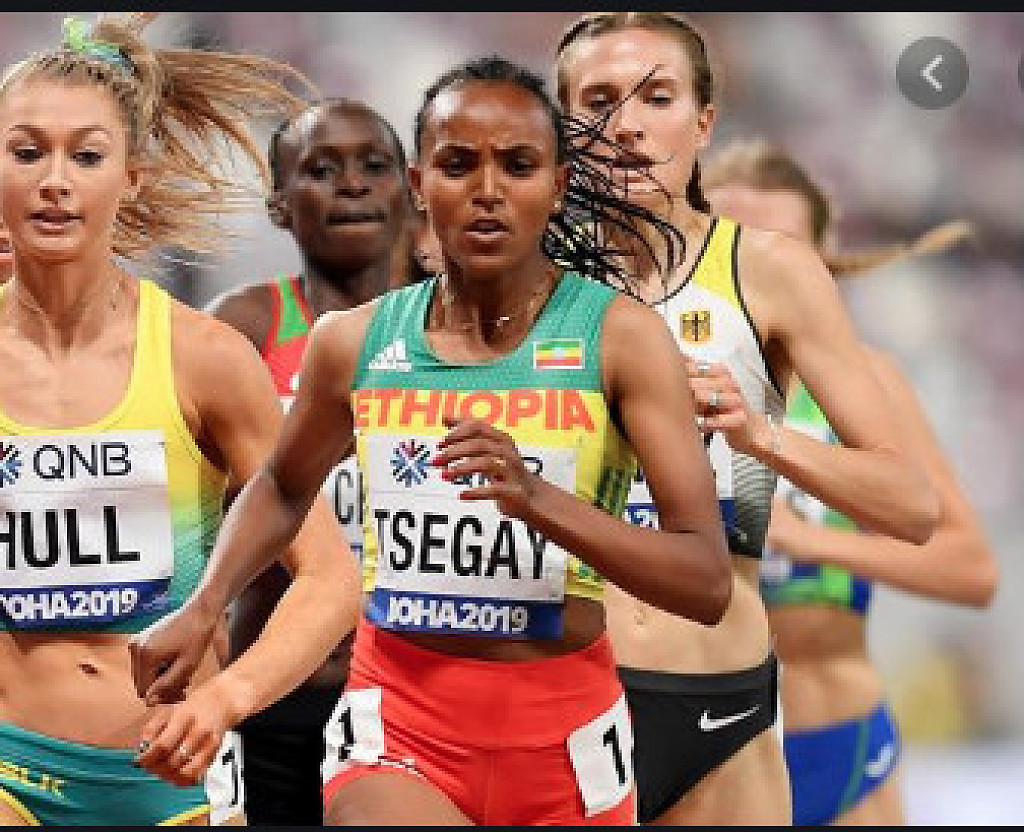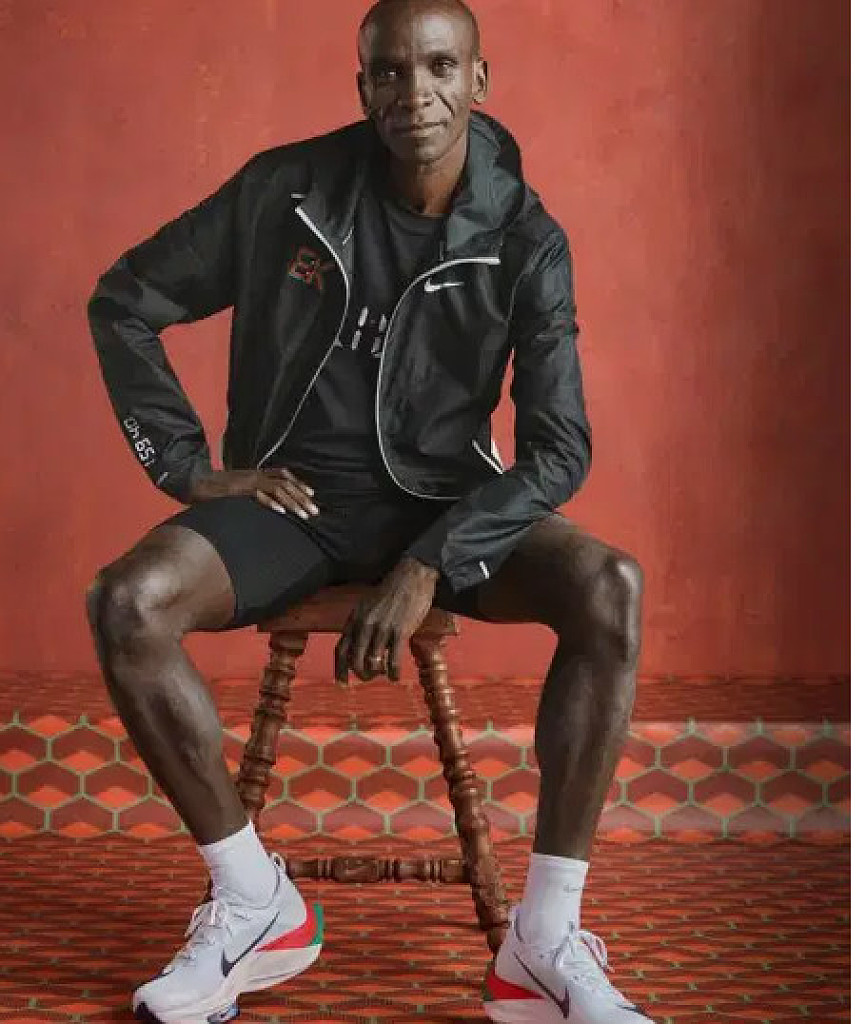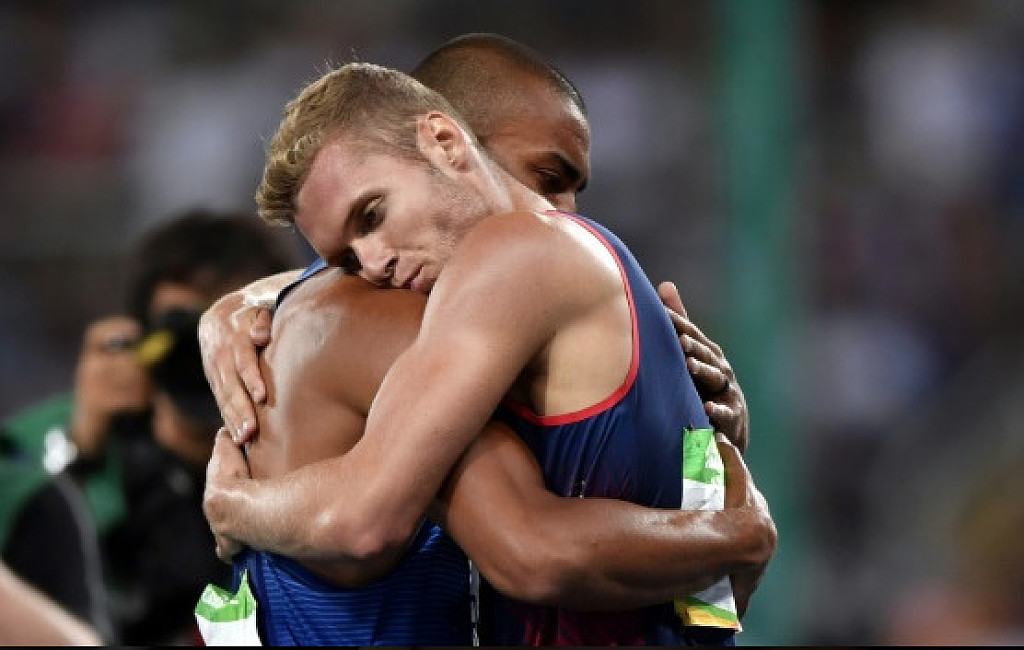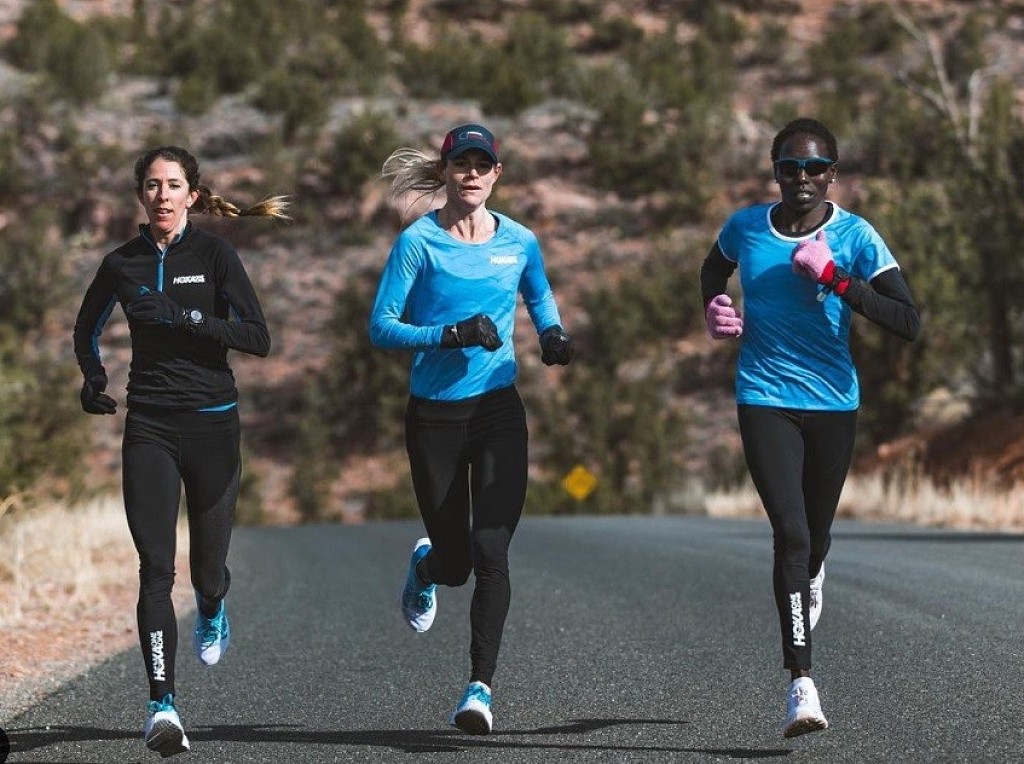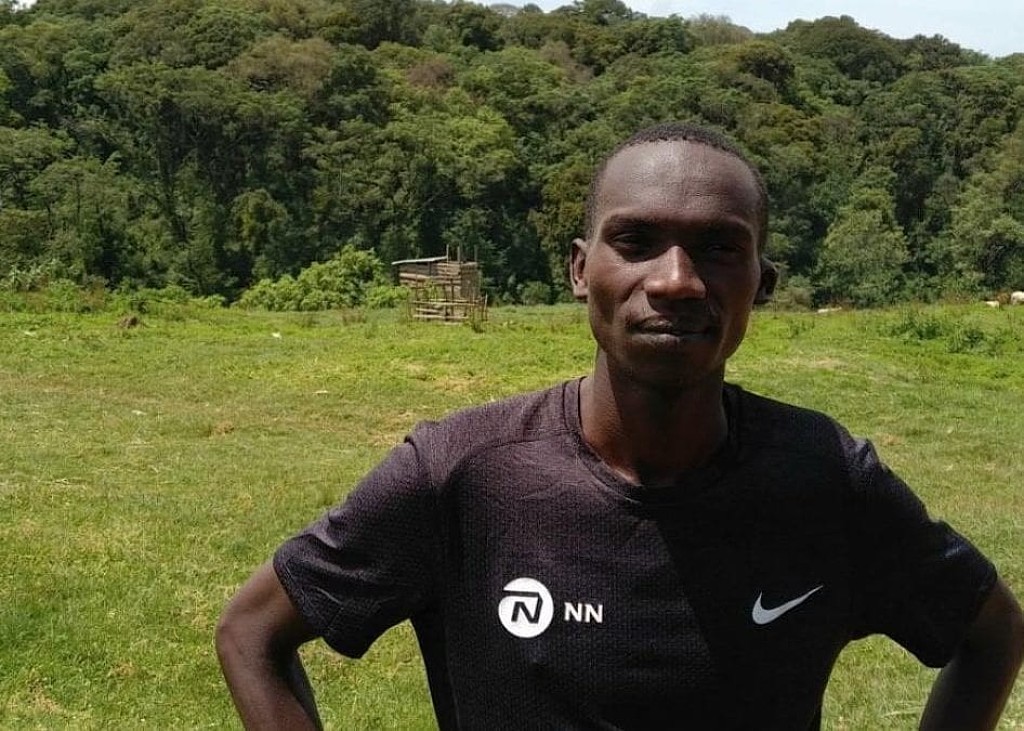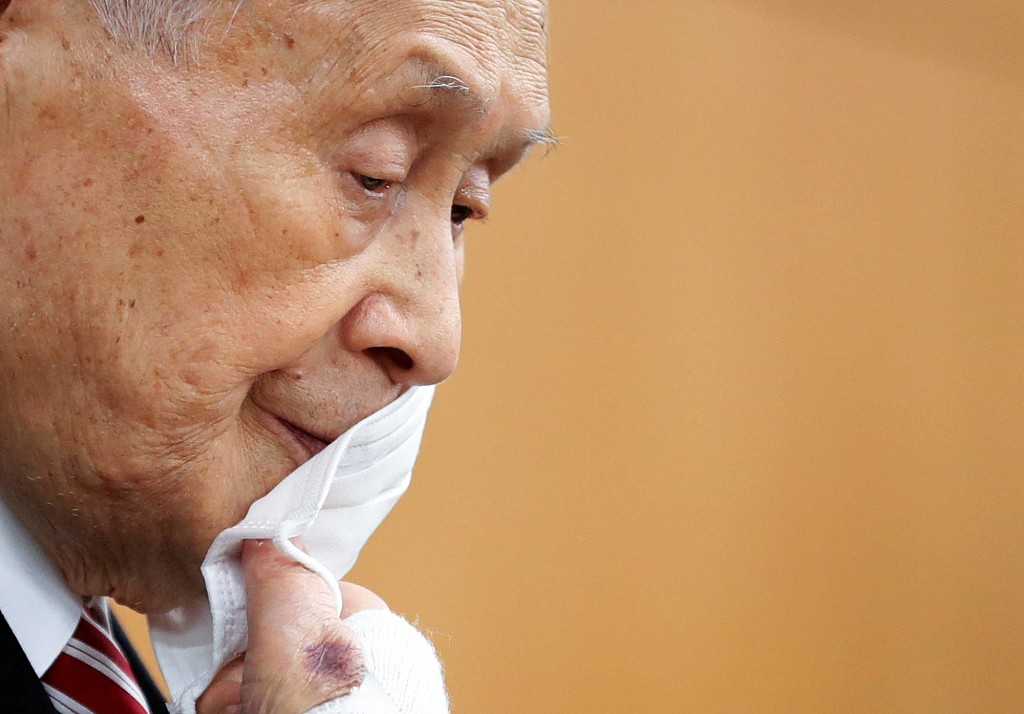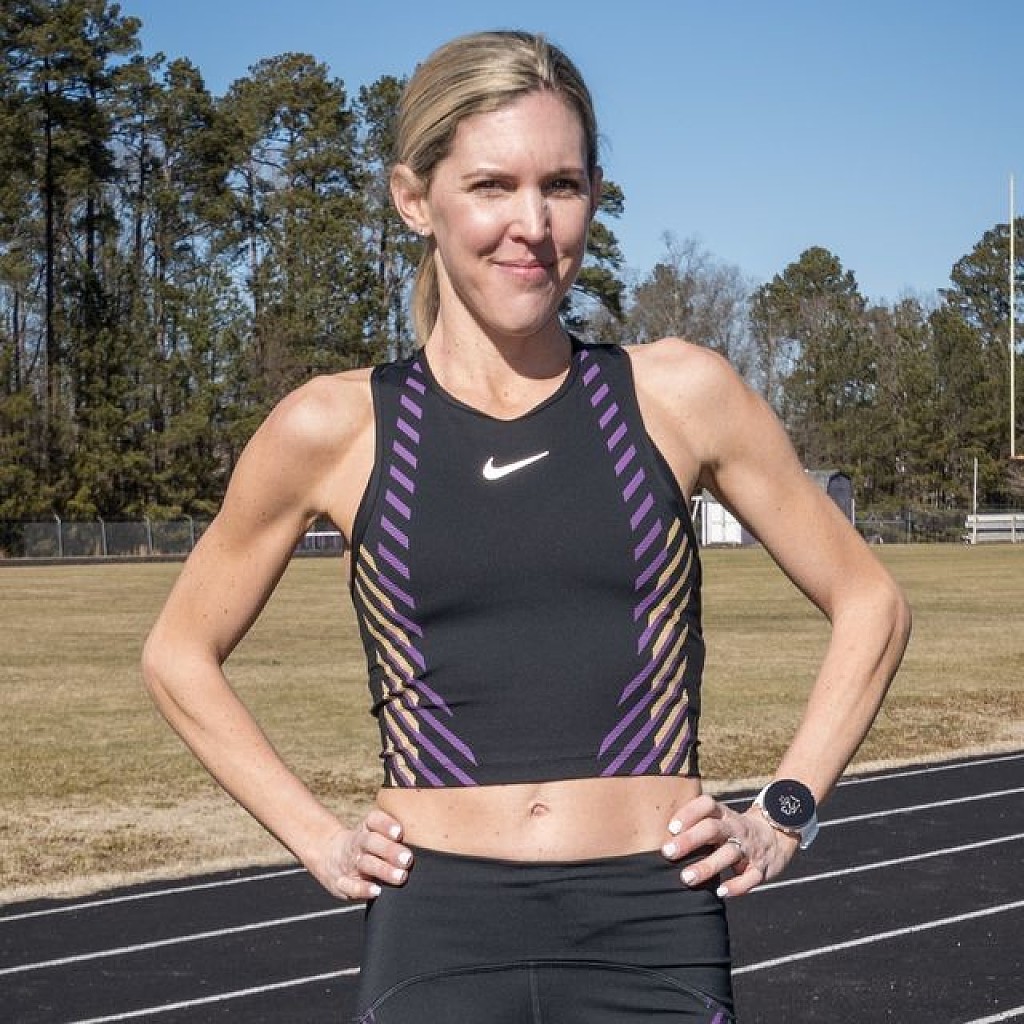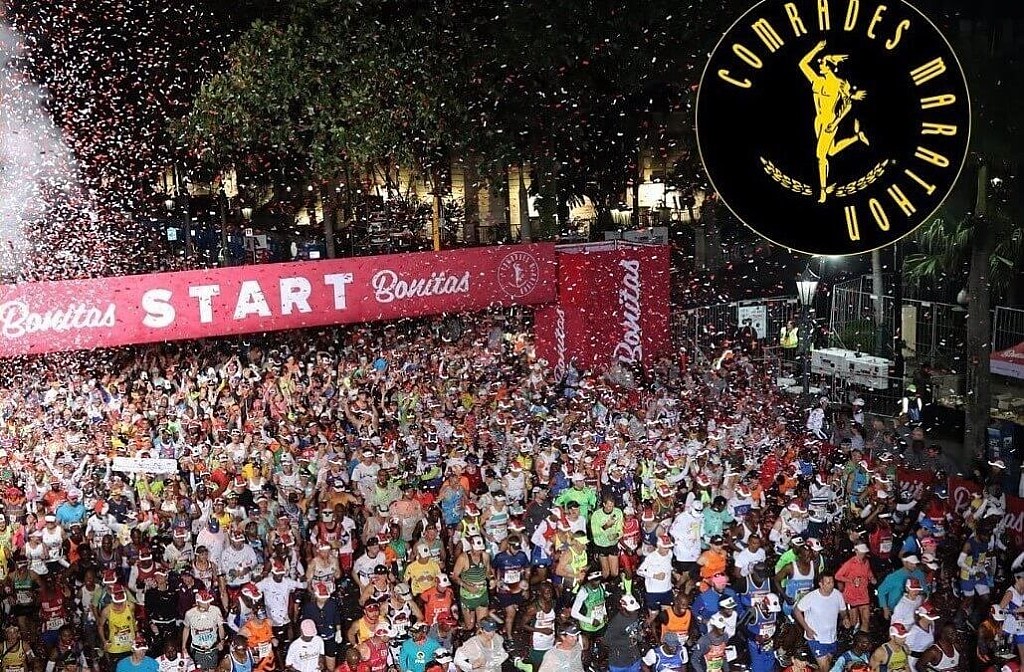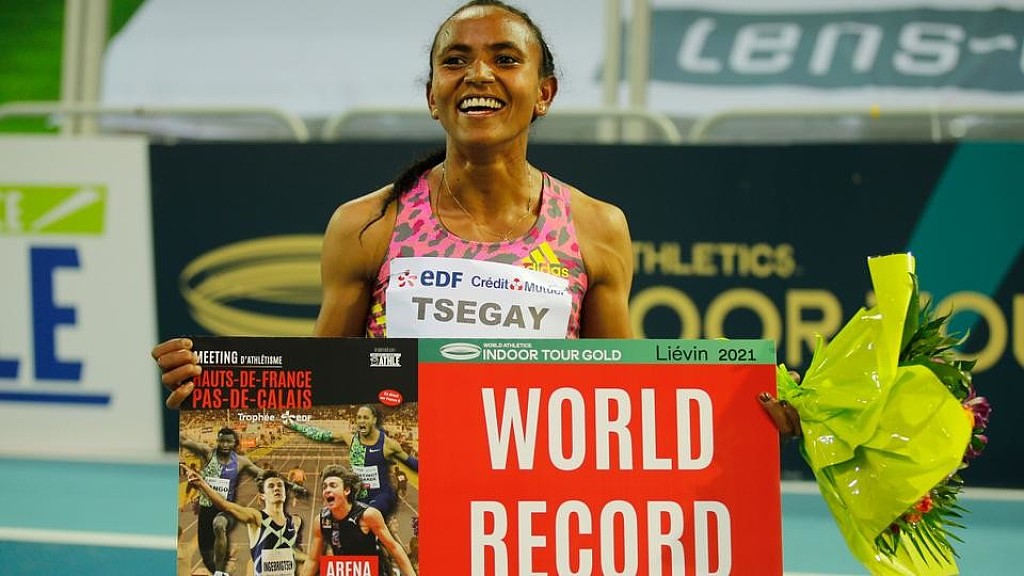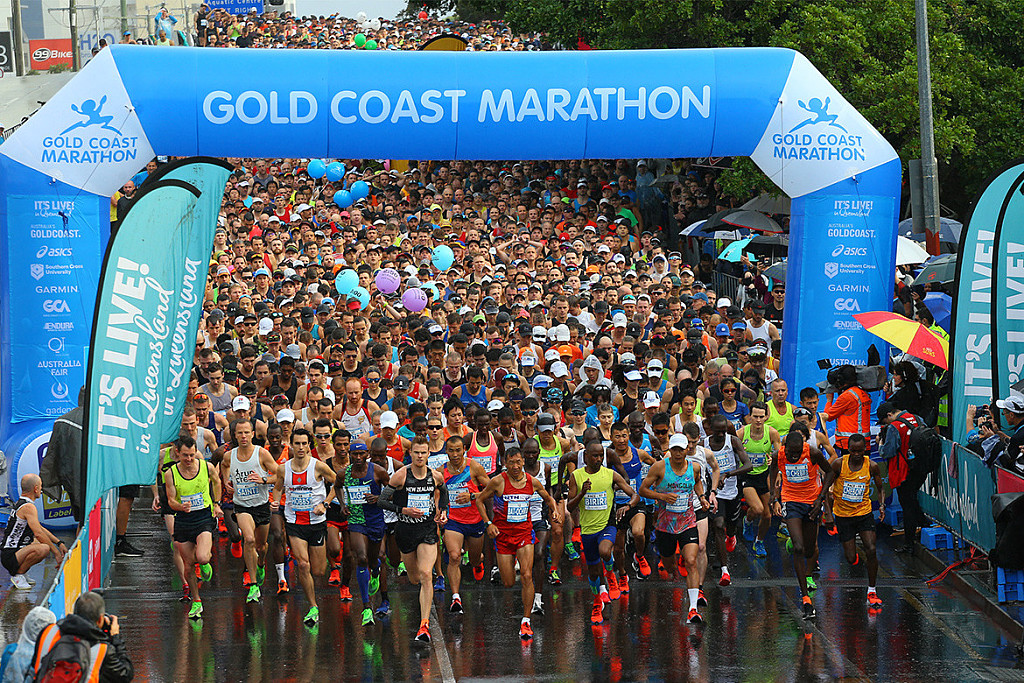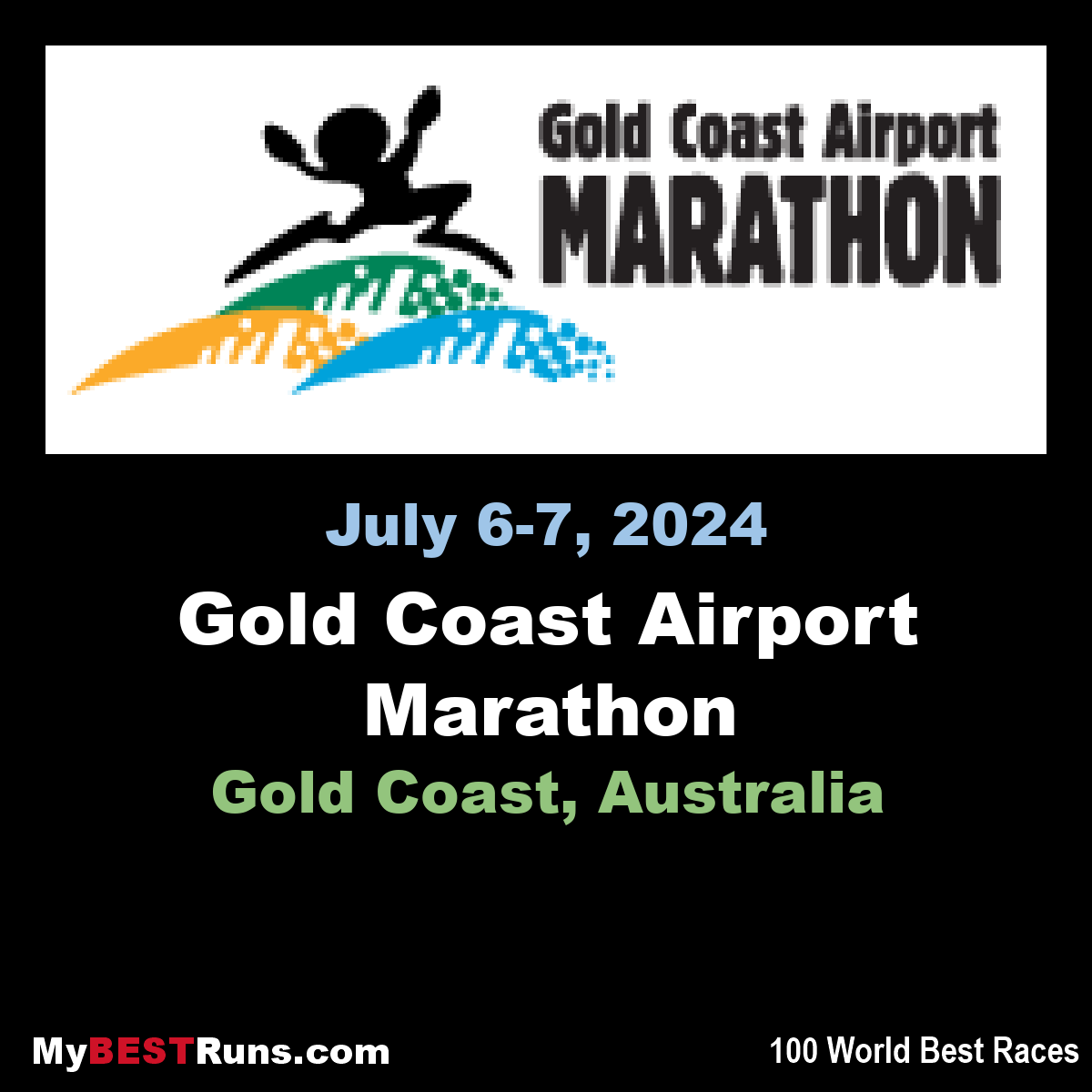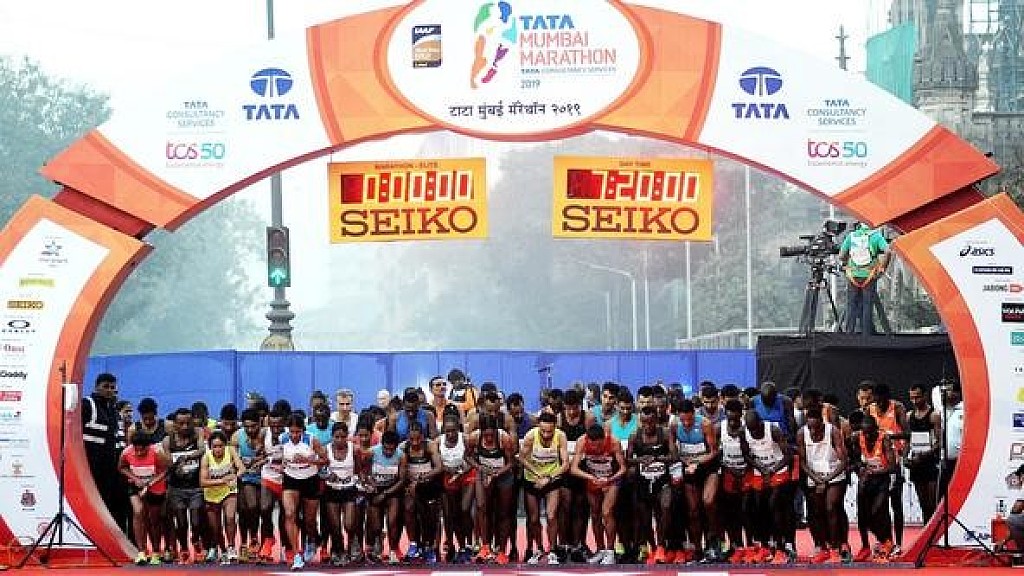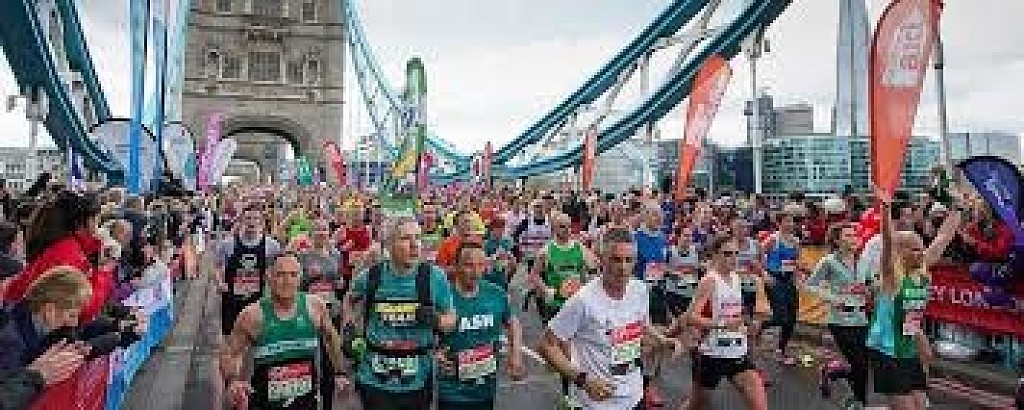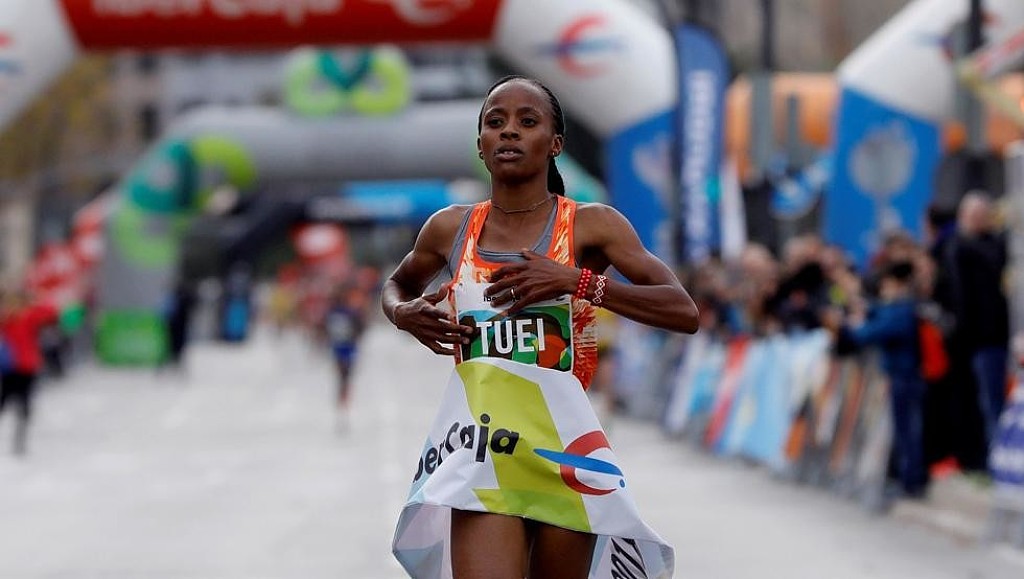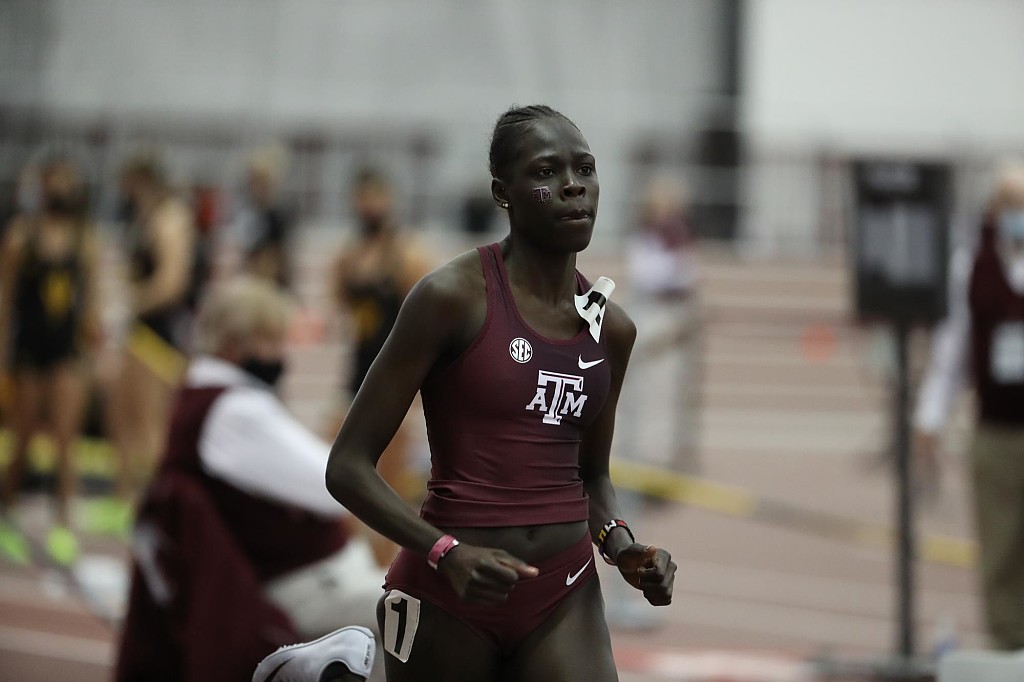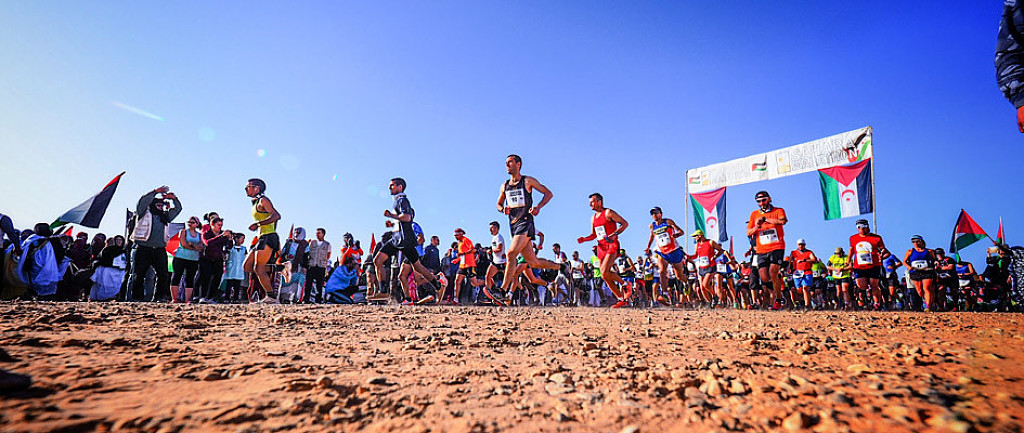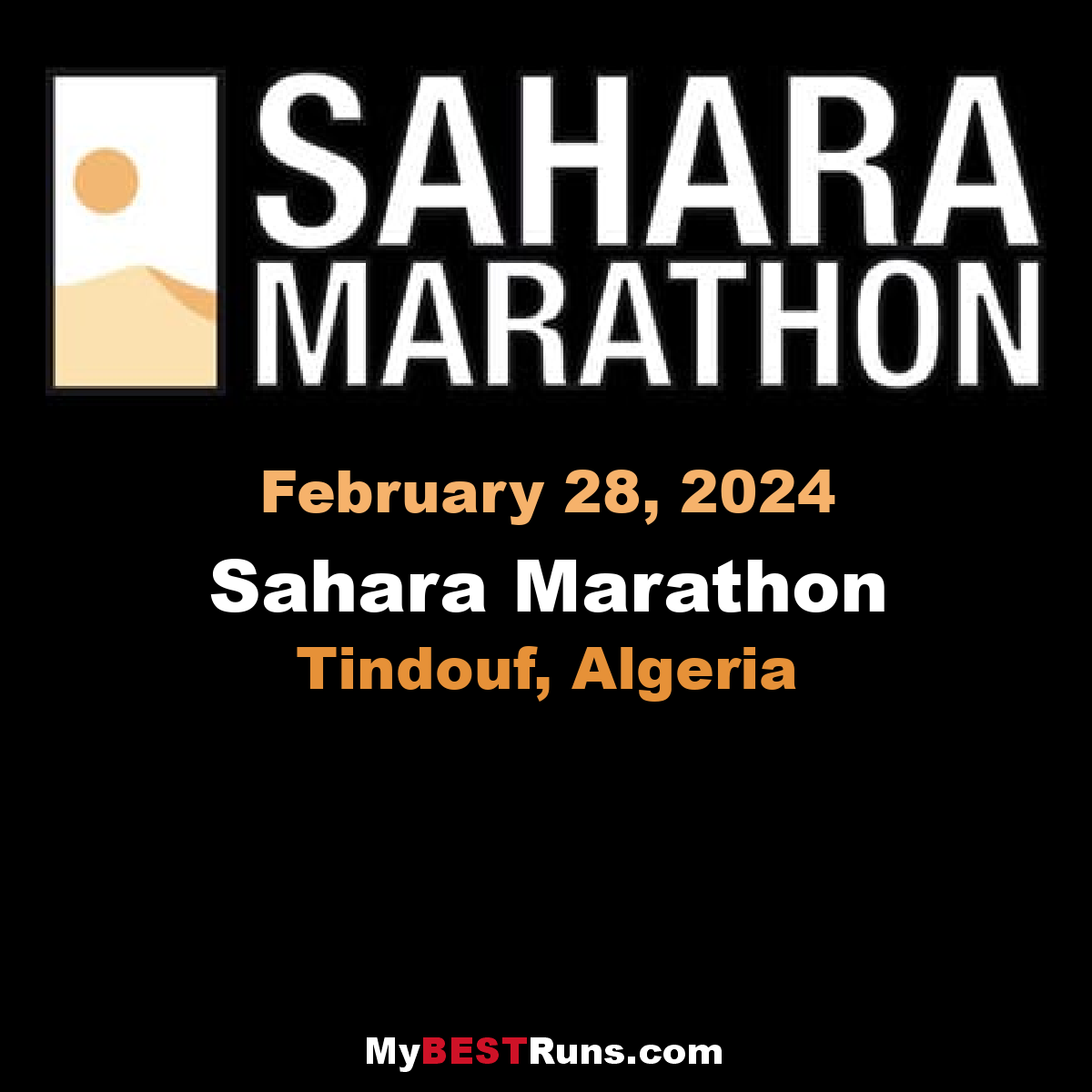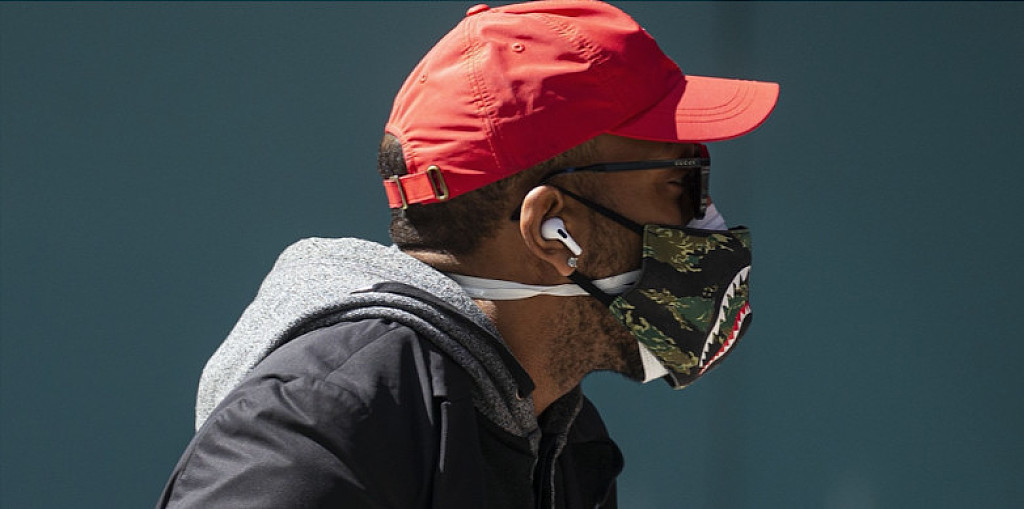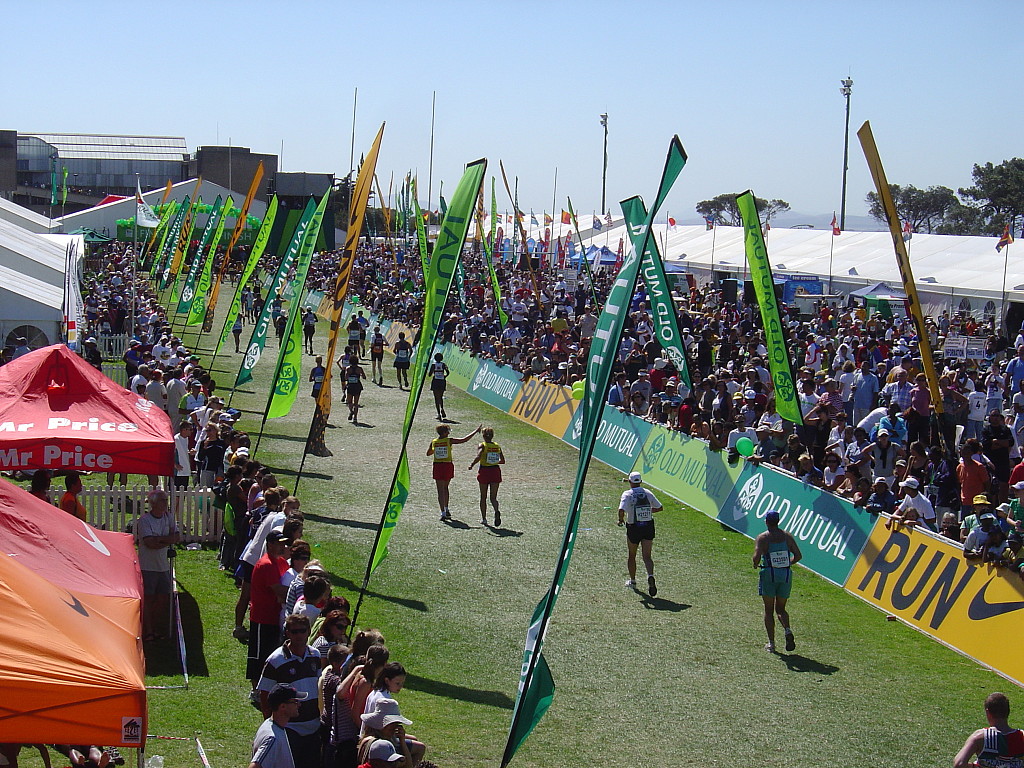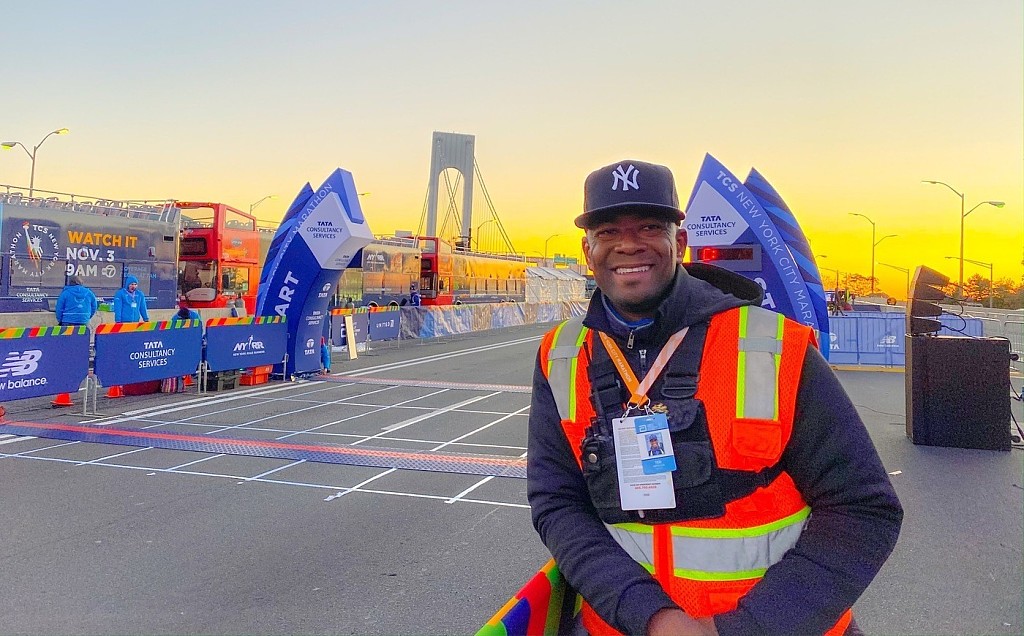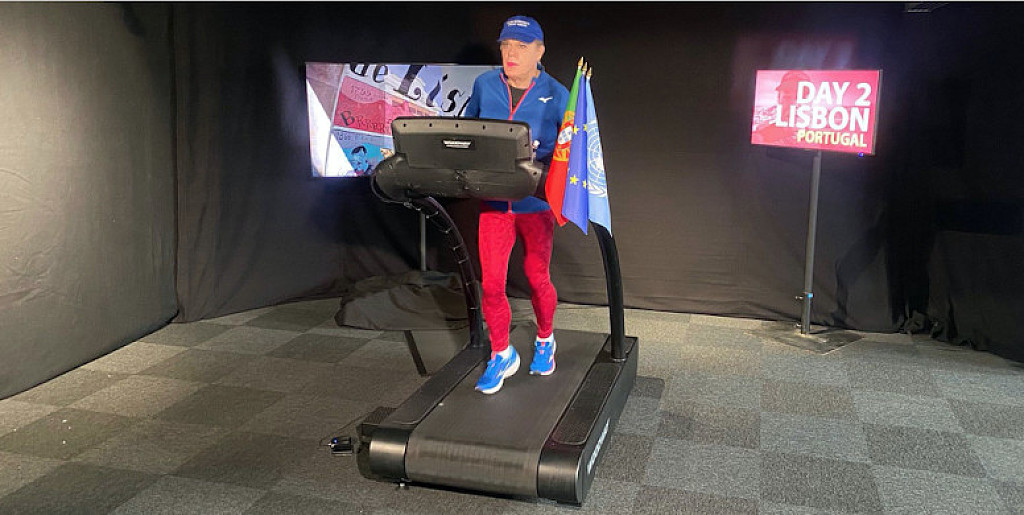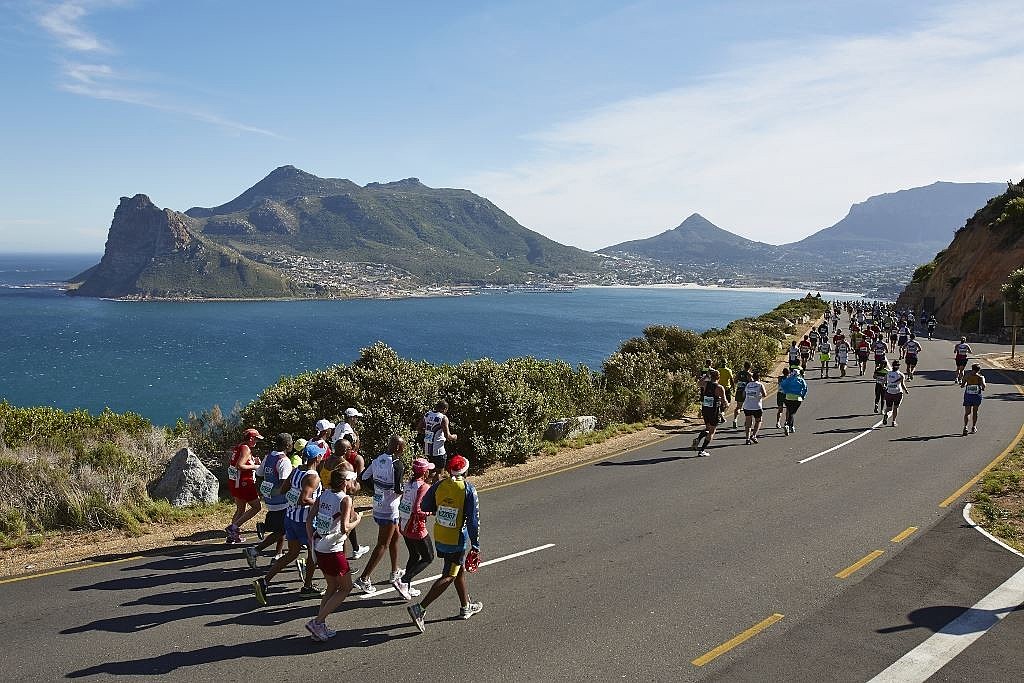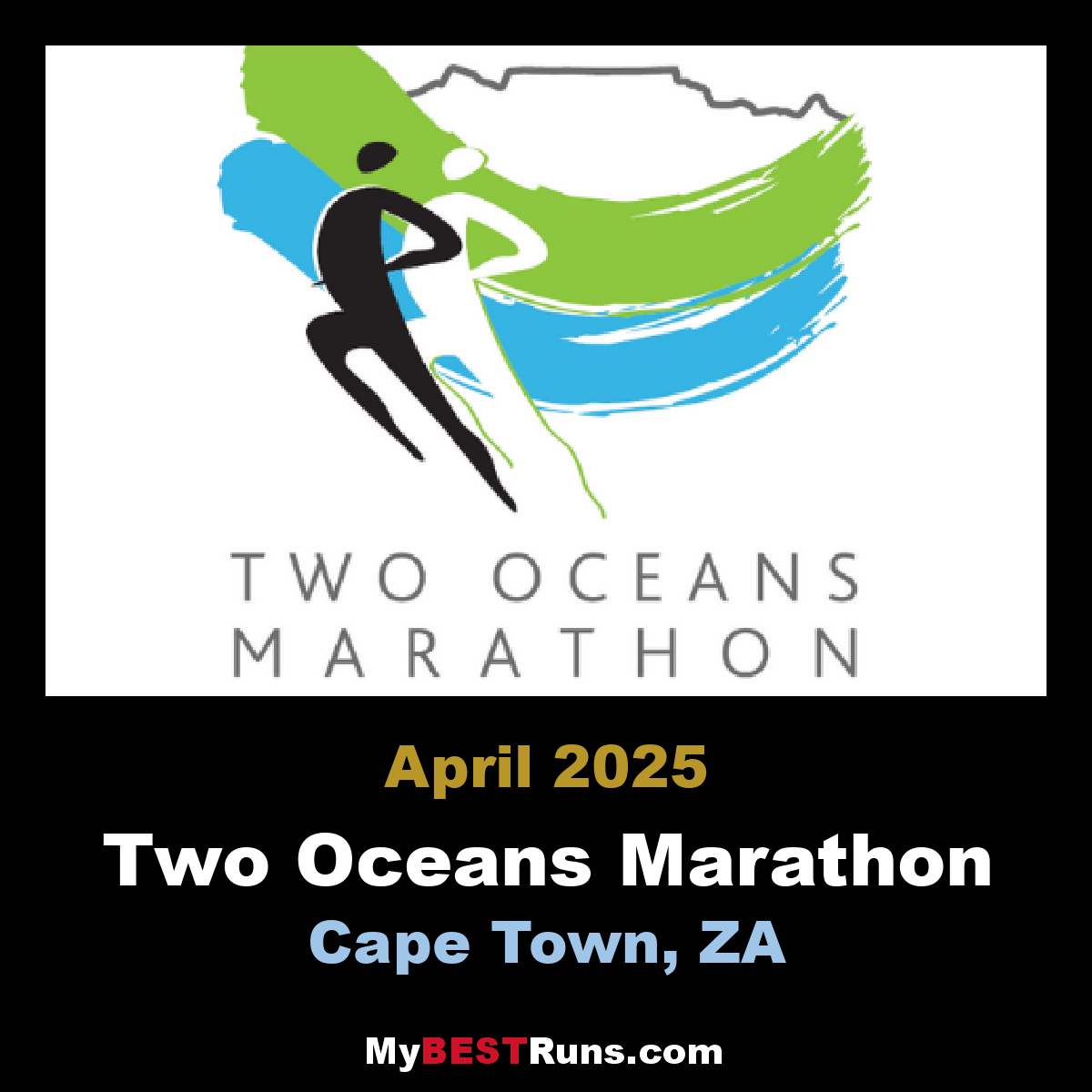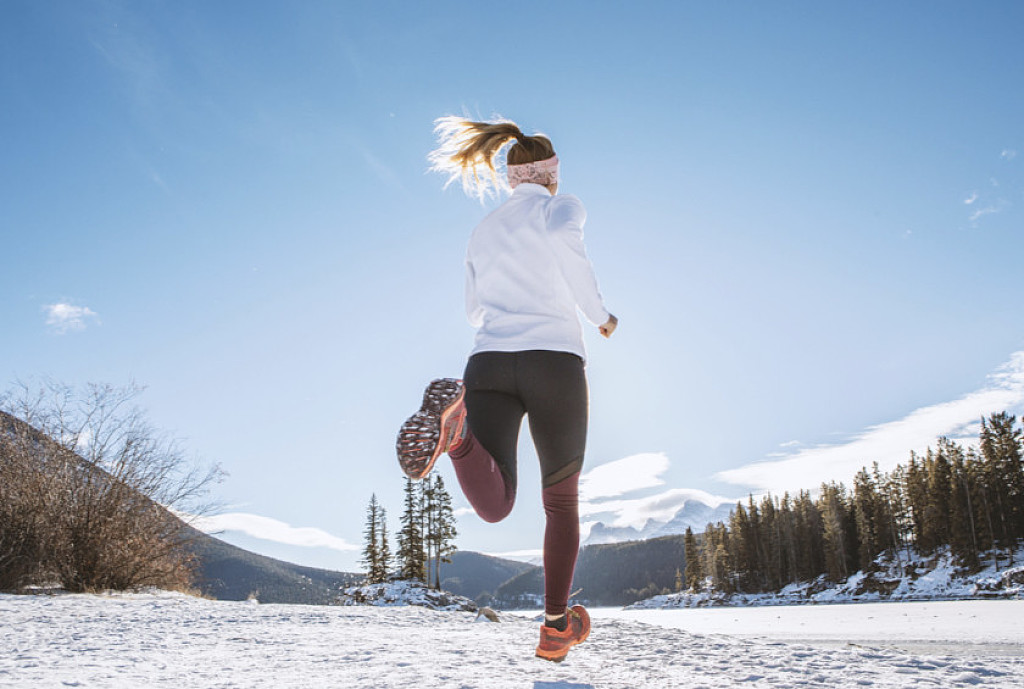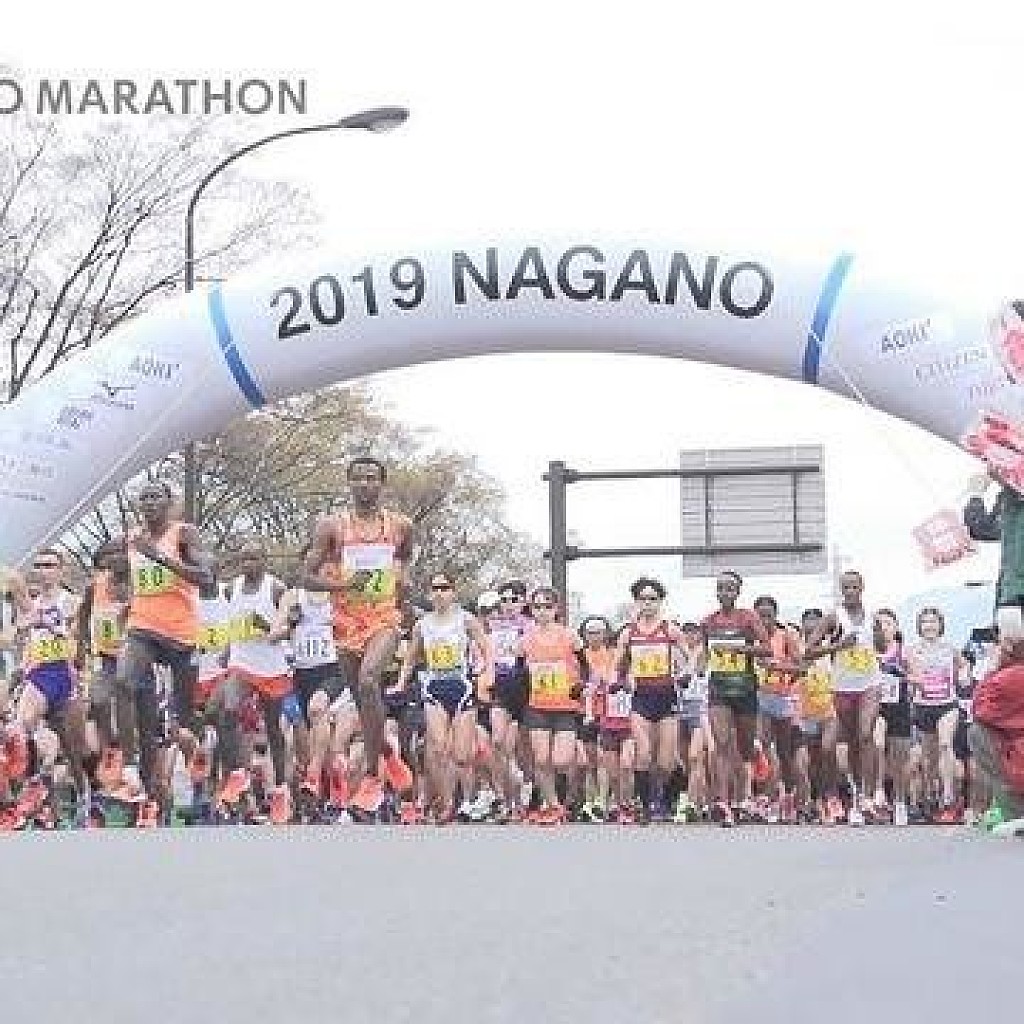Running News Daily
Running News Daily is edited by Bob Anderson in Mountain View, California USA and team in Thika Kenya, La Piedad Mexico, Bend Oregon, Chandler Arizona and Monforte da Beira Portugal. Send your news items to bob@mybestruns.com Advertising opportunities available. Over one million readers and growing. Train the Kenyan Way at KATA Running Retreat Kenya. (Kenyan Athletics Training Academy) in Thika Kenya. Opening in june 2024 KATA Running retreat Portugal. Learn more about Bob Anderson, MBR publisher and KATA director/owner, take a look at A Long Run the movie covering Bob's 50 race challenge.
Index to Daily Posts · Sign Up For Updates · Run The World Feed
Saburo Kawabuchi declines offer to head Tokyo Olympics as Mori resigns
Saburo Kawabuchi, 84, a former Japan Football Association president and soccer player, will decline an offer to become head of the organizing committee for the Tokyo Olympics, Nikkei learned Friday.
Kawabuchi was slated to replace Yoshiro Mori, 83, as president of Tokyo 2020. Mori, who had said he would resign over sexist remarks he made during a board meeting held on Friday of last week, made that official.

"I resign as Tokyo 2020 president today," the former prime minister said. "The most important thing is to hold the Games in July, so I cannot be any hindrance to this aim."
Mori's appointment of Kawabuchi as successor, and the vague selection process had also been criticized. It is now unclear who will be appointed to the position, less than six months before the Olympics are due to start.

Mori had said during a meeting of the Japanese Olympic Committee in Tokyo on Feb. 3 that board meetings with women "take so much time." Because of their "strong sense of competition," he said, if one person raises their hand, others probably think, 'I need to say something, too.'
The remarks came during a discussion over efforts to increase female representation on the committee's board.
Mori withdrew his comments the next day and apologized to "everyone who was offended," saying the remarks "ran counter to the spirit of the Olympics and Paralympics."
Andrew Parsons, president of International Paralympic Committee, said in a Friday statement that he hopes "the domestic and international reaction over the last seven days can be harnessed" and "society places greater emphasis on diversity and inclusion, not just in terms of gender representation, but race, sexuality, and persons with disabilities."
(02/15/2021) ⚡AMPby Rurika Imahashi
Tokyo 2020 Olympic Games
Fifty-six years after having organized the Olympic Games, the Japanese capital will be hosting a Summer edition for the second time, originally scheduled from July 24 to August 9, 2020, the games were postponed due to coronavirus outbreak, the postponed Tokyo Olympics will be held from July 23 to August 8 in 2021, according to the International Olympic Committee decision. ...
more...Müller has become an Official Partner of the Torun 2021 European Athletics Indoor Championships
European Athletics has today announced that Müller, who develop, manufacture and market a wide range of branded and private label dairy products, are an Official Partner of the Torun 2021 European Athletics Indoor Championships, which will be held in the Polish city from 5-7 March.
European Athletics Interim President Dobromir Karamarinov said: “I am very pleased to welcome Müller as a new member of the European Athletics family. Müller were a National Sponsor of the Glasgow 2019 European Athletics Indoor Championships and are now upgrading their role to become a top tier partner for Torun.

“I would like to thank Müller for reaffirming their commitment to our sport, a partnership which I am sure will benefit all of us. As an Official Partner, Müller will not only receive an extensive range of onsite marketing benefits in Torun but also extensive European-wide brand exposure on free-to-air television thanks to our long-term deal with our Official Broadcast Partner Eurovision,” added Karamarinov.
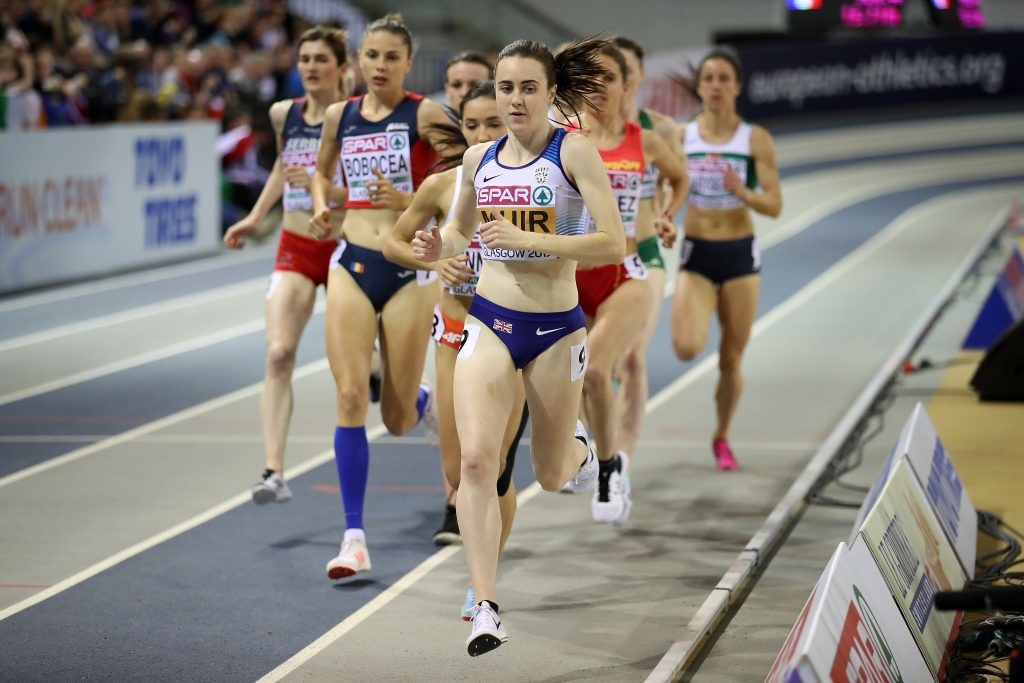
Michael Inpong, Strategy and Marketing Director at Müller UK & Ireland, said: “We are really excited to become an Official Partner of the Torun 2021 European Athletics Indoor Championships. It will be a proud moment to see the famous red Müller logo at such a prestigious event. It is a partnership that makes sense, as our aim is to add taste to life and inspire people to live happier and healthier lifestyles.
We are confident that by working together with European Athletics we can do just that.”European Athletics CEO Christian Milz commented: “The fact that an international consumer brand as recognisable as Müller is joining our roster of top tier partners for the Torun 2021 European Athletics Indoor Championships is testament to the importance of this event.
It also demonstrates a high level of trust and confidence in the work that European Athletics and the Local Organizing Committee have put in over the past months in order to be ready to stage this first major athletics event in 2021.”
Müller joins SPAR, Le Gruyère, LIQUI MOLY and Toyo Tires as a top tier partner of European Athletics, along with Eurovision as the Official Broadcast Partner, Atos as Official Digital Partner and MONDO as an Official Supplier of Torun 2021.
(02/15/2021) ⚡AMPEuropean Athletics Indoor Championships
Witness six sessions of action-packed sport over three days of intense competition as some of the best athletes in the world compete for prestigious European titles. Don’t miss the opportunity to witness this thrilling event and get closer to the action. ...
more...2021 Marine Corps will hold 17.75km event on March 20
The Marine Corps Marathon Organization (MCMO) will be hosting a limited-capacity, in-person, live version of the Marine Corps 17.75km on Saturday 20 March.
It will be held in a new location aboard Marine Corps Base Quantico. The event has previously been hosted in Prince William Forest Park.
Beginning on Tuesday 16 February runners who deferred from the cancelled 2020 event will be invited to opt into the live version, followed by runners registered for the virtual event. Those registered for the virtual 17.75km may opt into the in-person event beginning on Thursday 18 February. Further instructions will be sent to the e-mail address provided by participants during registration within the next few days.
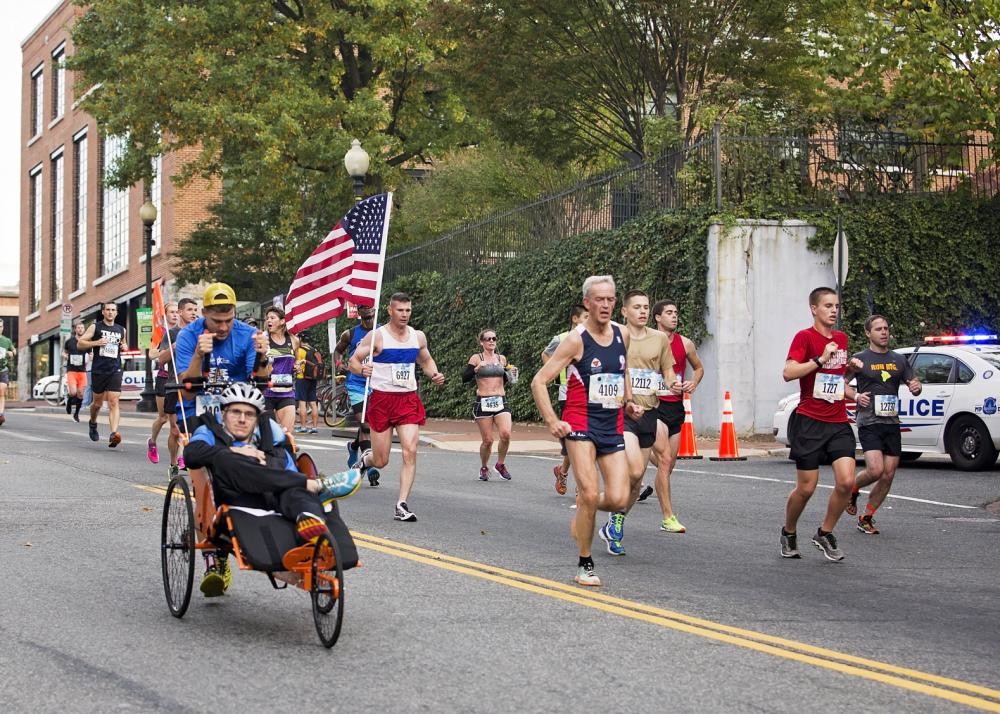
Any remaining entries available for the limited in-person 11.03-mile event will then be opened to the general public on Monday, 22 February
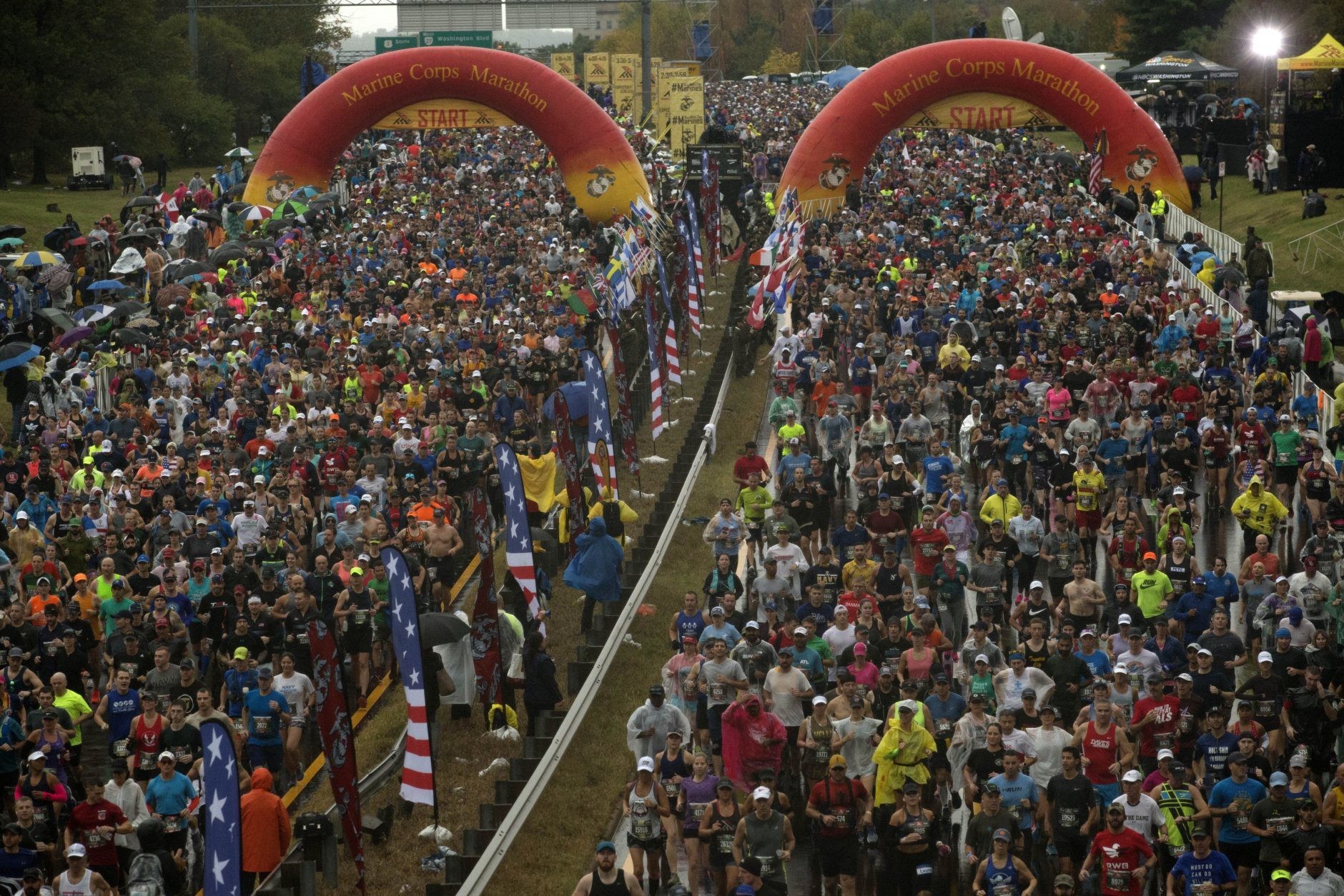
The field of 500 participants will be divided into two social-distanced, separate start times to be held at 08.00 and 10.00.
Virtual 17.75km registration remains open at www.marinemarathon.com. Runners must register before 18 February for an opportunity to opt into the live version. All finishers receive a Tun Tavern-themed shirt, finisher medal and collectible bib.
(02/15/2021) ⚡AMPMarine Corps Marathon
Recognized for impeccable organization on a scenic course managed by the US Marines in Arlington, VA and the nation's capital, the Marine Corps Marathon is one of the largest marathons in the US and the world. Known as 'the best marathon for beginners,' the MCM is largest marathon in the world that doesn't offer prize money, earning its nickname, “The...
more...Alternative therapies for runners: do they work?
As runners, we will do just about anything to keep ourselves injury-free so we don’t have to miss even a single day of training. For that reason, we’re constantly on the lookout for the latest gadget or trend in therapy that promises to vanquish all of our aches and pains for good. Over the years, many alternative therapies have become popular, and some of them more effective than others. We spoke with Blaise Dubois, sports physiotherapist and former consultant with the Canadian national track and field team, who explained which therapies work, and which ones may not be worth your money or time.
First, Dubois explains that there is a difference between what is working for prevention, and what is working for treatment, as well as what is science-based and what is working in the clinical setting. For many of the therapies we will be discussing, there appears to be more clinical evidence that they work (i.e., runners are using them and feeling some amount of relief) than actual scientific proof that they are effective. He notes that even without robust scientific evidence, if something feels as though it is working for you, there may be at least some therapeutic value in it.
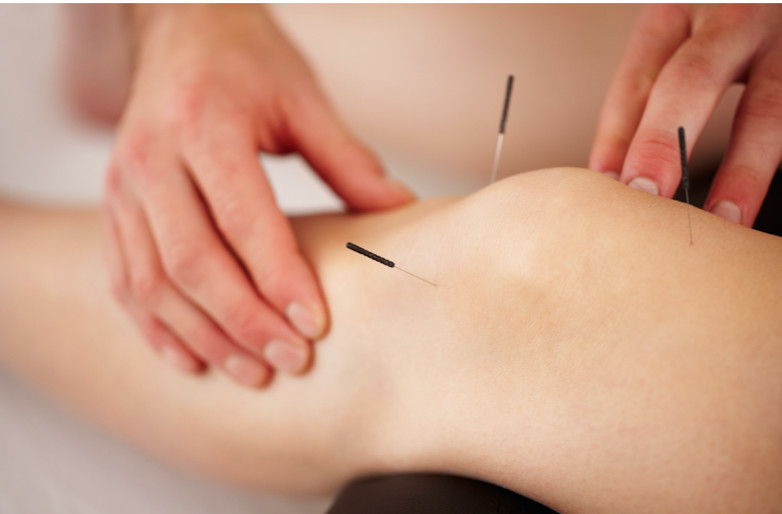
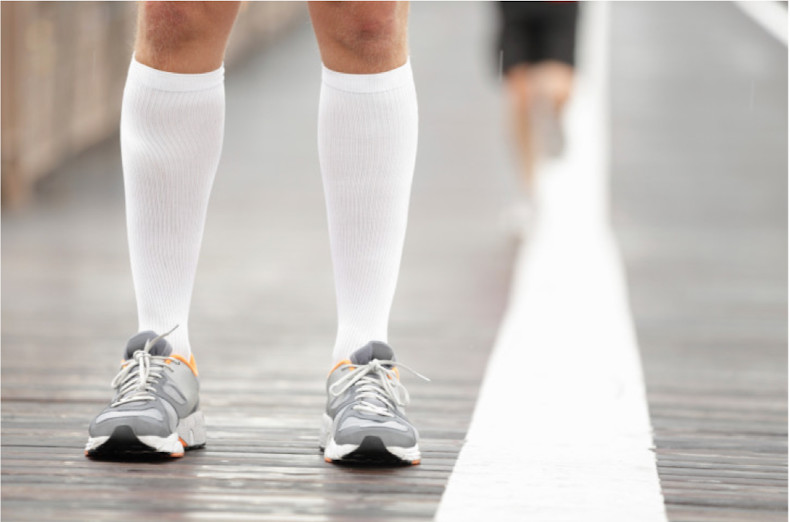
Acupuncture
Acupuncture has been popular for many years, as both a preventative therapy and as a treatment for injury. Despite its popularity, the scientific evidence that it actually works is less than convincing.
“There is absolutely no evidence that acupuncture works in prevention,” says DuBois, “but there is some evidence of it working for the treatment of some conditions.”
Interestingly enough, he says studies have shown that ‘placebo acupuncture’ typically works just as well as the real deal. Why? Because if the person believes that the treatment is working, it will. In the same way, real acupuncture doesn’t work if the person doesn’t believe that it will. This doesn’t mean that acupuncture has zero value as a treatment, but in most cases it will only work if you believe it will.
Dry needling
Dry needling is similar to acupuncture, but it goes deeper into the muscle. The goal of the procedure is to treat underlying trigger points (tight bands in a muscle fibre) that can disrupt function, restrict range of motion or cause pain and tenderness. Research has indicated that it is a safe and effective approach to managing pain, but it is rarely used as a standalone procedure, and is typically part of a larger physiotherapy treatment plan.
Epsom salts bath
Epsom salts break down into magnesium and sulfate in water, and the theory is that when you soak in an Epsom salt bath, these get into your body through your skin. There is no scientific evidence to prove that this works, but simply soaking in warm water can help relax sore and tired muscles. Dubois says that in his opinion, an Epsom salts bath is no better than a regular bath.
Ice bath
Dubois says that there are a few systematic reviews on ice baths showing that their subjective effect is greater than the objective effect. In other words, there is less scientific evidence to prove that ice baths work, but athletes tend to report that they help reduce delayed-onset muscle soreness (DOMS).
Dubois says ice baths are not a good option for injury prevention because DOMS is a natural part of the process for muscle adaptation from training, and reducing it too much can actually slow down your progress. For this reason, he recommends that athletes who want to use ice baths only use them near the end of the season when they want to recover faster because they have many competitions in succession. He suggests using ice baths sometimes during the season as a test to see how your body reacts, but to only do so when it’s really necessary.
“When you have a big competition, don’t use a method that you’ve never used before, because you don’t know how your body will adapt,” he says.
Compression socks
“Compression socks are exactly the same thing as ice baths,” says Dubois. “Subjective results are greater than objective results.”
He says that if you think you’re getting some benefit from them, you should use them at the appropriate time in your training so as not to impede muscle adaptation. Additionally, if you use compression socks every day and you feel they allow you to train more, Dubois says that this could be dangerous because you could become dependent on them, and if you forget them one day, your workout or your race will be ruined.
Foam rolling, massage, and massage guns
All of these types of therapies provide a neurophysiological effect, and while Dubois says that he loves getting massaged himself, he admits that there are many myths surrounding how or why it might be effective.
“They don’t decrease lactic acid, they don’t increase vascularization of the tissue,” he says.
There are neurophysiological benefits to massage, but there is no specific science showing that you will recover faster if you receive massage or use a massage gun or foam roller. Additionally, if you’re using a self-massaging tool, there is the possibility (although Dubois says it is small) that you could be too aggressive with it and end up causing further injury. He does not recommend using a foam roller or massage gun before your race or workout, because it could decrease your muscle tension and actually make you more prone to injuries. Instead, he suggests using it before bed.
Reflexology
Dubois likens this type of therapy to acupuncture, noting that whether it works is more dependent on patient belief than anything else. He admits he is not an expert on reflexology, but says that there is no scientific evidence that it is effective.
The bottom line
Mechanical Stress Quantification in running
View on the original site.
Does this mean you should never use any of these types of therapies? Not necessarily — in fact, Dubois will use some of them for his own patients from time to time. He explains that just because the science is inconclusive does not mean we shouldn’t try it, but we have to be critical of everything we see or hear about. So what does Dubois recommend for runners who want to prevent injury?
“80 per cent of the job of preventing injury is load management,” he says. “We need to look at all the stress the person is putting on their body, and we need to be sure that they are in a good zone to create adaptation.”
Runners can help themselves out by having the proper shoes and managing their training volume to a level their bodies can handle, but Dubois says that the two most important ways to prevent injuries are eating well and sleeping well. These two things are far more important than any therapy tool or practice you use.
(02/14/2021) ⚡AMPby Running Magazine
Did You Come Up With the Best Idea Ever on the Run? Brooks Wants to Help Make It Come True
That invention or business venture can finally come to fruition with Brooks’s backing of $25,000 to $100,000
From now until March 3, runners can submit their ideas to Brooks’s Runfulness Project for a chance to have their idea become a reality, with help from The Run Fund.

One runner will win $100,000, and four others will receive $25,000.
The Runfulness Project is in association with the release of the brand’s most cushioned shoes, the Glycerin 19 and Glycerin 19 GTS.
Ever feel that sensation on a run when you’re experiencing both a runner’s high and shower thoughts? You know what I’m talking about: that moment where you feel euphoric, forget about your feet hitting the pavement, and all of the sudden a brilliant idea pops into your head. It could be an invention, a business venture, or a community program
Brooks calls this phenomenon “runfulness”: noun, 1) mindfulness unlocked by running.
In conjunction with the release of the Glycerin GTS 19 (formerly the Transcend) and the Glycerin 19—Brooks’s most cushioned shoe that makes us mortals feel like we can run on clouds—the brand has launched The Run Fund, similar to last year’s fellowship program by Tracksmith, to help your on-the-run ideas come true.
Do you have a dream of building a neighborhood playground, creating a dog communication device, or opening a sweet and savory ice cream shop? You can submit your idea, in essay or video form at brooksrunning.com. Four runners will receive $25,000 from the Run Fund, and one grand prize winner will receive $100,000.
The panel of judges who’ll narrow down the top five entries are “individuals who know a thing or two about starting and running successful companies or turning ideas into action,” said the company. The panel includes:
Jay Ell Alexander, owner and CEO of Black Girls RUN!
Hooman Radfar, co-founder and CEO of Collective
Rodney Hines, CEO at Metier Brewing Company
Kate Glantz, head of social impact at Luma Pictures.
The top winner will be determined by the running community via social media. So go out for that run, create a proposal, and start your submission at Brooks’s website now.
(02/14/2021) ⚡AMPby Runner’s World
14:43! Chepkoech breaks world 5km record in Monaco
Beatrice Chepkoech broke the world 5km record at the Monaco Run on Sunday (14), clocking 14:43*.
The performance by the 29-year-old Kenyan bettered the previous record in a mixed gender race of 14:48 set by Caroline Kipkirui in 2018, and is also one second faster than Sifan Hassan's 14:44 record for a women's-only race, until this morning the fastest time ever produced over the distance since the 5km was introduced as a world record event in November 2017.

Chepkoech battled strong winds during the early stages of the race along the Monaco coastline but fought on over the latter stages to claim a second world record, this one joining her 8:44.32 record in the 3000m steeplechase set in 2018, also in Monaco.
"I'm so happy because I didn't expect it," said Chepkoech, the 2019 world champion in the steeplechase. "It was cold and there was a lot of wind, but I tried to follow my pace maker and everything was perfect."
She may not have had the world record in mind initially, but Chepkoech did set her sights on victory from the outset.
Despite the winds, Chepkoech had already forged a six-second lead just 500 metres into the race, before reaching the first kilometre in 2:57, 15 seconds clear of Meraf Bahta, her nearest competitor. Splits of 2:59 for the second kilometre and 3:01 for the third followed before she and pacesetter Luuk Maas decided to up the tempo as they approached the Larvotto Tunnel portion of the course, at the northeastern edge of the Principality's main port, a second time.
Since the winds had died down, she said, "my pacemaker told me ‘we can do it, let’s push it’."
She did.
After a 2:57 fourth kilometre, Chepkoech ended her morning's work with a 2:47 closing kilometre to take ownership of the world record.
Chepkoech had already illustrated her strong early 2021 form with an 8:34.21 career best over 3000m indoors in Lievin on 9 February. She'll race next at the Copernicus Cup leg of the World Athletics Indoor Tour Gold meeting series in Torun, Poland, on 17 February before returning home to resume her training.
Joshua Cheptegei, who set the men's world record of 12:51 at this race last year, successfully defended his title, clocking 13:13.
The 24-year-old Ugandan ran at or near the front from the gun but it was clear early on that the conditions would not be conducive for a serious assault on his year-old record.
"The wind was incredibly difficult," said Cheptegei, who covered the opening kilometre in 2:44, 13 seconds behind the pace that propelled him to the world record last year. Kilometre splits of 2:41, 2:37 and 2:38 followed before he closed with a 2:32, the fastest of the race.
Kenyans Bethwell Birgen and Davis Kiplangat clocked 13:17 and 13:19 to round out the top three with Morhad Amdouni of France fourth in 13:19, one second outside of the European record set by compatriot Jimmy Gressier at this race last year.
(02/14/2021) ⚡AMP
Herculis 5k
The 5km Herculis course runs from the Port Hercule to the Quai Albert 1er and through the Boulevard Princesse Grace, give yourself a chance to run across the principality of Monaco and to participate in a fast, exclusive and official race. ...
more...Three American Records and 10 National Records Fall at the New Balance Indoor Grand Prix
Elle Purrier’s indoor two-mile American record was just one of many highlights in New York.
Many of the best track and field athletes in the world returned to competition—some for the first time in several months, due to the COVID-19 pandemic—at the New Balance Indoor Grand Prix on February 13. The event, typically held at the Reggie Lewis Center in Boston, was relocated to the Ocean Breeze Athletic Complex in Staten Island, New York, because the Boston venue is serving as a mass vaccination site.
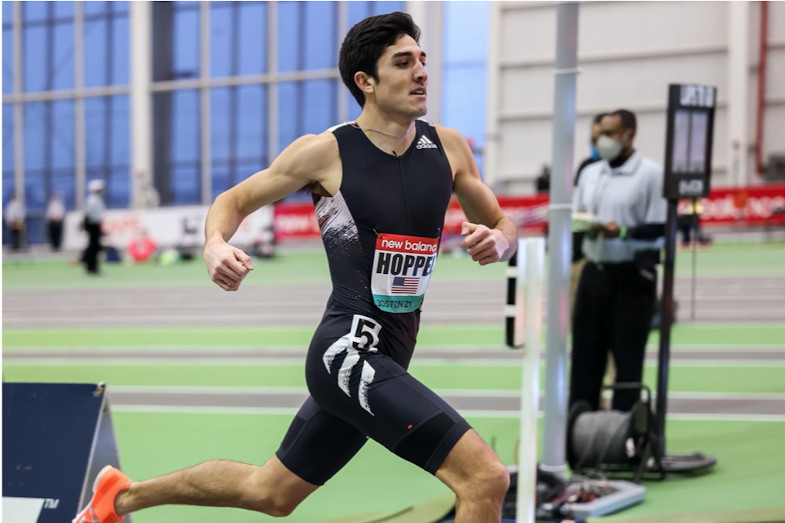
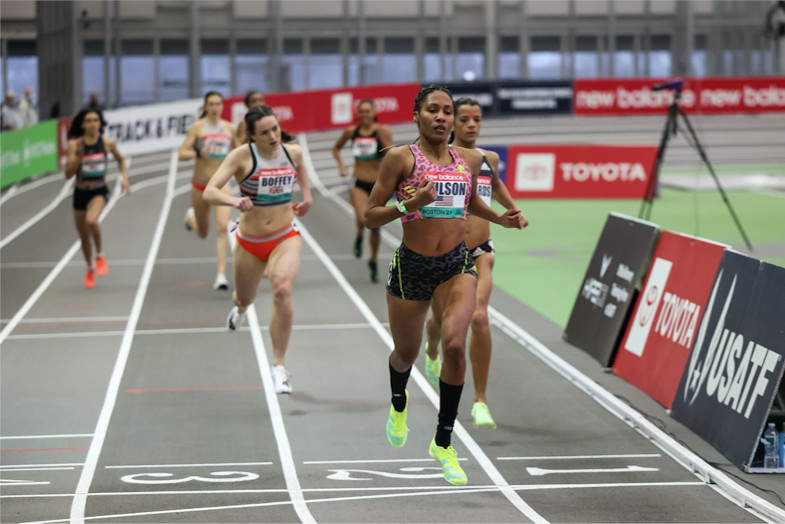
And the athletes made the most of this racing opportunity by breaking three American records and 10 national records total on Saturday.
Almost one year after shattering the American record in the mile at the Millrose Games, Elle Purrier broke another national record by winning the women’s two-mile in 9:10.28. Her time improves on the previous American record (9:18.35) set by Jenny Simpson in 2015. Purrier’s performance is also the third-fastest two-mile ever run in history. For Purrier, the victory follows a runner-up finish and 2:02.05 personal best in the 800 meters at the Prickly Pear Invitational in Phoenix, Arizona on February 6—her first race of 2021.
“I felt pretty confident going in, but you never know when you’re just training,” Purrier told journalists in a virtual mixed zone. “[Coach] Mark [Coogan] felt pretty confident about my fitness level, but after that [race] I’m feeling pretty good now.”
Looking back on her mile record a year ago, Purrier—who trains under Coogan with the New Balance group in Boston—said navigating the challenges of 2020 brought some silver linings to her process.
“Millrose was probably one of the biggest highlights of my career, and I think stopping after that was kind of a bummer because I felt like I was on a roll and the team was on a roll,” Purrier said in the mixed zone. “But we were able to kind of just wait it out this summer and get into some great training. And I went home and I find a lot of happiness there, and so I think that built this up to another great training block this fall and this winter.”
The 2018 NCAA mile champion followed the pacemaking set by Leah Falland, who brought the field through the first mile in 4:41. For the remaining laps, Purrier and steeplechase world champion Emma Coburn ran 1-2 in the front. With three laps to go, Purrier broke away from Coburn to seal the win and the record, running the final 400 meters in 63 seconds.
Five seconds behind Purrier, Coburn finished second in a personal best of 9:15.71. In the same race, Julie-Anne Staehli of Canada (9:22.66) and Amy-Eloise Markovc of Great Britain (9:30.69) broke national records for their respective countries.
Hoppel Sets a World Best for 2021
About 20 minutes later, Bryce Hoppel followed the momentum by running a world lead and U.S. national record in the 1,000 meters. The former Kansas Jayhawk and NCAA 800-meter champion broke the previous American record (2:16.76) set by the late David Torrence in 2014.
“It means everything,” Hoppel said. “It’s just something you dream of as a kid, and I couldn’t have done it without all the support that I have, my family, and my coach. They all make it possible. I mean, it feels awesome to get it. That was what I was going for.”
Behind Hoppel, Marco Arop of Canada finished second in 2:17.10, and Charlie Grice finished third in 2:17.20, a national record for Great Britain.
An American Record for Donovan Brazier
Two weeks after being forced to withdraw from the American Track League meet due to COVID-19 exposure, Donavan Brazier returned to the track with a vengeance.
The 2019 world champion lowered the American record by winning the men’s 800 meters in 1:44.21, more than two seconds ahead of runner-up Jamie Webb of Great Britain. Brazier set the previous American record (1:44.22) at the Millrose Games last year.
After Saturday’s victory, Brazier said his coach, Pete Julian, didn’t want him to hold back, and the strategy proved to be successful.
“Pete wanted me to go out and die. That was literally what he said, word-for-word,” Brazier said. “He said, ‘go out hard, see if you can hold it, and we’ll just gauge where you’re at from a fast pace.’ ... I don’t think I’m quite where I was at in Millrose last year, but I still think I’m in decent shape.”
Ajeé Wilson Returns to Competition
The women’s 800 meters featured an unexpected performance from a four-time world championship medalist and American record-holder.
Ajeé Wilson was a late entry to the meet after receiving treatment for a hamstring injury earlier in the week. Unlike her signature racing tactic of leading from the gun, Wilson ran behind the race-leader Kaela Edwards until the homestretch, where she sprinted ahead to finish first in 2:01.79.
“Not knowing exactly how things will play out with my body, I wasn’t trying to take any chances and felt a little more comfortable hanging behind,” Wilson said. “That’s something that we’ve been working on in practice. We’re maybe five strong in our group now, so that definitely prepared me for today and just being comfortable and also making sure I was still in a good position so when I wanted to move, I could.”
The performance is Wilson’s first race since winning the 800 meters at the 2020 USATF Indoor Championships on February 15, 2020. After Saturday’s race, Wilson said she didn’t feel comfortable traveling for competition last year amid the COVID-19 pandemic, as she interacts with people who are more at risk of catching the virus. Instead, she focused on training at her home base in Philadelphia. Her next competition will be the Texas Qualifier in Austin, Texas from February 26 to 27.
“Although things aren’t much better, I'm feeling a little more comfortable with the precautions we're all taking to be safe,” she said.
Behind Wilson, Sophia Gorriaran—a 15-year-old high school sophomore from Rhode Island—finished fifth in 2:03.94. One week earlier, Gorriaran notched the standard to compete at the 2021 U.S. Olympic Team Trials by running 2:02.44 against a professional field at the American Track League meet in Fayetteville, Arkansas.
Two National Records in the Men’s 1500
The men’s 1500 meters featured two national records. Oliver Hoare—who trains under coach Dathan Ritzenhein with the On Running pro group in Boulder, Colorado—kicked to victory in 3:32.35, a national record for Australia. Jake Wightman of Great Britain finished second in 3:34.48, and Sam Tanner—a sophomore at the University of Washington—finished third in 3:34.72, breaking the national record for New Zealand.
The women’s 1500 meters was won by Heather MacLean who out-paced Cory McGee in the final lap to win in 4:06.32.
Michael Norman Races the 400 Meters for the First Time in a Year
For the first time since the 2019 World Championships in Doha, Qatar, track fans got to see Michael Norman compete in his signature event, the 400 meters.
The former USC Trojan and NCAA champion—who broke the world record in the indoor 400 meters (44.52) at the NCAA championships in 2018—battled with his training partner Rai Benjamin down the homestretch to secure the victory in 45.34. Benjamin finished second in 45.39.
“The instinct just kicked in,” Norman said. “We're very competitive at practice, especially when it comes to competition. So having that little fun practice rivalry going on, I couldn't have Rai beat me in the race, but he's an amazing competitor, so it was a lot of fun.”
In 2019, Norman failed to make the world championship final in Doha after suffering from an injury in the semifinals. He raced once in 2020—9.86 in the 100 meters at a COVID-adjusted meet in Fort Worth, Texas last July. After a long hiatus from competition, Norman said he felt pleased with the effort on Saturday.
“I’m feeling good,” Norman said. “There's a lot of work that needs to be done, but the main purpose of today was just to go out and compete, have fun and to kind of knock the cobwebs off because it's been over a year since I’ve run that distance.”
Another National Record for Shaunae Miller-Uibo
In her second meet of the year, Shaunae Miller-Uibo broke another Bahamian national record by running 50.21 to win the women’s 400 meters. The time makes her the eighth-fastest performer all-time indoors. The 2016 Olympic champion achieved the mark two weeks after breaking the national record in the indoor 200 meters at the American Track League meet, where she ran a personal best of 22.40.
World record-holder Keni Harrison also ran a world leading time on Saturday. The 2018 world indoor champion won the 60-meter hurdles in 7.82 seconds.
In the same race, Sydney McLaughlin finished last in 8.56. The race was McLaughlin’s highly anticipated return to the track after earning silver in the 400-meter hurdles and contributing to Team USA’s winning performance in the 4x400-meter relay at the 2019 World Championships. Saturday’s race was McLaughlin’s first time contesting the event since 2015, when she was in high school.
After the race, she said the race was an exercise in training with her non-dominant leg over hurdles. “It’s something we've been thinking about for awhile, just being able to hurdle efficiently with both legs, and what better way to do that than the short hurdles?” McLaughlin said. “It's such a short race and such a fast-paced race that you can really work on that technique. It was good to get into a fast race and really be forced to use it without being able to think that much.”
Noah Lyles Keeping His Eyes on Tokyo
Noah Lyles did double duty in the sprints on Saturday. The 2019 200-meter world champion ran the first round of the 60 meters in 6.76 seconds and returned to the track to contest the 200 meters. Holding off competitors Deon Lendore and Jaron Flournoy, Lyles made it to the finish line in 20.80, well off the typical winning times in his signature event.
While Lyles admitted he wasn’t pleased with the time (and his body language conveyed as such), he still took the experience as a lesson moving forward in his bid to represent Team USA and win more medals at the Tokyo Games this summer.
“We’ve been training for a lot of strength and endurance and it obviously paid off because I was able to come into the 60, warm up, and then I was able to shake off any type of fatigue I had from it,” Lyles said. “I still feel really good, even coming off of the 200, like I could run three more. So I actually feel strong, which is really what we were trying to get out of training, and coming here was to see how much speed we got in the tank. To be honest, it actually proved that what we’re doing is working.”
Trayvon Bromell Crosses First in the 60 Meters
After battling a series of injuries for the past few years, Trayvon Bromell returned to his winning ways on Saturday. After leading the 60-meter semifinal in 6.53, the 2016 world indoor champion won the final in 6.50 by breaking away from his competition in the second half of the race. Runner-up Demek Kemp followed in 6.65.
Looking back on the challenges of the past few years, Bromell credited his spirituality with his return to form and a newfound motivation.
“I'm here to run and make an impact on kids, adults who may have lost hope,” Bromell said. “I feel like my testimony of what I’ve been through gives people that, and it shows the sport in another light than just winning medals or running fast times. That’s all good, but what impact do you leave? I’m trying to be impactful, not impressive.”

(02/14/2021) ⚡AMPby Runner’s World
Athletes urge prime minister to save sports facilities
A coalition of athletes, celebrities and health bodies have written to the prime minister asking for the "fullest possible support" to help sports and exercise facilities survive the pandemic.
In a letter seen by the BBC, they said they were "deeply concerned" thousands of shut pools, gyms and leisure centres were at risk of permanent closure.
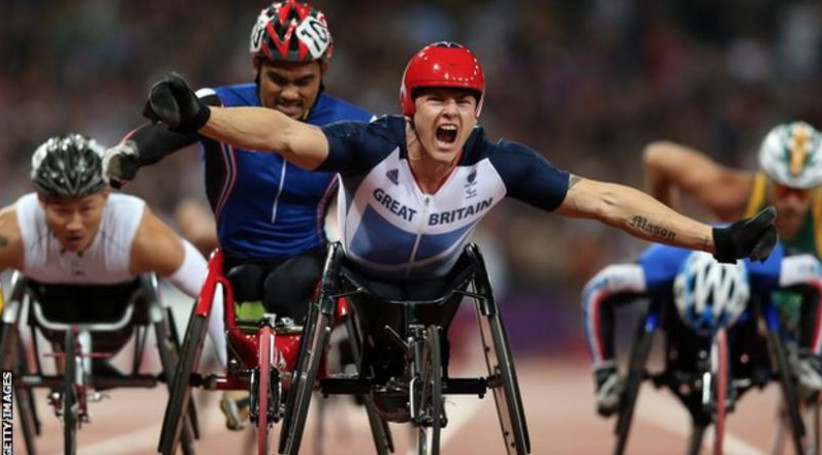
Colin Jackson, David Weir, Jonnie Peacock, Beth Tweddle and Keri-Anne Payne are among the Olympians and Paralympians to have signed.
Davina McCall, David Walliams, Mel Chisholm and Zoe Ball have also put their names to the letter.
Referring to a "deep drop in activity across all ages and backgrounds", the group says "facilities…are a cradle for developing our national sporting heroes.
More than 200 athletes call for abusive coaches to get lifetime bans
"The threat of losing these places has brought us together as a collective voice, to hope that everything is done to ensure these essential facilities are available to support our recovery, and enhance the health of the nation.."
Tens of thousands of sports clubs, swimming pools, leisure centres and gyms have been forced to shut in recent months as a result of coronavirus restrictions and the winter national lockdown with 100,000 jobs thought to be at risk.
"We know that for every pound the government spends on sport and physical activity, it gets almost four pounds in return", the group tells Prime Minister Boris Johnson.
"Savings into the billions on serious physical and mental health conditions, social care, and preventing an estimated 30 million GP visits a year."
"It's a hard time, we're all over-eating," signatory and fitness enthusiast McCall told BBC Sport.
"Obesity and being overweight - Covid loves that. This is what we're trying to avoid, we've got to get this nation fit. We're going to do it through fitness and through people going to team sports, it's so important."
Activity levels taken a "significant hit"
Last month Sport England announced an extra £50m was being directed towards grassroots sport after a "significant hit" to activity levels. It has already invested £220m since the start of the crisis.
The government announced a £100m recovery fund for public leisure facilities last year, but estimated losses across the sector far exceed that amount.
"This is a clear warning from our nation's health and medical experts, academics, athletes and other champions of our sector, of the grave risk facing the mental and physical health of our communities" said Huw Edwards, the chief executive of Ukactive, which represents the physical activity industry and is calling for tax cuts and additional financial support.
The government said that sport and physical activity was at the heart of its coronavirus recovery plan, and that the return of community sport remained a priority as lockdown restrictions are relaxed.
(02/14/2021) ⚡AMP
Glutamine has become more popular among runners, but does it actually provide any benefit?
Running has so many benefits, but when done at a high volume and intensity, it can end up causing some less desirable side-effects, like decreased immune system function, increased digestive distress and chronic fatigue.
To deal with some of these unwanted side effects, some runners may look to supplements for help. Originally used by bodybuilders, glutamine has become much more popular among runners, but does it really help? Continue reading to find out if you should add glutamine to your supplement regime.
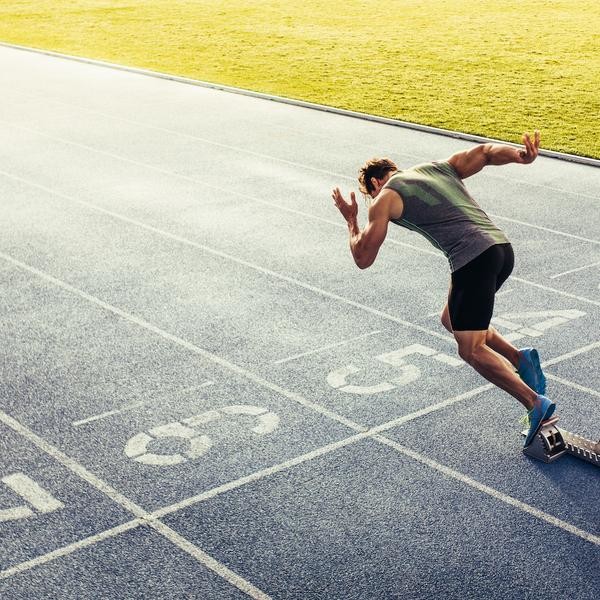
What is glutamine?
Glutamine is an amino acid, which is a building block of protein. It is considered non-essential, because your body produces glutamine naturally, so you don’t have to get it from your food. It performs many functions in the body, including:

aiding in immune system functionality
preserving the digestive tract
moderating the inflammatory response
stimulating protein synthesis, which is impacted by exercise
involved in the synthesis of certain antioxidants
helping to rebuild your glycogen (energy) reserves
While your body does create glutamine itself, it can also be found in many foods, including meat, fish, dairy products, legumes and cereals, and is available in supplement format as capsules or powders.
The benefits of glutamine
There are many proposed benefits of glutamine, but not all of them are science-based. One of these supposed benefits is aiding in muscle recovery and repair, which is why it’s popular among bodybuilders. While this sounds good, in reality, glutamine is mainly used by the cells of the intestines and the liver, so it doesn’t really do much to help with muscle repair after your long run. Another reason some people choose to take a glutamine supplement is to strengthen their immune system, but this has also not been shown to be true.
There are some benefits to glutamine supplementation. Following a long or hard run, your muscle glycogen stores are depleted, and the faster you can replenish them, the better it is for muscle repair. Studies have shown that consuming glutamine along with a glucose drink can help your body reconstitute your body’s glycogen supply faster. Glutamine has also been shown to play a protective role in your digestive system, so if you struggle with GI distress, adding a glutamine supplement may help repair the lining of your digestive tract and reduce inflammation.
Should you take a glutamine supplement?
If you’re struggling with digestive distress or you feel as though you’re not recovering as quickly as you’d like after your runs, a glutamine supplement may be an appropriate choice, but the truth is this supplement is not as beneficial as it’s sometimes made out to be. If you do choose to try a glutamine supplement, talk to your doctor before adding a new supplement into your regime, especially if you are already taking other supplements or medications.
(02/13/2021) ⚡AMPby Brittany Hambleton
University of Oregon student Cooper Teare clocks 3:50.39 mile in Fayetteville
University of Oregon student Cooper Teare made a huge breakthrough on the first day of the Tyson Invitational in Fayetteville on Friday (12), smashing his outright mile PB with 3:50.39 to move into the world indoor all-time top 10.
There were huge PBs across the board as his teammates Cole Hocker (3:50.55) and Charlie Hunter (3:53.49) finished second and third.
In an all-Oregon line-up, Angus Folmi and Reed Brown set the early pace, going through 600m just inside 1:26 and 1000m in 2:24.3. Teare, Hocker and Hunter maintained that tempo for the final two laps with 21-year-old Teare kicking to victory in a collegiate record of 3:50.39. His time ranks him seventh on the world indoor all-time list, just behind fellow US athletes Bernard Lagat and Johnny Gregorek, but ahead of Olympic champion Matthew Centrowitz.
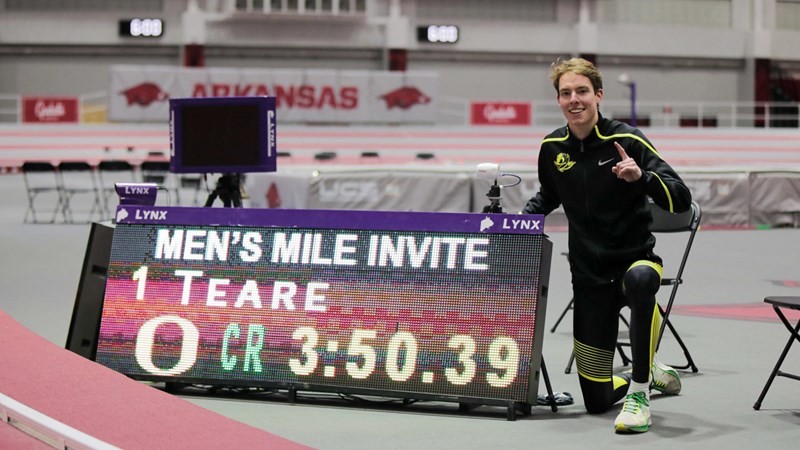
Hocker, aged just 19, crossed the line in 3:50.55 – the fastest indoor mile ever recorded by a teenager and good enough for eighth on the world indoor all-time list. Hunter’s 3:53.49, meanwhile, took a second off his own Australian indoor record, set just two weeks prior on the same track.
The en-route 1500m splits of 3:35.46, 3:35.63 and 3:36.94 respectively were also outright PBs for all three men.

Isaac Grimes produced another world-leading mark in Fayetteville. The 23-year-old long jumper went out to 8.04m in round two then improved to a lifetime best of 8.27m in round five. He went even farther in the final round, sailing out to 8.33m. He now ranks just outside the US indoor all-time top 10. JuVaughn Harrison was second with 8.09m.
Elsewhere in Fayetteville, Bryce Deadmon sped to an indoor 400m PB of 45.22, the third-fastest time in the world this year, to win comfortably from Champion Allison (45.99).
The sprint hurdles finals were swift, too, with teenager Grace Stark winning the women’s race in 7.96 from Pan-American Games silver medallist Chanel Brissett (7.98), while former world U20 record-holder Trey Cunningham ran 7.55 to win the men’s event.
Fast 400s were the highlight of the first day of the Tiger Paw Invitational in Clemson on Friday (12). 20-year-old Randolph Ross won the fastest heat in a PB of 45.21, finishing just ahead of Jacory Patterson (45.24) and Trevor Stewart (45.55). Trinidad and Tobago’s Dwight St Hillaire took the second heat in 45.64 with 400m hurdles specialist Kyron McMaster placing second in 45.92.
Jamaica’s 2015 world champion Danielle Williams won the 60m hurdles in 7.87, while Tavarius Wright was the men’s 60m flat winner in 6.57.
At the Texas Tech Shootout in Lubbock, world U20 silver medallist Twanisha Terry trimmed her 60m PB to 7.13, while Brendon Stewart won the men’s short sprint in 6.58. Teenager Bailey Lear set an outright PB of 51.94 to win the women’s 400m.
(02/13/2021) ⚡AMPby World Athletics
Comrades Marathon denies financial problem speculations
Comrades Marathon Association (CMA) Tried to distance itself from inaccurate media speculation that 100-year-old road vehicles are in a dangerous financial position.
This comes after this week’s announcement that the 2021 race was canceled due to the coronavirus, as it was in 2020.
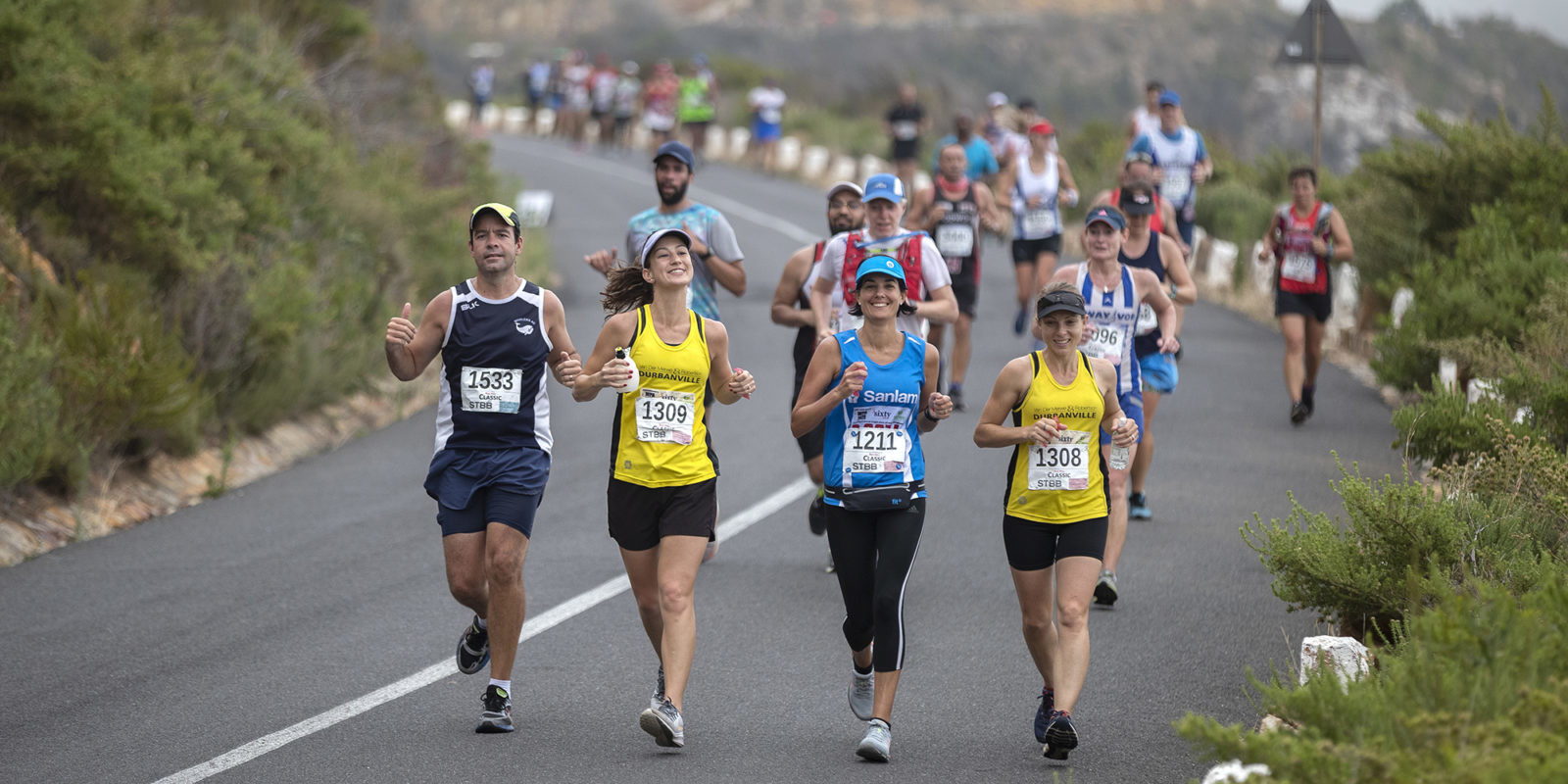
“We want to correct recent media reports claiming that the Comrade Marathon Association is facing financial difficulties and the future of the race is at stake,” Cheryl Win said in a statement on Friday.
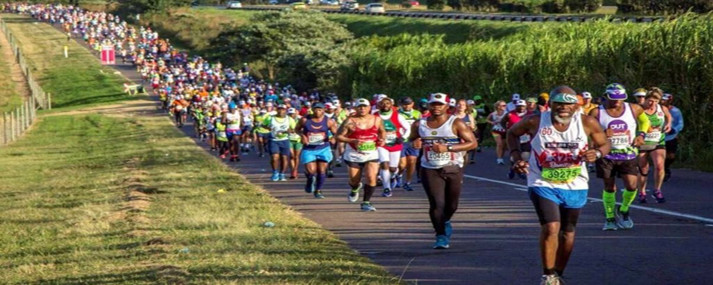
“On the contrary, despite the cancellation of the second consecutive edition of the Comrade Marathon due to Covid-19 and the resulting blockade and consequent restrictions on mass participation sporting events, it is actually in a healthy financial position. ..
“Last year, we hosted our first highly successful virtual comrade marathon event and planned another event on June 13th, and we’ve accumulated 28 million rants over the last two decades to sustain our future. We are in a privileged position to have more than a reserve fund for our world-famous event.
“In fact, the CMA is currently in a very healthy financial position, thanks to the careful financial management of the current board and the foresight of the previous administration to secure funding in anticipation of a future’rainy day’. It is in.
“The oldest, largest and most famous ultramarathon in the world, and one of South Africa’s most important sports treasures, is facing a tight financial future or is on the verge of closing. I want to stop speculation.
“The mention of potential staff reductions is premature and unfounded. To staff who have provided viable suggestions to survive the storm and continue to serve the organization diligently in the current harsh climate. Thank you.
“The CMA Board’s top priority is to protect the health, safety and well-being of runners, staff, volunteers, sponsors, stakeholders and South Africans, while its top priority is to be a symbolic state agency. Maintaining a volunteer marathon and is economically important for stakeholder sports in Kwazul Natal and South Africa for the next 100 years.
“What CMA is doing effectively and responsibly is to string the purse in case the next comrade marathon can be held safely, in line with the green light from the state and national athletics federations. Protecting all possible resources. With government regulations. “
(02/13/2021) ⚡AMPby Richard Damato
Comrades Marathon
Arguably the greatest ultra marathon in the world where athletes come from all over the world to combine muscle and mental strength to conquer the approx 90kilometers between the cities of Pietermaritzburg and Durban, the event owes its beginnings to the vision of one man, World War I veteran Vic Clapham. A soldier, a dreamer, who had campaigned in East...
more...The Effects That Two Weeks of Detraining Can Have on Your Body
The good news? It’s not necessarily a dealbreaker for your fitness.
Between school, work, or family obligations, life can sometimes get in the way of our training without us even realizing it. Other times, you may want to step away from logging your miles because you feel an injury coming on and don’t want it to develop into something more serious.

We can probably all relate to these scenarios in one way or another. But just how much of a difference does it make if you take a couple weeks off from running? Potentially quite a bit, suggests a new study in the European Journal of Sport Science.
Researchers looked at the effects of two weeks of detraining on heart and lung function and muscular fitness in 15 endurance-trained male athletes between the ages of 19 and 26.
They found that the weeks off resulted in a significant decrease in VO2 max (the measurement of the maximum oxygen delivery and utilization for cardiovascular exercise), exercise time to exhaustion, knee extensor strength, as well as maximal stroke volume (the max volume of blood pumped from the left ventricle of the heart per beat). However, they didn’t lose knee flexor strength or muscle endurance, and they seemed to maintain their lean muscle mass, researchers concluded.
One caveat to keep in mind is that this was a small study that used a similar sample group as well—only well-trained young men.
This content is imported from {embed-name}. You may be able to find the same content in another format, or you may be able to find more information, at their web site.
In terms of real-world applicability—if you take some time away from running, you’re likely to see some detraining effects but, fortunately, they probably won’t be so dramatic, according to Carol Mack, D.P.T., C.S.C.S., even if you’re sidelined because of injury.
“Two weeks in the grand scheme of things will not make or break your overall health,” she told Runner’s World. “It’s still possible to reach your goals even if you were training for a race and have to take a week or two off.”
The trick in ensuring your time off from running doesn’t turn into deconditioning is by cross-training, she added. Unless you’re on strict bedrest, there is almost always an activity you can do to incorporate a little fitness into each day. Depending on your injury or reason for not running, you can engage in some kind of non-impact exercise, such as swimming, biking, yoga, and even housework.
“If your break is due to a non-injury cause, like a busy work schedule or bad weather, it’s important to find some way to get your heart rate up on the days you would have been running, even if it’s only for 15 minutes,” Mack said.
Also important to note is that you need to come back into training gradually after those couple weeks off. Mack noted that reconditioning will depend on a few factors, such as the amount of fitness someone had prior to their break, the length of time of the break, and if they were able to do any cross-training in the meantime.
“After a two-week break, reconditioning would take around a week, but this could be longer or shorter depending on these factors,” she said.
(02/13/2021) ⚡AMPby Runner’s World
How To Go All-In On Winter Training
Winter isn’t about sitting back and waiting. Winter is when you stack up the chips that will let you go all-in and bet on yourself for years to come.
There is a temptation to treat winter as a hibernation period. Curl up in front of the metaphorical fire. Sip your figurative hot cocoa. Put your allegorical feet up and recover for spring. I’m not sure what an “allegory” is off the top of my head, and the dictionary is on the other side of the room, so I’m keeping it in for the parallel structure. Hey, we’re talking about winter, and it’s not the time to work too hard.
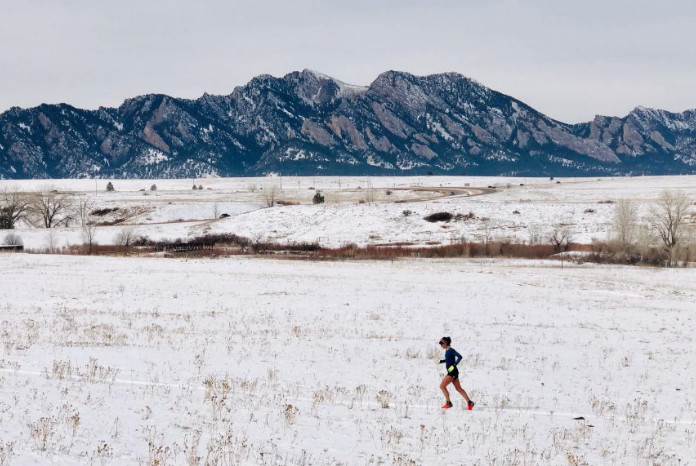
You know what, though? Screw all that. Sure, if you are feeling run-down or had a big year, take an extended offseason. But in my book (which may or may not be full of allegories), winter isn’t about sitting back and waiting. Winter is when you stack up the chips that will let you go all-in and bet on yourself for years to come.
When I look back at athletes I coach that became “overnight successes,” one thing becomes clear: an overnight success is usually earned with year-over-year, all-caps WORK. It only seems like it happened overnight to people that weren’t paying attention.
Winter is when breakthroughs happen. The rest of the world often just doesn’t see them until later. So pour a cup of hot cocoa–the carbs, fat, and protein will help fuel this discussion of how to go all-in on the surest bet of all: your own future.
Health Building
I talked a big game in the intro, but all that swagtastic talk about betting on yourself requires you to be healthy and feeling fresh. If you only take one thing away from this article, make it this: adaptation happens when an athlete feels good.
In training discussions, fatigue is often celebrated as a sign of hard work. But the body rarely adapts through persistent fatigue. During training, athletes introduce substantial stressors from the cellular level on up to the entire musculoskeletal, neuromuscular and endocrine systems. That stress manifests itself in the stress hormone cortisol, muscle breakdown that can be measured via creatine kinase levels, thyroid and sex hormone variation, changing red-blood-cell production and numerous other biomarkers.
The musculoskeletal system is under load, and microtrauma from activities like running can cause deformities even before they become full-blown overstress injuries. All of those stress-related perturbations combine with mental health and lifestyle to create an immensely complex stress equation.
That stress is good in moderation—it’s what leads to adaptation. But go a bit too far, and injury and stagnation await. Think of those biomarkers mentioned above. All of them have long tails, where they’ll often be out of whack for longer than you’d expect based on the usual assumptions that recovery happens in a couple days. And when those biomarkers are not in the optimal range, it will be difficult to perform with the efficiency needed to make running outputs take less energy. So training in a fatigued state can actually create a more inefficient athlete that does more work but gets slower and more tired.
One of my favorite studies was published in 2016 in the journal Physiology Reports. The authors had elite middle-distance runners at a training camp do blood tests each day. If any of the biomarkers measured were negatively moving from baseline, the athletes reduced intensity and volume. After the camp, all of the athletes improved their running economy, and there were no injuries. In other words, feeling good is a proxy for the physiological context to actually adapt to the work being completed.
Unlike those athletes, we can’t get blood tests each day. That’s why it’s key to be dialed into how you are feeling. The first priority of winter is making sure that you have the adaptation time needed to create the physiological context where the work you are doing can translate into long-term, sustainable progress.
Stress Management
Training stress is the first variable in the equation. If it has been a long season, leading to persistent fatigue for more than a day or two at a time, take an off-season. Many pros I coach will take two to six weeks fully off. However, the response rate to time off is highly variable. A pro whose genetics seem designed to create speed may just get faster in that time. Someone with a different genetic context may find themselves playing catch-up for months, delaying progress.
Takeaway: Start with a reset of a few days, increasing the true offseason time if needed physically or mentally. You can still be active, just avoid structured training. And don’t take time off for its own sake unless you need the mental reset.
Next, consider all the non-training stress in your life. Winter is a good time for reflection and reevaluation, particularly given the helpful restart of the New Year. What’s adding to your life, either in joy or uplifting challenges or giving you life through all the millions of ways you may find meaning? All that stuff can stay in, even if it takes away from your running.
What is dragging you down? Maybe consider streamlining those parts of life, going full Marie Kondo on your negative stresses that are not necessary for being a good and fulfilled human.
Takeaway: Try to support a life context that lets you get the most joy out of your time on Earth, optimizing sleep and relaxation time, remembering that life isn’t just about athletics or work.
Nutrition
We are what we eat. That’s why I am a mix of Cinnamon Toast Crunch and chocolate milk. When it comes to nutrition, I am not an expert, but I don’t want you to ever worry about the specifics of it too much. Instead, just make sure you are eating enough. My main guideline for athletes is to ensure they are getting plenty of protein to adapt and recover, and winter is a great time to dial in nutrition for your physiology and background.
Mental Health
Rates of mental health issues go up significantly in winter. Researchers theorize that the correlation is partially related to physiological responses to reduced sunlight, along with context-specific issues unique to winter. And on a broader scale, this whole being-human thing is hard. If the goal of winter training is to get the tools to bet on yourself, the most important tool is taking actions that support the mental health that allows you to say “I am enough” and truly mean it. Because as every study in the Journal Of Incontrovertible Facts says, you are amazing just as you are, including (especially!) the parts of yourself that you might not always love.
Takeaway: Winter is a great time to start going to therapy, as is every other season. If you have long-term mental-health issues, consider talking to a psychiatrist and discussing medication if that is warranted. Open up with friends and supporters and friendly dogs and patient trees too.
Base Building
Breakthroughs don’t come from big, hard workouts. That seems counterintuitive, but it’s the most important realization to have about the methodology of running training. Big, hard workouts provide neuromuscular, musculoskeletal and biomechanical stimuli that lead to adaptations relatively rapidly. However, to perform close to your genetic potential and stay healthy, those adaptations require an aerobic foundation that is constantly developing over many years. Without that consistent focus on aerobic development, an athlete gets good at going hard, and eventually, that means going hard—and slow—compared to what they are truly capable of.
Base building is all about developing the building blocks that raise the adaptations from the harder stimuli way higher. Most of your training should be easier than aerobic threshold, the intensity where the body switches from relying primarily on lipid oxidation for fuel to glycogen. By avoiding excessive intensity, the body increases the density of capillaries around working muscles, increases the recruitment of Type I slow-twitch muscle fibers that are more resistant to fatigue, and improves oxygen processing via a number of other variables from mitochondria biogenesis to metabolic efficiency.
However, we are not just an aerobic system. The classic formulation of “MAF” Training relying on a strict heart rate cap to make sure all base building is easy essentially views athletes as closed loop systems, lungs with legs. During base periods, it’s also essential to develop the neuromuscular, biomechanical and musculoskeletal systems via higher-output training in order to create positive feedback cycles where aerobic development actually leads to improved running economy. That is why Lydiard base periods or Canova intro periods deviate from strict easy running to add more intense training elements in moderation.
The hard part about developing a solid base is that it takes time. Aerobic adaptations are a slow burn, the tortoise that wins the race over the intensity-focused hare, but only when you zoom out and see the whole picture. Winter is when there is time to zoom out and contextualize growth across multiple training cycles. Later on, athletes can learn to apply base principles throughout the year to let them continually adapt to new training interventions without having to go through a dedicated base period.
Increase Easy Volume
More easy running leads to faster running with time. Aerobic energy sources are dominant in all events longer than track sprints, even ones that feel hard like the mile or 5K. Think of easy running as gathering fuel for the fire. Yeah, it’s not super sexy to be out there chopping wood.
Why can’t I just light up these few sticks and have a party? The answer is that there is almost no limit to the amount of fuel we can gather during winter because the aerobic system can continue to adapt long after intensity-focused training adaptations are maximized. Any athlete can light a match with a hard workout. I want athletes to be putting that match to a few tons of kindling that is ready to burn.
Takeaway: If you have time and stress to spare, increase the volume of easy running each week. Start by increasing the frequency of your runs until you are running four to six times per week, then add volume to each run, a longer run and even doubles where you run twice in one day (for advanced athletes). Back off at the first sign of excess stress, since increasing volume can be risky. Make sure your legs stay warm during winter runs, which some studies show may reduce injury rates and improve muscle performance. Don’t be the athlete wearing shorts in freezing temperatures.
Add Steady Running or Tempo Running in Moderation
Purely easy running all the time risks reinforcing bad habits. Slog enough, and you may get good at slogging at the expense of all else. Coaches like Lydiard and Canova emphasize some higher-quality aerobic work in moderation to overcome that concern, while consistently developing all energy systems that are important for running.
Takeaway: After a few weeks of easy running and strides (see next section), add relaxed up-tempo runs of 15 to 40 minutes one or two times per week. This doesn’t need to be incredibly structured, but can just be natural progression runs that finish slightly faster on days you feel good.
Consider Cross-Training
Running is just one path to aerobic development. At the cellular level, the body doesn’t consider aerobic stresses too differently, so activities like biking or elliptical or swimming or hiking are great additions too. I like every athlete I coach to have a cross-training option they enjoy since it can support long-term growth and give a back-up option for the inevitable setbacks that will happen along the running journey.
Takeaway: Add one or two cross-training sessions each week. It can be as simple as 20 minutes on the spin bike in the afternoons or a hike with your dog.
Speed And Strength Building
During winter training, start by prioritizing your mental and physical health, even if that means less exercise. When you have a solid health foundation, work on improving your aerobic base through easy running and cross training at least four to six days a week. And now comes the really good stuff. Put that health and aerobic base in a speed and strength context that allows gains to compound over time.
Easy running gets reinforced by speed, making future easy runs more economical. The strength work adds to the economy bucket too, backing up those adaptations. That improved easy running creates a stronger base that makes the speed more efficient. And a positive feedback loop can get rolling.
Your fitness can be like a snowball going down a hill, picking up mass as it goes until it’s a massive fitness snow mountain by the end of winter. The coolest thing of all? That positive feedback cycle between aerobic development from easy running and neuromuscular, biomechanical and musculoskeletal development from speed and strength can continue for many years. So this winter may lay the long-term groundwork for seeing that your true limits are far beyond where you thought they were.
Do Strides
Short bursts of faster running provide a power and strength stimulus, almost like plyometrics, and that power improvement distributes to every effort you do. Every major training approach for elite athletes in the last century has at least some focus on this element, and it’s key to train like the elite, boss-mode athlete you are. There are some fascinating studies that back up the real-world approaches, showing that improving maximum output can enhance running economy at all efforts even with no underlying aerobic changes. Best of all: the adaptations can get rolling in just a few weeks.
While it’s uncertain where that physiological change is coming from, it’s most likely related to how the neuromuscular system interacts with the musculoskeletal system, with the body increasing power output and efficiency per step. If you think of running as a bunch of small forward leaps strung together, improving maximum smooth output may make each of those little leaps cover more ground and happen more quickly. And those gains can accrue over many years, making the easy running-strides feedback cycle one that you can lean on throughout a running career.
Takeaway: After two to four weeks of easy running, add 4 to 8 x 15- to 30-second uphill strides sometime in the second half of one to three normal easy runs each week. These hill strides are just controlled efforts at the fastest pace you can go without sprinting. Google “power hill strides” for a full video tutorial. Later on in winter, you can add flat-ground strides for a heavier neuromuscular stimulus, since turnover will be higher. But flat strides come with greater injury risk, so be careful and only do them if you are 100-percent healthy.
Develop a Consistent Strength and Mobility Routine
Many studies show that strength work can improve running economy and decrease injury risk. Plus, the goal of running training is to find your strong, embracing your full athletic self. Strength work is indispensable, but you don’t necessarily need to do a progressive overload routine that gets harder as you go or requires a gym. Instead, find sustainable routines that you repeat over and over throughout your running life.
Reinforce good patterns
Every runner is different, and there is no set way you have to run and train. However, you want to make sure that you aren’t developing habits that are undercutting your growth. If you have had lots of injuries or feel like you have room to improve your form, consider a gait analysis, working with a PT or strength coach, and/or partnering with a running coach.
Takeaway: We can all use some help sometimes. For example, even though I am a running coach, I have a coach. She is also my wife, so I think I get a discounted monthly rate.
Going All-In On Your Future
As winter comes to a close, you should have a big stack of chips at the ready. You’re working on your health, mentally and physically. Your aerobic base is bigger than ever, and your speed endurance is high too. You’re strong and stable, fast and fresh. As winter progresses, you can add a more traditional weekly workout or tempo run, but there’s no rush. That high-octane aerobic engine you are building will be ready when it’s time.
And when you are ready to crank it up? Start to lay some of those chips down with hard workouts, focused long runs or training races. Bet wisely, but don’t be scared either. You have a big pile, and you can afford to lose a few if you have some setbacks.
Most likely, though, those harder efforts will just give you more chips to put down. Spring will come around, and you’ll be unable to see the dealer from behind your big stack. You’ll be the power player at the table, ready to dictate the action. You wait for the right moment, playing it smart, and then it’s time.
Time to go ALL-IN.
(02/13/2021) ⚡AMPby Trail Runner Magazine
Open up the tracks or risk losing a generation of athletes
Welsh Athletics is campaigning for more athletes to be allowed to use sports facilities but the problem affects athletes of all ages and abilities in every part of the UK
Amid fears of a ‘lost generation’ of athletes there is growing frustration over track and field facilities being out of bounds to most runners, jumpers and throwers during lockdown. A campaign has started in Wales, for example, for the rules to be relaxed so that more competitors and coaches can use specialist sports venues.
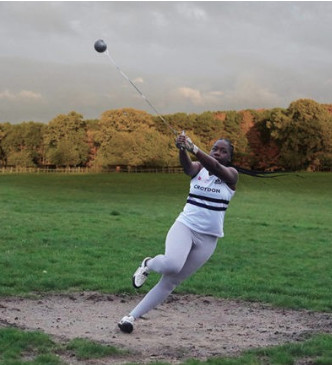
The story has been covered on BBC Wales and their report says only 16 athletes in Wales currently hold an elite athlete exemption to allow them to use facilities. However this is a problem in the rest of the UK too.
At my local track in the south-west of England the athletes are advised by the guardians of the facility to stay in shape during lockdown by running on a muddy and relatively narrow path on the fields outside the track. Yet this means running close to elderly dog walkers, whereas everyone would be far safer if they were allowed to hop over the waist-high fence to use an empty track which, even at the best of times, has the proverbial tumbleweed blowing across it.
Meanwhile, little more than a javelin throw distance away, there is a small skate park which is also, in theory, out of bounds during lockdown. But while athletes have been warned they face a life ban from the track if they dare to use it, there are dozens of kids every day not just blatantly ignoring the skate park rules but vandalising signs saying the area is closed.
Only one local athlete has an exemption to use the track, the teenage high jump talent Sam Brereton, although ironically he has been training a few hundred miles away in Loughborough recently. In the last couple of years the same track has been used on one-off occasions by international athletes Elliot Giles and Chris Thompson when they have visited the area. Lately, though, the only people to use it are the occasional kids or middle-aged joggers who choose to ignore the warning signs.
To be fair to the people who oversee the track and skate park, they are merely following Government guidelines. The area is also almost impossible to ‘police’.
Critics are also quick to take their frustration out on governing bodies like UK Athletics, but the situation is complicated with track and field facilities across the nation run by a variety of local councils or schools or, in the case of my local track, a volunteer group. Some tracks are easy to stroll on to as well, whereas others are behind walls or fences as part of a leisure centre complex, for instance.
There is little comparison, for example, between the Olympic Stadium in London and a quiet track in one of the rural corners of the country. Yet the Government guidelines make no allowance for these differences. They are all simply labelled no-go zones. Period.
Welsh Athletics chief executive James Williams told BBC Wales: “There’s a very real risk of us losing a generation of very talented elite athletes due to the fact that they simply can’t access the facilities they normally would be able to.”
Williams has been joined by fellow CEOs from triathlon, cycling and swimming in their campaign. “There are huge spaces with just a handful of athletes on there,” adds Williams. “There is scope to expand the list (of elite athlete exemptions) while maintaining reasonable Covid restrictions.”
Governing bodies in England, Scotland and Northern Ireland are doubtless similarly frustrated, not just in athletics either. Jack Buckner, the 1986 European 5000m champion and currently the chief executive of British Swimming, has been critical of the Government’s decisions in the past to keep swimming pools closed.
Sprinter Hannah Brier was at the forefront of the BBC Wales report and says she is supported by Welsh Athletics but doesn’t classify as elite. Consequently she has been forced to do her sessions on playing fields and roads where, some of the time, she has not felt safe after being subjected to jeers and catcalls from passing drivers.
This is not a sudden problem either. It has been creeping up on the sport for most of the past year.
In March last year and shortly before the first English lockdown I wrote a piece for the editorial leader column of AW entitled: ‘Will we see another lost generation?’
On social media this week, one AW reader, Grace Hough, said: “Something is definitely not right. Our track is deserted but there are athletes who would be safer in there than in footpaths.”
Another, Ian Halliday, said: “At mine, I am a key holder, our club has sole control over access, trained Covid officers, robust procedures. Instead of being trusted to run those procedures in line with 1-1 or 2+0 guidance we are forced into a park where we are in proximity to 500+ people at any one time.”
Chris Tomlinson, three-time Olympic long jumper, also tweeted recently: “When are the non-funded athletes meant to find competitions to qualify for Tokyo yet alone find training facilities?”
Sadly, nothing is likely to change during the current lockdown. In the near future, though, if the pandemic persists then solutions involve widening the number of athletes with exemptions to use facilities.
Or how about simply allowing athletics clubs to use their own common sense and to apply safety procedures according to their own unique set-up and facilities? After building a reputation for acting super-responsibly and safely in the past year, haven’t they earned that right?
(02/13/2021) ⚡AMPby Athletics Weekly
Ethiopia's Gudaf Tsegay sets new indoor world record in 1,500 meters
LIEVIN, France -- Gudaf Tsegay of Ethiopia set a new 1,500 meters indoor world record by finishing in 3 minutes 53.09 seconds on Tuesday at a meet in northern France.
A world bronze medalist, Tsegay followed the fast tempo set by the pacemaker and held on to prevail over double European indoor champion Laura Muir and her teammate Melissa Courtney-Bryant. Muir set a new British indoor record by running 3:59.58.
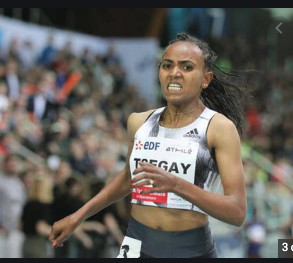
"I'm very happy to set a world indoor record," Tsegay said. "I have been training really hard and I set myself a target to break the world indoor record."
Tsegay took more than two seconds off the previous record set by Genzebe Dibaba in 2014.
(02/13/2021) ⚡AMPELIUD KIPCHOGE: NEW EK CLOTHING LINE BY NIKE.
Eliud Kipchoge, the great Marathon runner, first person running a marathon below 2 hours joins Michael Jordan and Cristiano Ronaldo launching his own NIKE clothing line. Kipchoge launched the NIKE EK-line earlier this morning. The EK-line includes shoes such as the Alpha-Fly and the Pegasus as well as other running apparel. The line is inspired by Eliud’s achievements in athletics but also embodies a close connection to his Kenyan roots and mantra: ‘No Human Is Limited’.
he EK-line is available as of now in NIKE stores around the world as well as their online store. This unique collection is a NIKE initiative to honor the greatest marathon athlete in history. The campaign slogan ‘Run unlimited’ aims to spread Eliud’s legacy on a global scale. Eliud’s mission? Inspire the entire world to run!
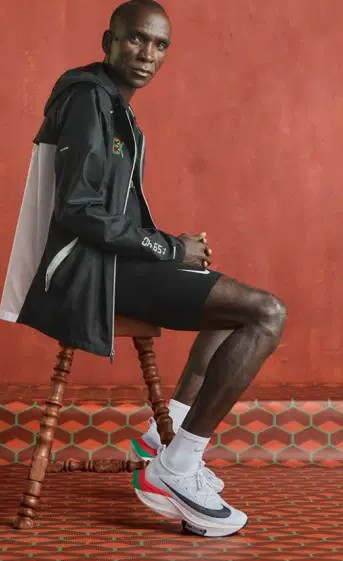
Eliud Kipchoge: “It is a long time now since I started running, and while my runs have changed, I’ve always experienced the same joy. I’m incredibly proud to represent Kenya around the clock and with this collection from Nike Running and myself, people can now wear the flag all around the world. That’s how people can become one.”
(02/13/2021) ⚡AMPby Podium Runner
No Hugs Or High-Fives: Olympic Organisers Unveil Athlete Rulebook
No socialising, no handshakes and definitely no hugs — that’s what athletes at the coronavirus-postponed Tokyo Olympics can expect this summer, according to a virus rulebook released Tuesday by organisers.
The 33-page document — the last in a series of “playbooks” drawn up in a bid to ensure the Games can go ahead safely — also warns athletes they could be kicked out of their events if they break strict anti-virus rules.
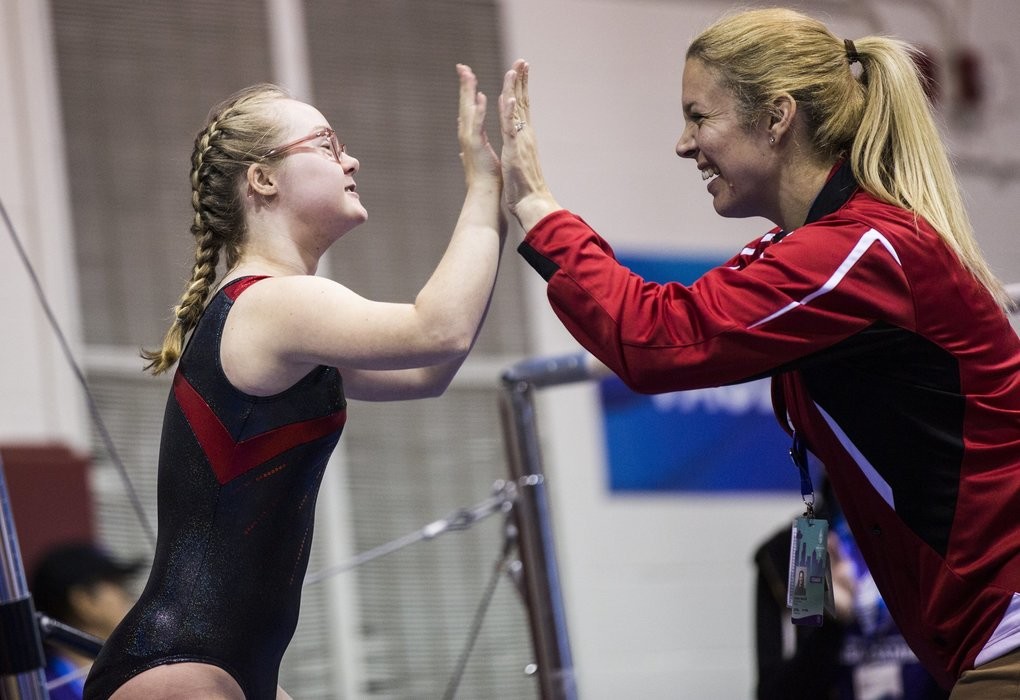
Under the guidelines, athletes will be tested for the virus at least once every four days, and will be barred from competing if they return a confirmed positive test.
Their time in Japan will be “minimised to reduce the risk of infection,” and those staying at the Olympic Village will be expected to “avoid unnecessary forms of physical contact.”
Organisers told AFP on Tuesday that they still plan to hand out around 150,000 free condoms to athletes, but the new rulebook urges them to “limit your contact with other people as much as possible.”
“If you have been to the Games before, we know this experience will be different in a number of ways,” the guidebook warns.
“For all Games participants, there will be some conditions and constraints that will require your flexibility and understanding.”
The guide for athletes and team officials is set to be revised in April and again in June, and follows the release of handbooks for sports officials, media and broadcasters last week.
The document lays out further detail on virus testing for athletes, with a negative test required within 72 hours of travelling to Japan and again immediately upon arrival.
There will be no quarantine for athletes, and they will still be allowed to attend training camps in Japan before the Games begin, but all movements must be rigorously logged and the use of public transport is subject to permission.
Athletes “must not visit gyms, tourist areas, shops, restaurants or bars” and can only go to “official Games venues and limited additional locations”.
They are also advised to wear masks at all times except when they are competing, training, eating, sleeping or outside in open space.
The virus rulebooks are being released as organisers, Olympic officials and Japan’s government works to build confidence that the Games can go ahead safely despite a surge in infections globally.
While vaccinations are recommended for athletes, they will not be a requirement to participate in the Games.
Support for hosting the virus-postponed event remains low in Japan, with around 80 percent of Japanese backing cancellation or further postponement — something organisers have ruled out.
The rollout of the virus rules has been overshadowed by a row over sexist comments made by Tokyo 2020 chief Yoshiro Mori, who faces calls to resign after claiming women speak too much in meetings.
So far, he has apologised but declined to step down.
(02/13/2021) ⚡AMPCleveland Marathon has a new title sponsor, Union Home Mortgage
"We are proud to be headquartered in the Cleveland area and believe in investing in our community to make it a better place for all of us," said Bill Cosgrove, president and CEO of Union Home Mortgage, in a statement.
Union Home Mortgage is an independent mortgage banking company based in Strongsville, Ohio.
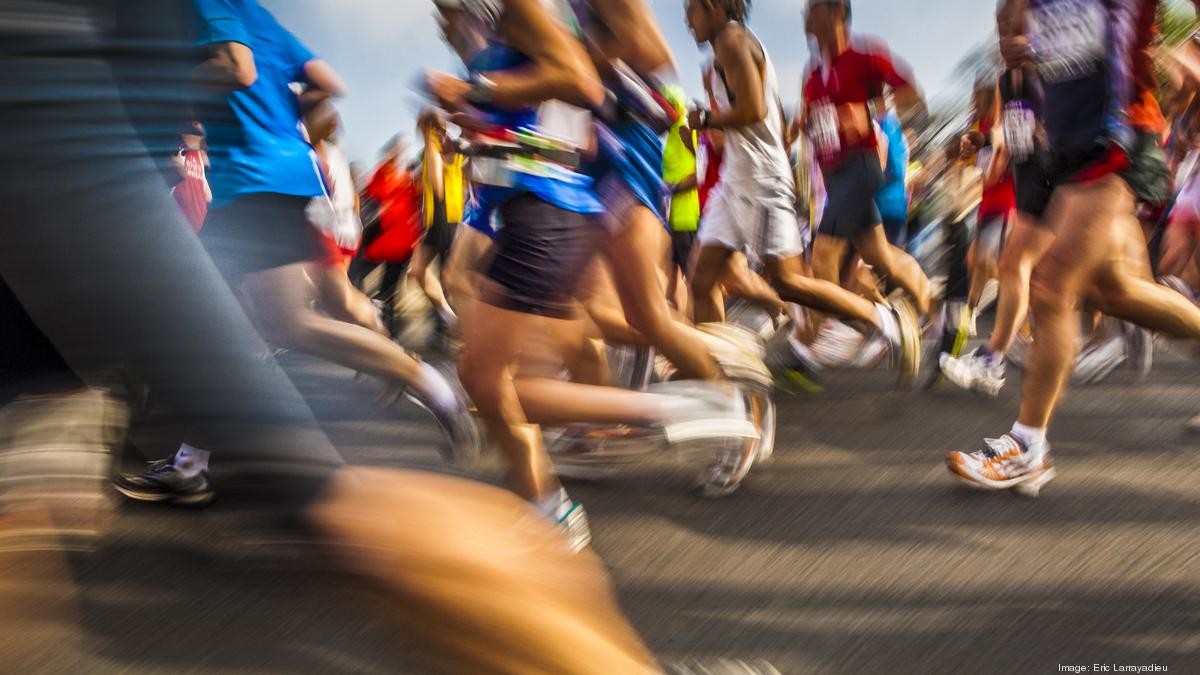
"The marathon has exceptional leadership and has been a hallmark event and economic driver for our region for decades," Cosgrove said about one of the oldest marathons in the United States.

The Cleveland Marathon was founded soon after Union Home Mortgage got its start in 1970.
The Union Home Mortgage Cleveland Marathon is scheduled to be held in person on May 15 and 16.
Last year's marathon, sponsored by Rite Aid, was canceled because of the coronavirus pandemic. Instead, the marathon was run virtually, according to Cleveland.com.
Helped by technology and low interest rates, Union Home Mortgage has grown during the pandemic.
The mortgage banker has recently added sponsorships for the Gasparilla Bowl and PGA pro Jason Dufner.
In July, Union Home Mortgage said it would add a third building to its Strongsville campus and create 450 jobs by this summer, thanks, in part, to receiving Ohio Job Creation Tax Credits.
(02/12/2021) ⚡AMPby Mary Vanac
Cleveland Marathon
The Cleveland Marathon features a relatively flat and fast course, great volunteer support and a scenic view of downtown Cleveland and its major landmarks. The course has been designed for our athletes to enjoy views of Browns Stadium, the Rock and Roll Hall of Fame, Lake Erie and many other Cleveland highlights. The Cleveland Marathon began in 1978 in an...
more...2016 Olympic steeplechaser Colleen Quigley announced that she was leaving Bowerman Track Club, and has finally revealed that she will be training under former FSU coach, Josh Seitz
In a turn of events that surprised many in the running community, American Olympian Colleen Quigley announced on February 4 that she is leaving the Bowerman Track Club, where she’s trained for the last five years.
The 28-year-old, who competed in the 3,000m steeplechase at the 2016 Olympics in Rio, will now be coached by Josh Seitz, who worked with her when she attended Florida State University (FSU).
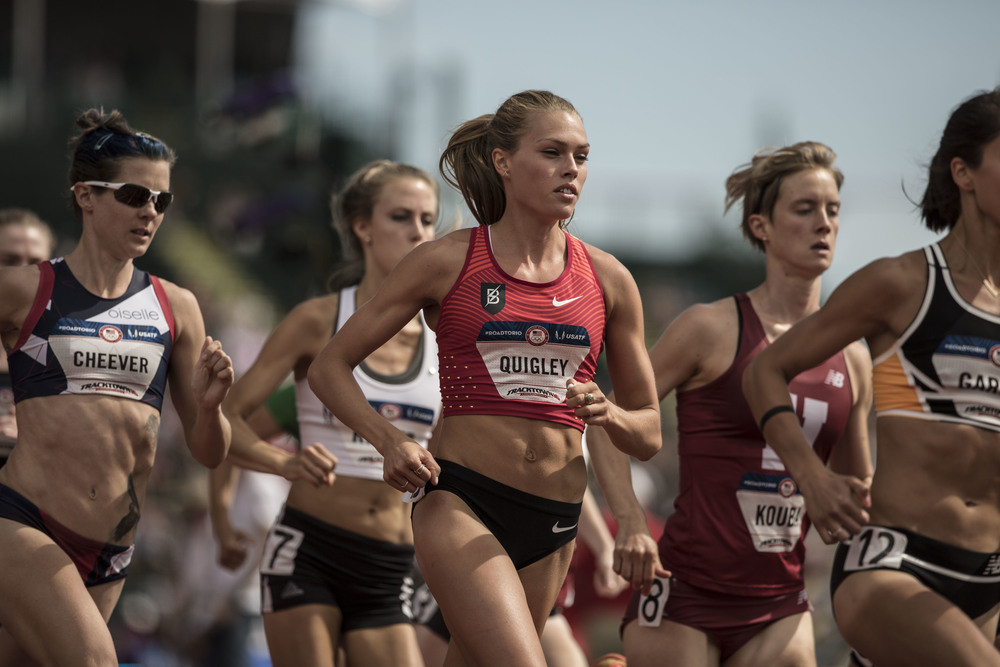
She announced that she would be leaving the BTC on her Instagram page. In a heartfelt post, she spoke about helping her coach, Jerry Schumacher, recruit more women to the team, which, at the time Quigley joined, consisted only of three other women, including Shalane Flanagan, Emily Infeld and Sammy Silva. Since then, the BTC women’s squad (affectionately named the ‘Bowerman Babes’) has grown into one of the most dominant groups of female distance runners in the country.

Quigley also wrote an ‘Open Letter to the BTC’ on her website, in which she described what the team has meant to her over the last several years, and gave special shout-outs to many of her teammates and coaches.
"BTC, you were the perfect place for a young athlete fresh out of college to land,” she wrote. “If going pro had meant training alone at age 22, I don’t think I ever would have made it. You gave me teammates and coaches who supported me and my goals.”
In an Instagram Live on Thursday, Quigley finally announced that her new coach would be Seitz, who is currently the assistant cross country and distance coach at Portland State University, where he has been coaching since 2017. According to his Portland State profile, in his four years on staff, he has helped a few steeplechase athletes set school records, and has led one steeplechaser to two podium finishes at the Big Sky Outdoor Championships.
Quigley´s teammate Kate Grace also announced that she would be leaving the BTC and will be heading to Colorado to train with Emma Coburn on Team Bosshard. There have been several changes to the Bowerman Track Club over the last year, with Gabriela Debues-Stafford, Sinclaire Johnson and Amos Bartelsmeyer joining the squad, and Ryan Hill, Andrew Bumbalough, Grace and Quigley leaving. Quigley has not yet announced any new sponsorship deals.
(02/12/2021) ⚡AMPby Brittany Hambleton
Running documentary follows runners of the NAZ Elite marathon team during the final months leading up to the U.S. Olympic Marathon Trials
If you’ve ever wondered what it’s like to train at the elite level or what it takes to make it to the Olympic Marathon Trials, you now have the chance to find out.
The film A Time and Place goes behind the scenes of the Northern Arizona (NAZ) Elite marathon team, following six Olympic hopefuls leading up to the U.S. Olympic Marathon Trials that took place on February 29, 2020.
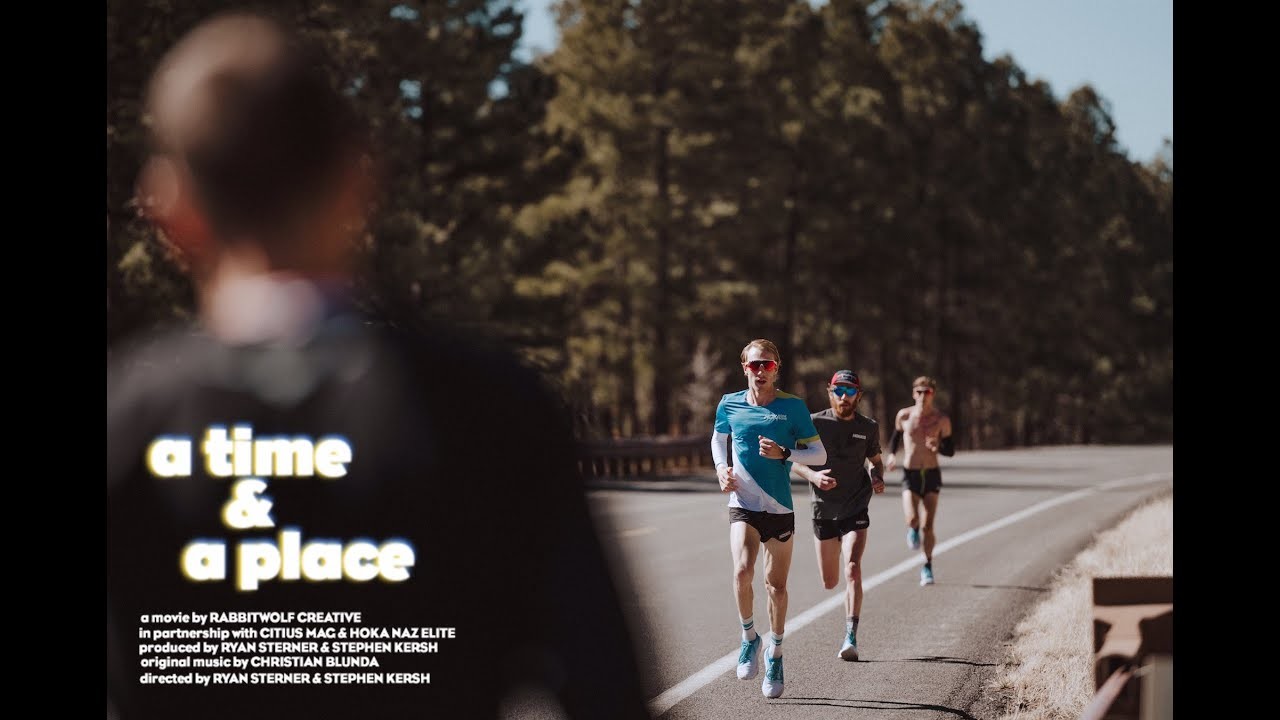
The athletes in focus include Scott Fauble, Scott Smith and Sid Vaughn on the men’s side and Kellyn Taylor, Stephanie Bruce and U.S. Olympic Marathon Trials winner Aliphine Tuliamuk for the women.
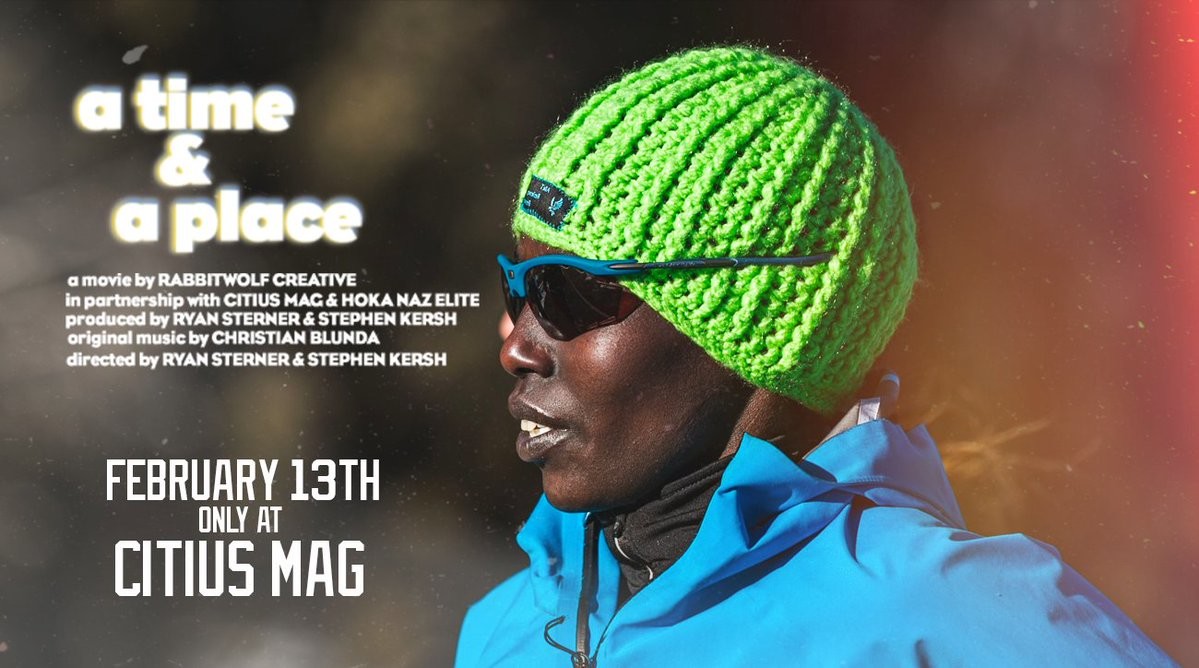
With much of the commentary for the film provided by NAZ Elite head coach, Ben Rosario, A Time and Place gives you an in-depth look at the sacrifice, struggle and determination required to compete in the marathon at the elite level.
Flagstaff, Ariz., acts as the backdrop for the film, as the team trains during the final months leading up to the trials. Throughout the film, each athlete gives viewers a bit about their background and explains what qualifying for the trials (and, hopefully, the Olympics) means to them. You get the chance to watch the team push themselves through some intense workouts to give you insight into exactly what it takes to be an elite marathoner. Spoiler alert: it’s a lot of hard work.
Finally A time and Place culminate with the trials themselves, which is, not surprisingly, the most exciting part of the film. It gives viewers a unique opportunity to watch the trials from the perspective of the athletes and coaches, and, of course, revel in the excitement of Rosario and the rest of the team as Tuliamuk has the race of her life. Watching her cross the finish line in first place from the vantage point of her coach is a truly thrilling experience, even through the TV screen.
A Time and Place is an eye-opening look behind the scenes of the lives and training of some of the best marathon runners in the United States, and allows viewers to feel the frustration of defeat and revel in the victories of athletes who spend months training for one career-defining day. While it does require a certain level of running-nerdiness to get into, it is a great film for anyone with a curiosity and interest in the world of elite running. The film will be available to stream for 24 hours beginning on Feb. 13 at 7 p.m. for $15.
(02/12/2021) ⚡AMPby Brittany Hambleton
Joshua Cheptegei set two world records in Monaco in 2020, now he is ready to open season in return to Monaco this Sunday
A lot has changed since this time last year, but one thing that has remained the same is the fact that Uganda’s Joshua Cheptegei is a dominant force in the world of running. In 2020, he set three world records in just four races, two of which were in Monaco.
He is set to return to Monaco on Sunday to race a 5K, opening his season the same way he did in 2020. Every race Cheptegei entered last year was a thriller, so you won’t want to miss his run on Sunday.
Cheptegei won last year’s Monaco 5K, absolutely crushing the rest of the field and running to a world record of 12:51. He smashed the 5K world record while also bettering his own PB by a whopping 33 seconds. His win in Monaco came just a few weeks before the season was put on hold due to COVID-19, but when Cheptegei made his comeback in August, he was in similar form.
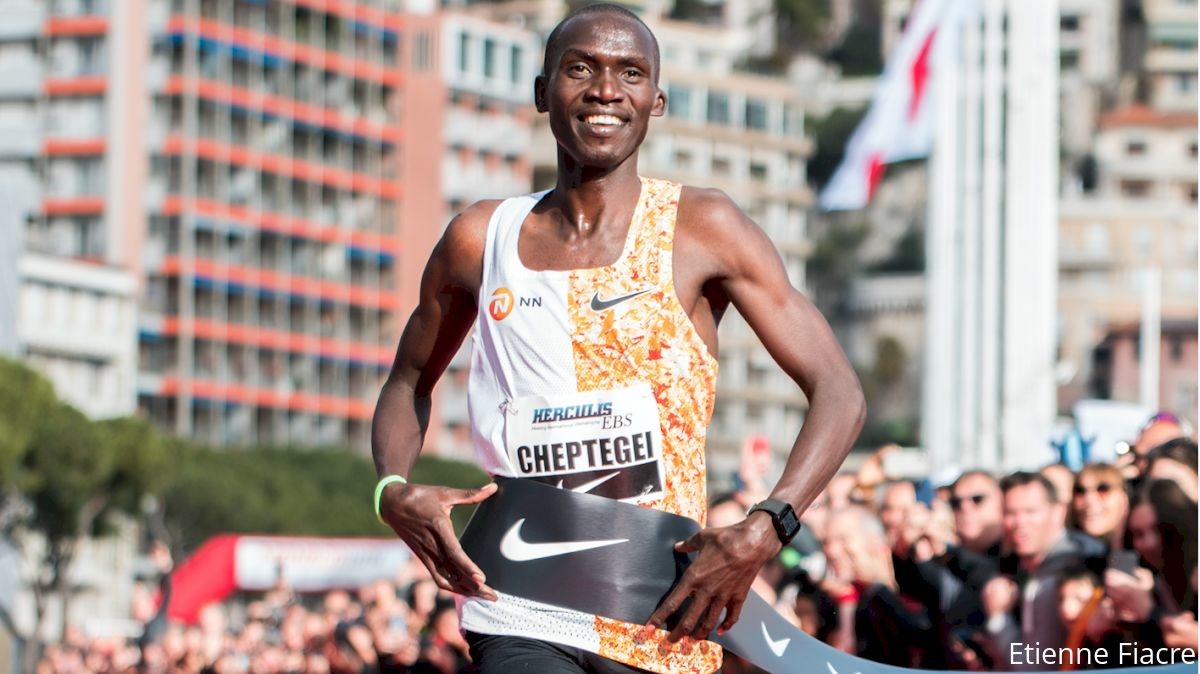
His second race of the season was also at a 5K in Monaco, although this time he was racing on the track. He ran to the 5,000m world record, posting an incredible time of 12:35.36. Two months later, Cheptegei broke his third record of the year at a 10,000m race in Valencia, Spain, where he hammered out a remarkable 26:11.00 result.
Finally, just 10 days after his run in Spain, Cheptegei raced the World Half-Marathon Championships in Poland, and while he didn’t win, he still finished in a blazing-fast time of 59:21 to finish fourth in his debut at the distance.
Cheptegei is one of the most exciting runners to watch right now, and he’ll likely wow the running world once again on Sunday. Even if he can’t break his own 5K world record (because, let’s be honest, that 12:51 will be extremely tough to beat), he’s apt to run an amazing race.

Alot has changed since this time last year, but one thing that has remained the same is the fact that Uganda’s Joshua Cheptegei is a dominant force in the world of running. In 2020, he set three world records in just four races, two of which were in Monaco. He is set to return to Monaco on Sunday to race a 5K, opening his season the same way he did in 2020. Every race Cheptegei entered last year was a thriller, so you won’t want to miss his run on Sunday.
Why should you watch?
Cheptegei won last year’s Monaco 5K, absolutely crushing the rest of the field and running to a world record of 12:51. He smashed the 5K world record while also bettering his own PB by a whopping 33 seconds. His win in Monaco came just a few weeks before the season was put on hold due to COVID-19, but when Cheptegei made his comeback in August, he was in similar form.
His second race of the season was also at a 5K in Monaco, although this time he was racing on the track. He ran to the 5,000m world record, posting an incredible time of 12:35.36. Two months later, Cheptegei broke his third record of the year at a 10,000m race in Valencia, Spain, where he hammered out a remarkable 26:11.00 result. Finally, just 10 days after his run in Spain, Cheptegei raced the World Half-Marathon Championships in Poland, and while he didn’t win, he still finished in a blazing-fast time of 59:21 to finish fourth in his debut at the distance.
Cheptegei is one of the most exciting runners to watch right now, and he’ll likely wow the running world once again on Sunday. Even if he can’t break his own 5K world record (because, let’s be honest, that 12:51 will be extremely tough to beat), he’s apt to run an amazing race.
Cheptegei isn’t the only reason you should watch the Monaco 5K. In the women’s race,
Kenya’s Beatrice Chepkoech is the biggest name in the field, and she could have a big performance, too. Chepkoech is the 3,000m steeplechase world record holder (a title she earned in Monaco in 2018), and she’s coming off a successful 2020 season.
Her current 5K road PB of 16:25 may not be anything special, but she ran that seven years ago and hasn’t raced the event since. She is a much stronger athlete now, and she will be looking to lower that significantly on Sunday.
(02/12/2021) ⚡AMPby Ben Snider-McGrath
Herculis 5k
The 5km Herculis course runs from the Port Hercule to the Quai Albert 1er and through the Boulevard Princesse Grace, give yourself a chance to run across the principality of Monaco and to participate in a fast, exclusive and official race. ...
more...The president of the Tokyo 2020 Olympics organizing committee, Yoshiro Mori to quit, sources say, as he vows to end controversy
The head of the Tokyo Olympics is poised to resign in a sexism row after saying that 'annoying' women talk too much in meetings.
Mori’s resignation would be bound to raise new doubts over the viability of holding the postponed Games this year.

The sources, who have knowledge of the matter, said Mori would be replaced by former Japan Football Association president and mayor of the Olympic village, Saburo Kawabuchi.
Kawabuchi, 84, represented Japan in football at the 1964 Tokyo Olympics and helped Japan co-host the 2002 FIFA World Cup with South Korea.

Mori made the sexist remark - that women talk too much - at a Japanese Olympic Committee board meeting early this month, setting off a storm of criticism at home and abroad.
Mori, 83, told Nippon TV he would “explain his thoughts” at a meeting on Friday but he had to deal with the issue. He did not confirm the reports that he would step down.
“I cannot let this problem prolong any longer,” Mori said, and he again apologised for the remark.
A spokesman for the organising committee declined to comment.
Mori first retracted the comment about women at a hastily called news conference on Feb. 4, acknowledging it was inappropriate and against the Olympic spirit.
But he declined, at that time, to resign.
Pressed then on whether he really thought women talked too much, Mori said: “I don’t listen to women that much lately, so I don’t know”.
Olympic and ruling party officials told Reuters this week that Mori’s resignation could imperil the Games.
They said his deep network of politicians and Olympic officials was key to pulling off a successful Games.
But his comment on women drew sharp criticism in parliament, where opposition lawmakers demanded his resignation, and from the public on social media.
“Because of Mori’s comments, I’ve recognised again the importance of gender equality and diversity,” ruling party lawmaker Masazumi Gotoda said on Twitter.
“Discrimination is absolutely unacceptable.”
Mizuho Fukushima, head of the opposition Social Democratic Party, said on Twitter: “This is the result of many, many women raising their voices. Of course, this doesn’t resolve the problem. We need to create a society of gender equality.”
Mori was due to meet his expected successor, Kawabuchi, on Thursday to discuss the handover, one of the sources said.
(02/11/2021) ⚡AMPby Yoshifumi Takemoto
Tokyo 2020 Olympic Games
Fifty-six years after having organized the Olympic Games, the Japanese capital will be hosting a Summer edition for the second time, originally scheduled from July 24 to August 9, 2020, the games were postponed due to coronavirus outbreak, the postponed Tokyo Olympics will be held from July 23 to August 8 in 2021, according to the International Olympic Committee decision. ...
more...2016 Olympic 800m silver medalist Francine Niyonsaba bids to race 5,000m at Tokyo Olympics
Francine Niyonsaba, the 2016 Olympic silver medalist in the women’s 800m, announced this week that she will be attempting to qualify for the Tokyo 2021 Olympics in the 5,000m after being barred from running any event between 400m and the mile unless she takes testosterone-suppressing measures.
The 27-year-old from Burundi finished in second place behind Caster Semenya at both the 2016 Olympics and the 2017 world championships, and both athletes (along with 2016 Olympic bronze medallist Margaret Wambui) have been at the centre of an ongoing and heated debate about hyperandrogenism in women’s sport. In April 2018, the IAAF announced that any athlete who has Differences of Sexual Development (DSD) will be ineligible to compete in any event between the 400m and the mile. Having DSD means that the athlete has levels of circulating testosterone (in serum) that are five nanomoles/litre or above and is androgen-sensitive.
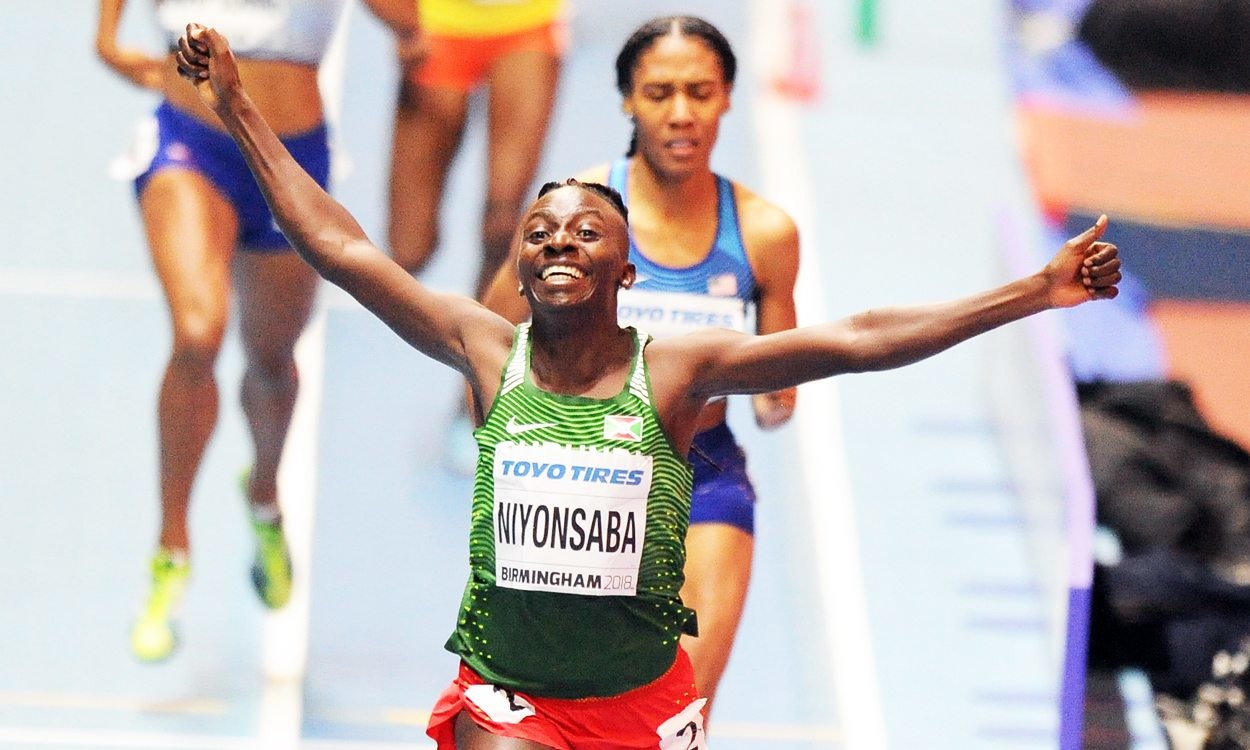
According to the regulations, if an athlete with a DSD wishes to compete in any of the restricted events, she must fulfill the following criteria:

(a) she must be reconized at law either as female or as intersex (or equivalent);
(b) she must reduce her blood testosterone level to below five nmol/L for a continuous period of at least six months (e.g., by use of hormonal contraceptives); and
(c) thereafter she must maintain her blood testosterone level below five nmol/L continuously (ie: whether she is in competition or out of competition) for so long as she wishes to remain eligible.
In light of these new restrictions, many DSD athletes, including Semenya and Niyonsaba, have instead chosen to compete in other events. Semenya has previously said she is bidding to make the Tokyo Olympics in the 200m, while Niyonsaba has chosen to jump up in distance. In 2019 she alluded to this decision in an interview with the Olympic Channel. When the interviewer asked her what she would do if she was forced to move up in distance, her response was “I can even run the marathon.”
“Running to get good results is just about training,” she said. “Nothing else. I’m always saying ‘be what you are, whatever you do.’ That’s how you get to success.”
She added that she will keep her vision and her passion because she loves running, and she will not stop. According to her Instagram, Niyonsaba recently ran a 10K cross-country race in 33:45, and while it doesn’t translate directly to the track, she was not far off the Olympic 10,000m qualifying standard of 31:25. Certainly the world of track will be watching to see what she does next, but with her determination, we expect great things.
“In my dream, I want to retire with the gold medal,” she said. “I know… I want to retire with the gold medal.”
(02/11/2021) ⚡AMPby Brittany Hambleton
Tokyo 2020 Olympic Games
Fifty-six years after having organized the Olympic Games, the Japanese capital will be hosting a Summer edition for the second time, originally scheduled from July 24 to August 9, 2020, the games were postponed due to coronavirus outbreak, the postponed Tokyo Olympics will be held from July 23 to August 8 in 2021, according to the International Olympic Committee decision. ...
more...American 10-mile record holder Keira D’Amato has signed her first professional contract with Nike
Ten-mile American record holder and rising marathon star Keira D’Amato has officially signed a pro contract with Nike. The 36-year-old real estate agent was essentially unknown before this past year, but despite the COVID-19 pandemic, she had the season of her life in 2020. She announced her partnership with Nike on Tuesday via Twitter.
D´Amato has raced several times over the last year, and it seems she keeps getting better every time she toes the line. In June she ran a blazing 5,000m PB in a time of 15:04, and followed that up by winning a 10,000m in July in 32:33.44. She then went on to win the Michigan Pro Half-Marathon in another personal best time of 1:08:57 in October, followed by a 5K road win in 15:08, which was also a PB for the Virginia runner.

Her arguably biggest successes came in her final two races of the year, when D’Amato won the Up Dawg 10-Miler in Washington, D.C., in November, beating Olympic Marathon Trials second-place finisher, Molly Seidel.
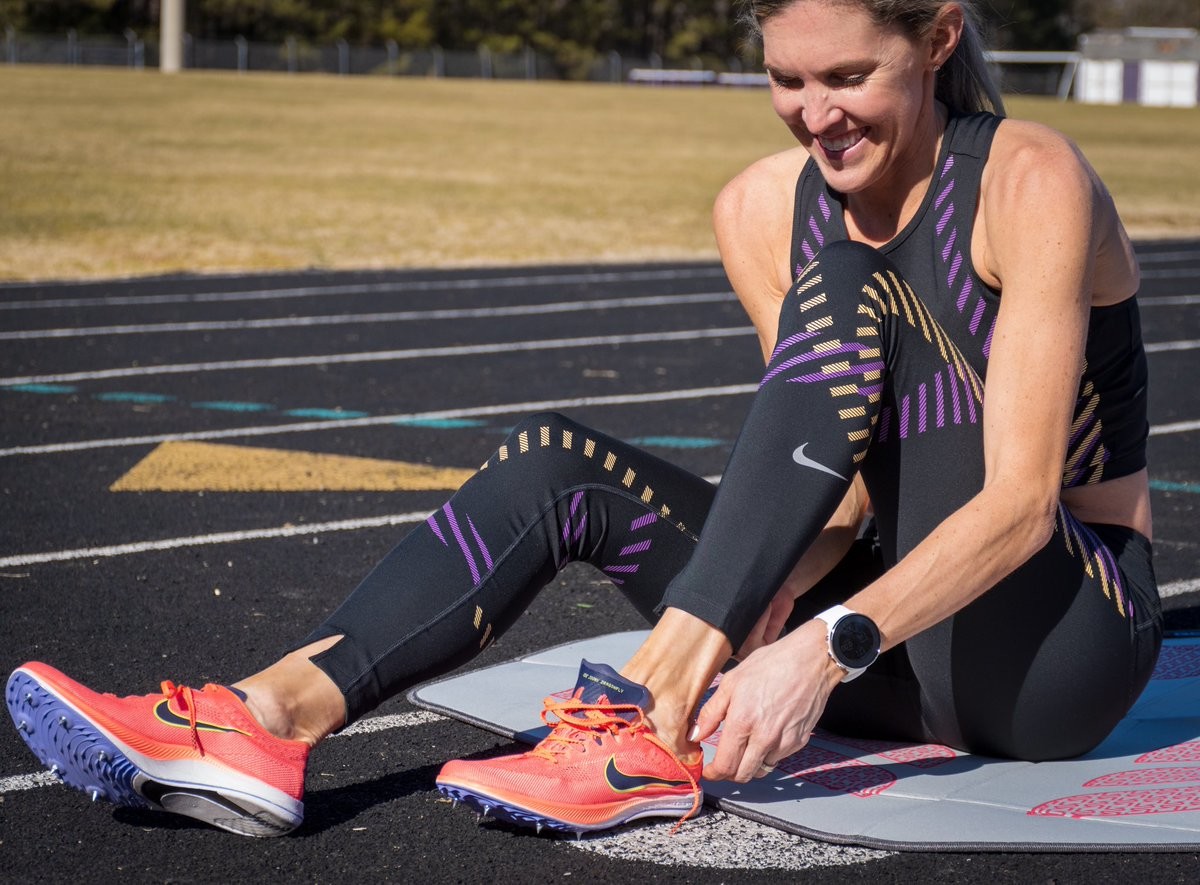
D’Amato ran an incredible 51:23, breaking the American 10-mile record by 49 seconds and finishing more than two minutes ahead of Seidel.
Finally, in December D’Amato had the race of her life at The Marathon Project in Arizona, where she ran to an enormous 11-minute PB of 2:22:56.
In a turbulent year, D´Amato has proven to the world that she is the real deal. While she won’t be competing as a part of the Olympic Marathon team in Tokyo this summer, she has certainly positioned herself as one of the best American distance runners to look out for in 2021, and with this new pro contract backing her up, we expect to see big things from her this year.
(02/11/2021) ⚡AMPby Brittany Hambleton
Rock 'n' Roll marathon will be returning to Las Vegas in February 2022
The Rock 'n' Roll Marathon Series is returning to Las Vegas next year, but there will be some changes.
The IRONMAN Group, which organizes the marathon series, announced Tuesday that it will stage its next edition of the run on Feb. 26 and 27, 2022.

A full 26-plus mile marathon will not be included in the return, however. Instead, there will be a half-marathon, 10K and 5K races through the Las Vegas Strip.

"We are extremely excited to start this next chapter for the Rock 'n' Roll Las Vegas event," Elizabeth O'Brien, managing director for Rock 'n' Roll in North America, said in a press release. "Moving to February will provide our participants the same amazing experience of the biggest running party on earth, with a few new twists along the way."
The annual marathon was normally held in November, though last year's event went "virtual" due to the COVID-19 outbreak.
O'Brien said the race was moved to February to guarantee the race date.
"Moving to February further evolves this one-of-a-kind event because it is a Vegas weekend carved out just for Rock 'n' Roll Las Vegas," Pat Christenson, president of Las Vegas Events, said in a release. "We look forward to again partnering with The IRONMAN Group and developing the new experiences runners can look forward to."
The full marathon was eliminated after organizers could not find courses that "lived up to the high expectation we set for ourselves, or what our participants deserve," O'Brien said.
(02/10/2021) ⚡AMPby Matthew Seeman
Rock 'n' Roll Las Vegas
Run the Strip at night in Vegas. The half marathon course is as flat and festive as they come – perfect for runners and walkers of all ability levels....
more...2021 Centenary Comrades Marathon has been cancelled due to the pandemic
The Comrades Marathon Association (CMA) Board has cancelled the Comrades Marathon, scheduled for June 13.
After having late last year undertaken to make announcements in mid-February regarding requirements for qualification and the staging of the 2021 Comrades Marathon, the decision to cancel will come as a disappointment to tens of thousands of runners; and has also been a tough call for CMA organisers to make, in what is the world-renowned Race’s Centenary year.
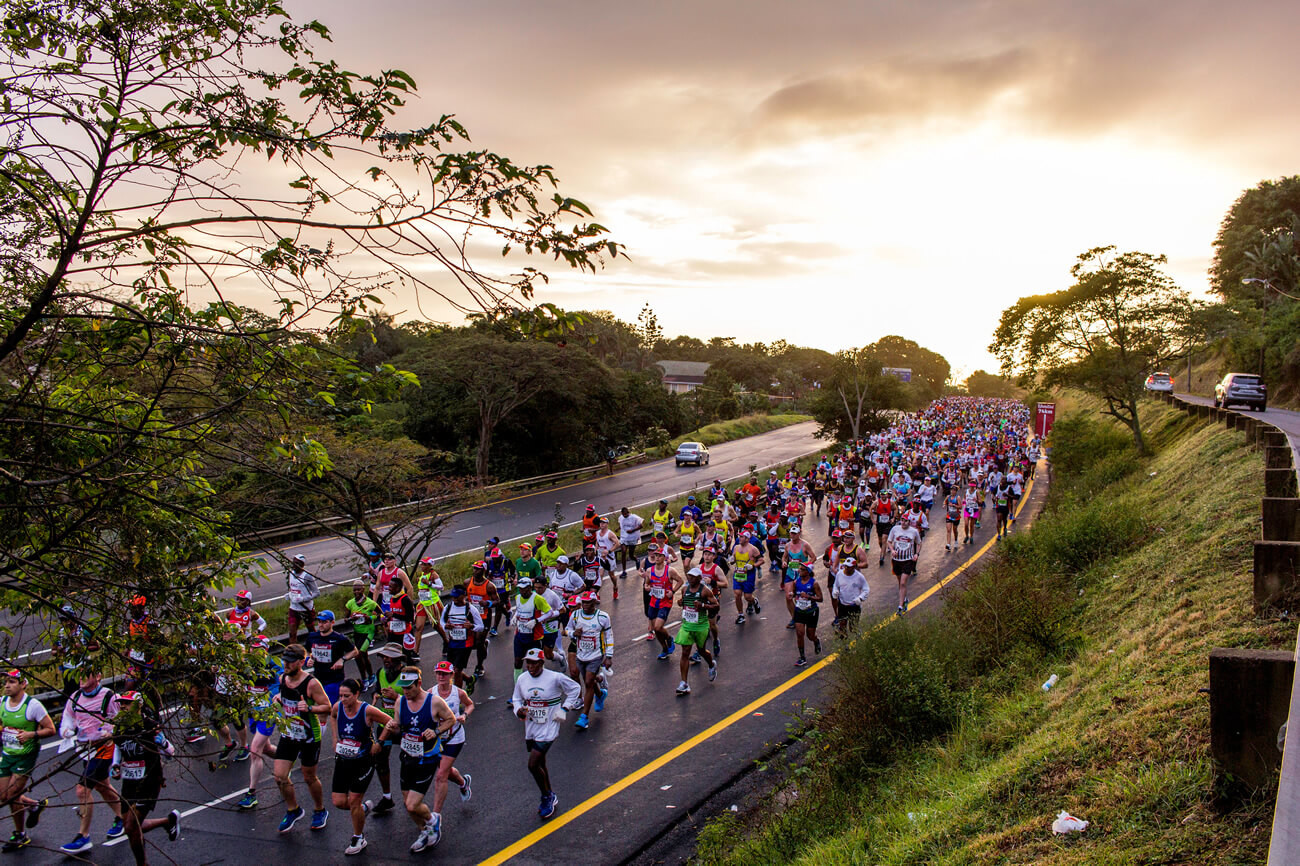
This decision comes in the wake of engagements with KwaZulu-Natal Athletics, Athletics South Africa, the National Coronavirus Command Council, members of the medical fraternity and governmental departments; and was a moral and practical imperative given the ongoing uncertainty and unprecedented circumstances of the Ccoronavirus pandemic, the onset of a second wave and a significantly more infectious variant of Covid-19, as well as the ongoing National State of Disaster and its associated restrictions.
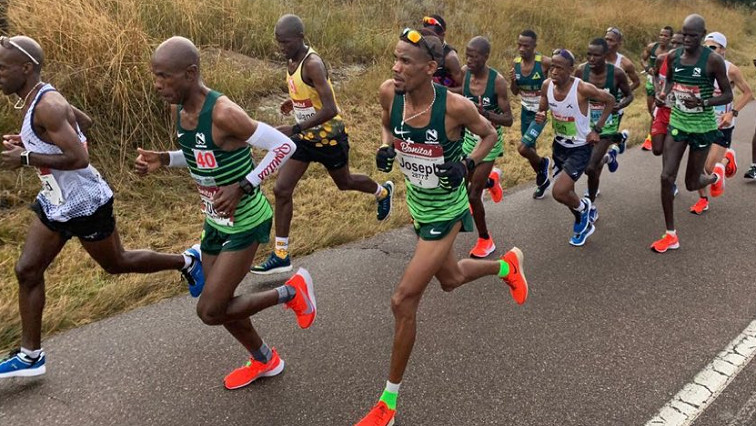
The CMA Board is determined the health, safety and welfare of Comrades runners, officials, volunteers and the general public remains paramount even after having held out hope the road running event would be hosted in June.
The impending third wave of Covid-19, widely anticipated around April to June has ended any such hopes and makes the hosting of any mass event in the near future highly unlikely.
However, the good news is the Comrades Centenary Celebrations are imminent.
With the first Comrades Marathon having been held on May 24,1921, the CMA will launch its Centenary Celebrations on May 24.
Other great news is that the CMA has confirmed its 2nd Comrades Marathon virtual event will take place on June 13, in which runners will be able to run in any location, outside in their garden, or neighbourhood, all at their own pace, in a similar fashion to last year’s successful inaugural Race the Comrades Legends which saw 43 788 participants from more than 100 nations uniting in a single virtual event.
CMA cairperson, Cheryl Winn urged runners to accept and respect the CMA’s decision which has been made in conjunction with KZNA, ASA and government restrictions, and most importantly, with the utmost regard for the health and welfare of our athletes, volunteers and all other stakeholders.
A secondary consideration was the risk of committing precious resources towards the staging of an event which might later be cancelled at short notice and the CMA Board’s obligation for the preservation of the 100-year-old event’s assets into the future.
(02/10/2021) ⚡AMPComrades Marathon
Arguably the greatest ultra marathon in the world where athletes come from all over the world to combine muscle and mental strength to conquer the approx 90kilometers between the cities of Pietermaritzburg and Durban, the event owes its beginnings to the vision of one man, World War I veteran Vic Clapham. A soldier, a dreamer, who had campaigned in East...
more...Ethiopia's Gudaf Tsegay breaks world indoor 1500m record in Lievin with 3:53.09
On an evening of stunning middle-distance performances at the Meeting Hauts-de-France Pas-de-Calais, Ethiopia's Gudaf Tsegay produced the highlight by taking two seconds off the world indoor 1500m record*, winning at the World Athletics Indoor Tour Gold meeting in 3:53.09.
The world bronze medallist followed the swift early tempo as the pacemaker led the field through 400m (58.97) and exited just before 800m, which Tsegay passed in 2:05.94. With three laps to go, Tsegay had a four-second lead over double European indoor champion Laura Muir but she showed no signs of slowing down, passing through 1000m in 2:37.36.
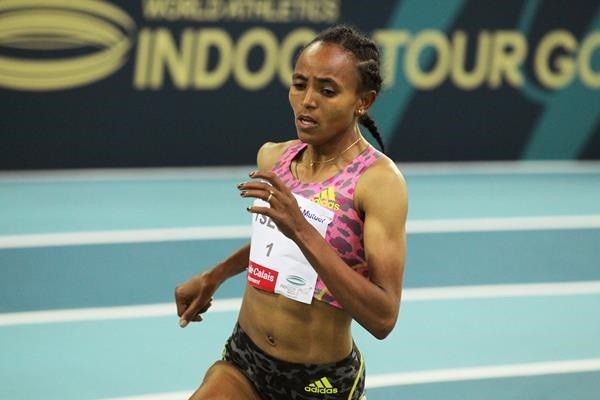
The clock read 2:52.9 with two laps to go and Tsegay maintained her pace with another lap just outside 30 seconds. She dug in for the final circuit and crossed the line in 3:53.09, taking more than two seconds off the world indoor record set by compatriot Genzebe Dibaba in Karlsruhe in 2014.
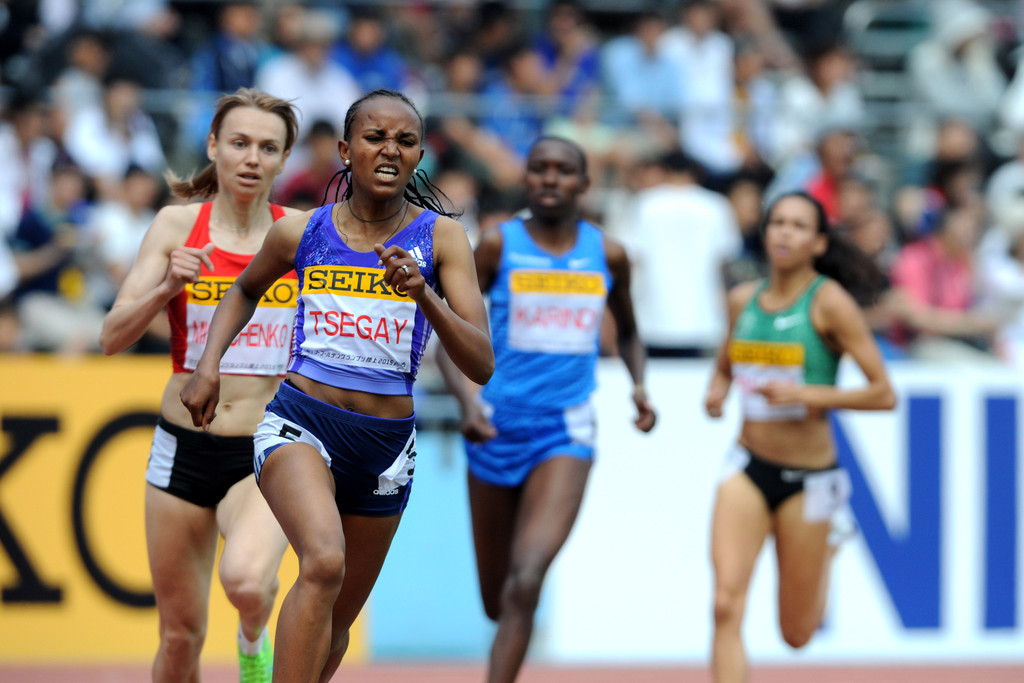
Muir finished second in a British indoor record of 3:59.58 with teammate Melissa Courtney-Bryant taking third in 4:04.79.
“I’m very happy to set a world indoor record,” said Tsegay. “I have been training really hard and I set myself a target to break the world indoor record.”
Tsegay's record-breaking performance was book-ended by two other athletes who very nearly broke world records.
Ethiopian steeplechase specialist Getnet Wale won the men's 3000m in 7:24.98, the second-fastest indoor performance in history, while USA's Grant Holloway won the men's 60m hurdles in 7.32, just 0.02 shy of the world indoor record.
Wale, still only 20 years old, led an Ethiopian 1-2-3-4 finish in the men’s 3000m as Daniel Komen’s long-standing world record of 7:24.90 was put under serious threat. The pace was fast and even as Vincent Keter led the field through the opening 1000m in 2:31.05 with the second kilometre covered in 2:30.
World 5000m silver medallist Selemon Barega hit the front with three-and-a-half laps to go with fellow Ethiopians Wale and world steeplechase silver medallist Lamecha Girma close behind. Wale took a turn at the front with two laps to go, then Girma kicked hard with 300 metres to go. Having seemingly misjudged his finish, Girma eased off the gas slightly with one lap remaining, allowing Wale and Barega to pass him.
(02/10/2021) ⚡AMPby World Athletics
2021 Gold Coast Marathon expects huge demand
Australia’s most popular holiday marathon event – the Village Roadshow Theme Parks Gold Coast Marathon – is set to return in 2021 with the announcement that entries will open at 09.00 on Monday 15 February.
Mayor of the City of Gold Coast Tom Tate said it was welcome news for the Gold Coast and Queensland after the event was forced to turn virtual in 2020 in response to COVID-19.
“I’m thrilled to see the event back after the coronavirus-driven loss of the 2020 edition saw the Gold Coast miss out on many million of dollars in economic impact. For over 40 years the marathon and associated events have enticed thousands upon thousands of visitors to escape to the Gold Coast from their colder home climates for an unmatched sports holiday experience. We will miss our international runners this year but by staging a successful event in July the Gold Coast will showcase to the world that we are again open for major events” said Mayor Tate.
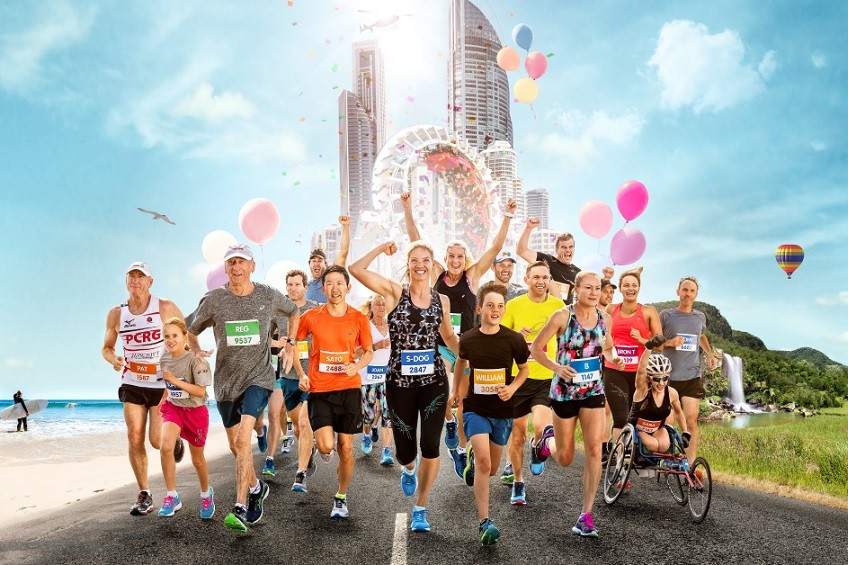
Village Roadshow Theme Parks General Manager of Marketing Renee Souter backed today’s announcement.“We are proud to support this iconic event as naming rights sponsor,” Ms Souter said. “The event showcases the Gold Coast like no other… When the runners and their families come to the Gold Coast they stay in our hotels, eat in our restaurants, shop in our shopping centres, and of course visit our theme parks.

Events Management Queensland CEO Cameron Hart said: “We have seen other smaller events adapting to the ‘new normal’ of event delivery with tight health regulations, social distancing and other responsible management measures. Subsequently we have developed extensive plans to balance all the health regulations while providing a world class running experience on course.”
“This year we have moved the ASICS Half Marathon from the Sunday to the Saturday to spread our crowd more evenly and we’ve cancelled the usual pre-race check-in centre and expo in favour of mailing out race kits. We have also implemented wave race starts, and we’ll be providing personal protection equipment to the runners.
The 2021 Village Roadshow Theme Parks Gold Coast Marathon will be run on Saturday 3 and Sunday 4 July, starting and finishing at the spectacular Southport Broadwater Parklands.
(02/10/2021) ⚡AMPGold Coast Airport Marathon
The Gold Coast Airport Marathon is held annually in one of the most popular holiday destinations in the world. It is Australia’s premier road race and was the first marathon in the country to hold an International Association of Athletics Federations (IAAF) Road Race Gold Label. The event is held on the first weekend of July and attracts more than...
more...The benefits of running after 60
Running after 60 can be as beneficial to your health as it was in your 20s.
There’s no doubt that if you run for fitness your speed will slow down as you age.

From your 30s onwards, a number of physical changes take place in the average person’s body. Aerobic capacity decreases, muscle mass reduces, muscle elasticity reduces, lung elasticity declines, bone density reduces, your metabolism slows, body fat increases, and your immune system becomes weaker, Owen Barder writes in the book “Running for Fitness.”
All these changes have an adverse effect on running performance. Yet, older runners can continue to achieve amazing athletic feats.

Benefits of running after 60
Canadian athlete Ed Whitlock ran a marathon in 2:54:48 at the age of 73. Carlos Lopes set the world marathon record at the age of 38. Hal Higdon, marathon runner and writer, at the age of 52 ran a 10km in 31:08 and a marathon in 2:29:27.
So you can’t run as fast as you did in your 20s and 30s. It’s all relative. The fact is you can continue to run into your 90s.
The health benefits of running for seniors are generally the same as for everybody else. They include reductions in the risks of heart disease, diabetes, high blood pressure, and cancer; reduced depression and anxiety; weight control; improved bones, muscles, and joints; improved mobility and coordination, and a psychological sense of well-being.
The risk for developing debilitating conditions increases as you grow older, so the benefits of running are increased.
Keep in mind that even moderate running is good for your health. At the conference of the European Society of Cardiology, Danish researchers presented data on a subset of 2000 joggers. They found that jogging at a moderate pace for a total of one to two-and-a-half hours per week over two or three sessions reduced the risk of death more than 44 percent over non-runners.
“Surprisingly, when individuals ran faster, longer or more frequently than this, the protective benefits of running disappeared,” writes Rashelle Brown. “Individuals who ran more often and more vigorously had about the same mortality rate as those who were sedentary.”
Another study looked at others health benefits of running for seniors: the effects of running versus walking on functional movement of 30 adults with an average age of 69. The study found that those who ran several days per week walked with the same muscular economy of average 20-year-olds.
If you want to start running for the first time or take up running after a long lull, it’s important to start out slowly.
First, you should let your doctor know of your plans and take heed of any concerns she might have.
Starting out with a walk or run program is a great strategy to build your muscles and endurance without risking injury that will set you back. Keep in mind walking can be just as health as running, except you have to walk longer to get the same health benefits as running.
Recovery after running
You also have to prioritize recovery more than when you were younger and build this into your running schedule. Also, use your experience to make more informed choices about your running.
Muscle mass declines with age, so you need some strength training to counter that. Just don’t overdo it. Stressing core exercises or using light dumbbells would do the trick.
Be diligent about stretching, both before and after exercise. As you age your flexibility decreases, and stretching compensates for that.
Other advice includes booking a regular massage to loosen the muscles that tighten from running, eating well (meaning a diet high in protein, carbs, fruits and vegetables), going soft by running on surfaces with some give like trails or even grass, and staying motivated.
“Keep entering races so you always have goals,” Jo Pavey writes in Runner’s World. “If you feel your fastest times are behind you, think about setting yourself a new set of (personal bests) for your new age group.”
(02/09/2021) ⚡AMPby Janet ODell
How should your running shoes fit?
Whether you run every day or once a week, it is crucial you have a pair of good-fitting and comfortable running shoes. If you do not, you could end up injuring your ankle or foot. There are many things to consider and look at when purchasing a pair of running shoes. So, here is a look at how to get the fit just right.
Be Aware That Sizes May Differ According to the Brand

The first thing to note is different brands of shoes can vary in size. You could try on the same size-number of shoes from two different brands and find one is a better fit than the other. Not having standard shoe sizes across the board can make it challenging to find the right pair of shoes, especially when you are shopping for running shoes. After all, you are sure to know that different running shoes can make or break your performance.

For example, Nike is a classic when it comes to running shoes due to its design, durability, and affordability. It is also readily available almost anywhere along with other major brands. However, its sizes vary and may be different from other brands. You also have to consider other factors like shoe width. So, when buying running shoes for men or for women, be aware that one brand may fit better than another. Some experts recommend that your running shoes should be about a size larger than your usual shoe size because swelling can often occur during and after running.
Try the Shoes On
Obviously, trying on running shoes is the only way to know whether they fit you perfectly for maximum comfort and support. So, do not buy your running shoes online. Instead, head to a brick-and-mortar shoe store. Even better, visit a store that specializes in running shoes. The staff members will know exactly how to select the right size and fit of shoe for your specific feet. The fitting process will begin with measuring both feet while you are standing up. If one foot is slightly larger than the other, you will want a pair of shoes that fit the bigger foot. You can always change the lacing or wear an additional sock on your smaller foot. Unlike regular shoe fittings where you simply walk around the store to gauge the shoes’ comfort, you should go for a short run in the shoes before purchasing them.
Assess the Size and Fit
To assess the size and fit of the shoes when trying them on, begin by taking out the inserts and standing on them. The inserts should match the size and shape of each foot, and the tip should come to a point approximately where your toes narrow. Then put the insert back in the shoes and lace the shoes tightly enough to lock over your navicular bone, but not so tight that they constrict your blood vessels. Stand up and consider how well the shoes fit.
You should have about a thumbnail’s width between the front of the shoe and your longest toe. The width of the shoe needs to fit just as well as the length. Check there is no or little pressure on your little toe and only slight pressure on your big toe. Then, walk and preferably run in the shoes to see how they really feel.
Make sure the heel does not slip and nothing rubs or pinches against your ankle. You should also check the upper’s fabric. If it gathers, you could need a snugger fit. If it stretches or bulges, you may need a larger size shoe.
(02/09/2021) ⚡AMPby Colorado Runner
2021 Tata Mumbai Marathon will be held on May 30
The Tata Mumbai Marathon will be held on May 30, it's promoters Procam International announced here on Tuesday.
"With cautious optimism and hope, this decision has been taken after deliberation and collaborative efforts with the state and civic authorities, including the Indian and international athletics bodies," a media release issued here said.
"Guided by the prevailing government protocol, Procam International will look to conduct the on-ground event, with limited participation in the Full Marathon, Half Marathon and 10 km runs."
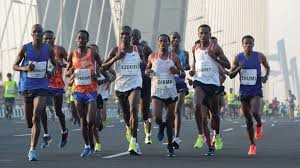
While limited numbers will run from their scheduled location, participants from across India and the world will be able to run with TMM from a location of their preference, via the official TMM 2021 App.
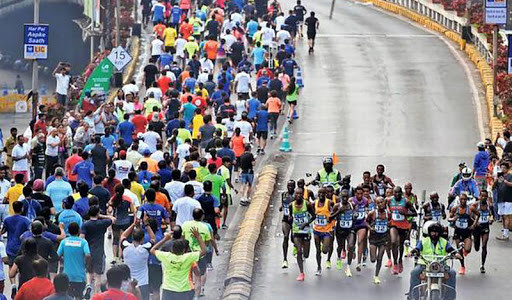
"The promoters shall continue to monitor the situation, with the single-minded focus of the safety of all participants, officials, volunteers and the running fraternity," the the release added.
The organizers claimed that the rescheduled date should give runners the necessary time to prepare as they continue with their training regimen.
They also said that details including the format of the race, registration details, safety measures, protocols and participant requirements, will be will be shared at a later date.
The Tata Mumbai Marathon is normally held in January.
(02/09/2021) ⚡AMPby Times of India
Tata Mumbai Marathon
Distance running epitomizes the power of one’s dreams and the awareness of one’s abilities to realize those dreams. Unlike other competitive sports, it is an intensely personal experience. The Tata Mumbai Marathon is One of the World's Leading Marathons. The event boasts of fundraising platform which is managed by United Way Mumbai, the official philanthropy partner of the event. Over...
more...American track and field athlete Jordan Gray has launched a campaign for a women's decathlon event to be included at the Paris 2024 Olympic Games
Gray is the holder of the American record for women's decathlon, scoring 7,921 points at an event sanctioned by USA Track and Field (USATF) in 2019.
The score was all the third highest of all time.

The 25-year-old has now launched "Let Women Decathlon" in a bid to have the event included at Paris 2024, despite the International Olympic Committee (IOC) confirming the programme for the Games in December.
A petition supporting the campaign has garnered more than 3,100 signatures.

"Today, hundreds of dedicated women decathletes around the globe are tirelessly training for their shot to make history at the 2024 Olympic Games," the petition description reads.
"Jordan Gray is one of them.
"She holds the highest decathlon score of any woman currently active in the sport, the American record, and the third highest score ever for women in the world.
"On behalf of all female decathletes, all she wants is an equal chance to compete.
"Women’s decathlon is already in place at the highest levels of sport, including the USATF and World Athletics.
"Like many of her peers, Jordan is prepared to represent her country in the heptathlon at the 2024 Olympics.
"But she has a simple question for the IOC - 'If we’re succeeding in the 10 events of the decathlon, why aren’t we allowed to compete at the Olympics?'"
Gray's campaign for Paris is unlikely to be successful with the Paris 2024 programme already confirmed, but Los Angeles 2028 may be a more realistic target.
She told NBC she hoped women's decathlon would have achieved Olympic inclusion by then.
"Hopefully in 2028, I’ll be 32 and rocking it at the US Championships in the decathlon," Gray said.
The Paris 2024 Olympics Games will have an equal number of men and women competing for the first time.
A decathlon for men first appeared on the Olympic programme at Stockholm 1912.
It is one of the few events not contested by both men and women at the Games.
Pentathlon was then added for female competitors at Tokyo 1964, before it was replaced by the heptathlon at Los Angeles 1984.
(02/09/2021) ⚡AMPby Nancy Gillen
Paris 2024 Olympic Games
For this historic event, the City of Light is thinking big! Visitors will be able to watch events at top sporting venues in Paris and the Paris region, as well as at emblematic monuments in the capital visited by several millions of tourists each year. The promise of exceptional moments to experience in an exceptional setting! A great way to...
more...Runners will be able to support cancer charity at 2021 London Marathon
North-east people will find out today if they have been successful in securing a ballot spot in this year's London Marathon.
The event on Sunday, October 3, sponsored by Virgin Money, is set to be the biggest staged with 50,000 running from Blackheath to The Mall and another 50,000 running the virtual marathon from wherever they are in the world.
Macmillan Cancer Support is the charity of the year for Virgin Money and official charity partner for the 2021 London Marathon, and is inviting lucky runners who bagged themselves a ballot spot to join and fundraise for #TeamMacmillan, while reminding those who missed out that there is still time to apply for a charity place.
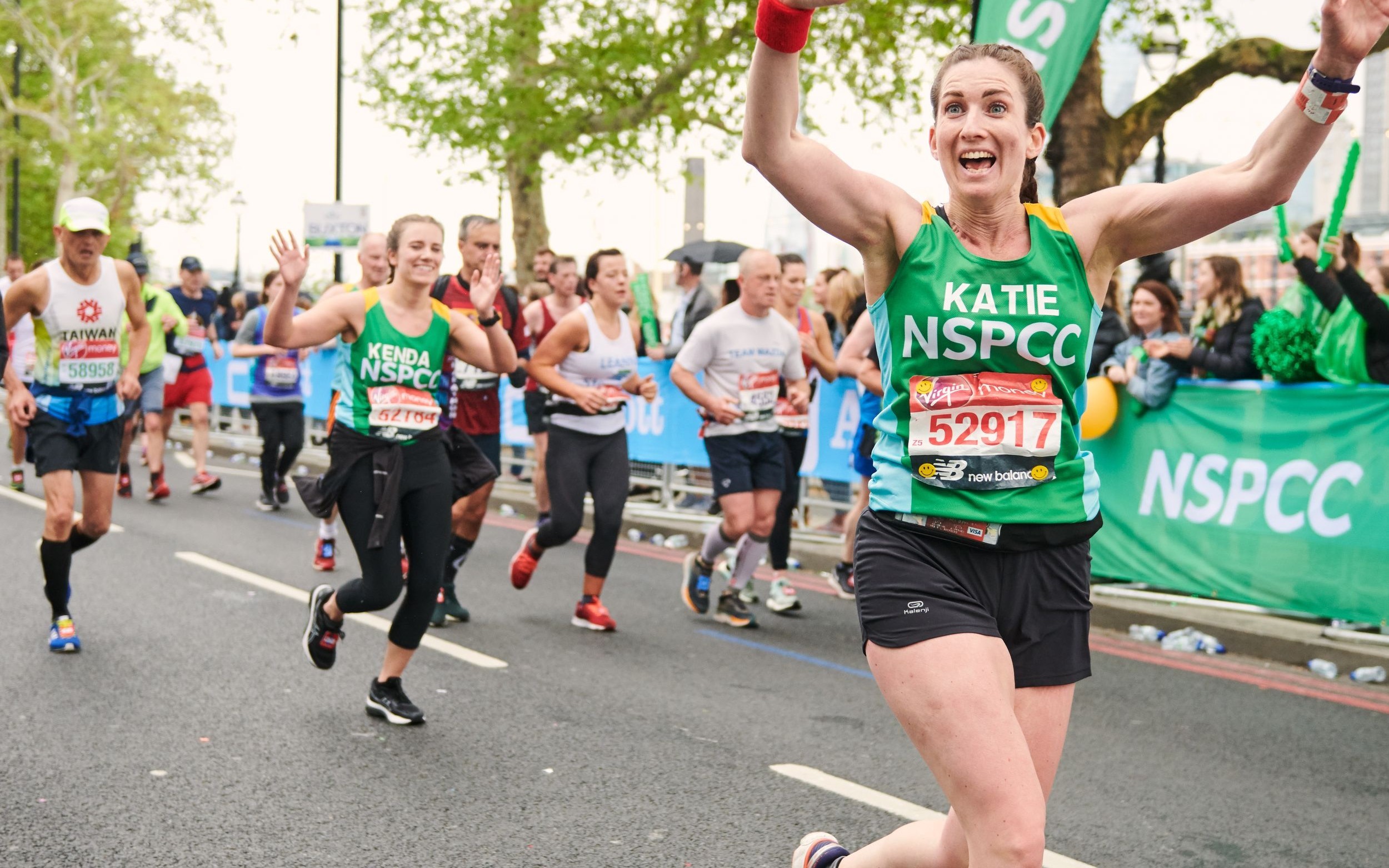
Funds raised through the Macmillan places will help the charity provide vital support, at a time when it is facing a loss of income due to Covid-19, and continue to do whatever it takes to be there for everyone, from day one of their cancer diagnosis.

Executive director fundraising, marketing and innovation for Macmillan Cancer Support Claire Rowney said: “We’re thrilled to be the official charity of the year for the 2021 Virgin Money London Marathon and can’t wait to cheer on our Team Macmillan runners in what is set to be the biggest marathon ever.
“The Covid-19 pandemic has had a devastating impact on our income, at a time when people living with cancer need our support more than ever to help navigate through this anxious period.
"The vital funds raised through runners and supporters of this year’s event will help us continue to do whatever it takes to be there for everyone living with cancer.
“Whether you’re planning to run the 26.2 miles, cheer on our runners from the side-lines or make a donation as part of Team Macmillan, you will be helping us be there for everyone, from day one of their diagnosis.”
New research published by Macmillan Cancer Support reveals that an estimated 530,000 people across Scotland have turned to running or jogging to look after their mental health during the Covid-19 crisis.
People can join #TeamMacmillan with their ballot spot or can apply for a charity place in the 2021 Virgin Money London Marathon, at LondonMarathon.Macmillan.org.uk
(02/08/2021) ⚡AMPby Kyle Ritchie
TCS London Marathon
The London Marathon was first run on March 29, 1981 and has been held in the spring of every year since 2010. It is sponsored by Virgin Money and was founded by the former Olympic champion and journalist Chris Brasher and Welsh athlete John Disley. It is organized by Hugh Brasher (son of Chris) as Race Director and Nick Bitel...
more...Sandra Chebet wins fourth Nairobi Cross Country title and she is eager to represent Kenya at the Tokyo Olympic Games
Langáta’s Sandra Chebet blew away the field to seal her fourth victory in the senior women’s 10km race during the Athletics Kenya Nairobi Cross Country Championships at Kenya Prisons Service grounds, Nairobi West on Sunday.
Sandra, the 2017 Africa 5,000m silver medallist, her sister Emily Chebet (Langáta) and Margaret Nduta (Embakasi) went head-to-head in the first two laps of the five-lap course before Sandra went for the kill.
Sandra would tear the gusty course with ease to gradually build on her lead before carrying the day in 33 minutes and 48.7 seconds, beating Emily to second place in 35:07.8.
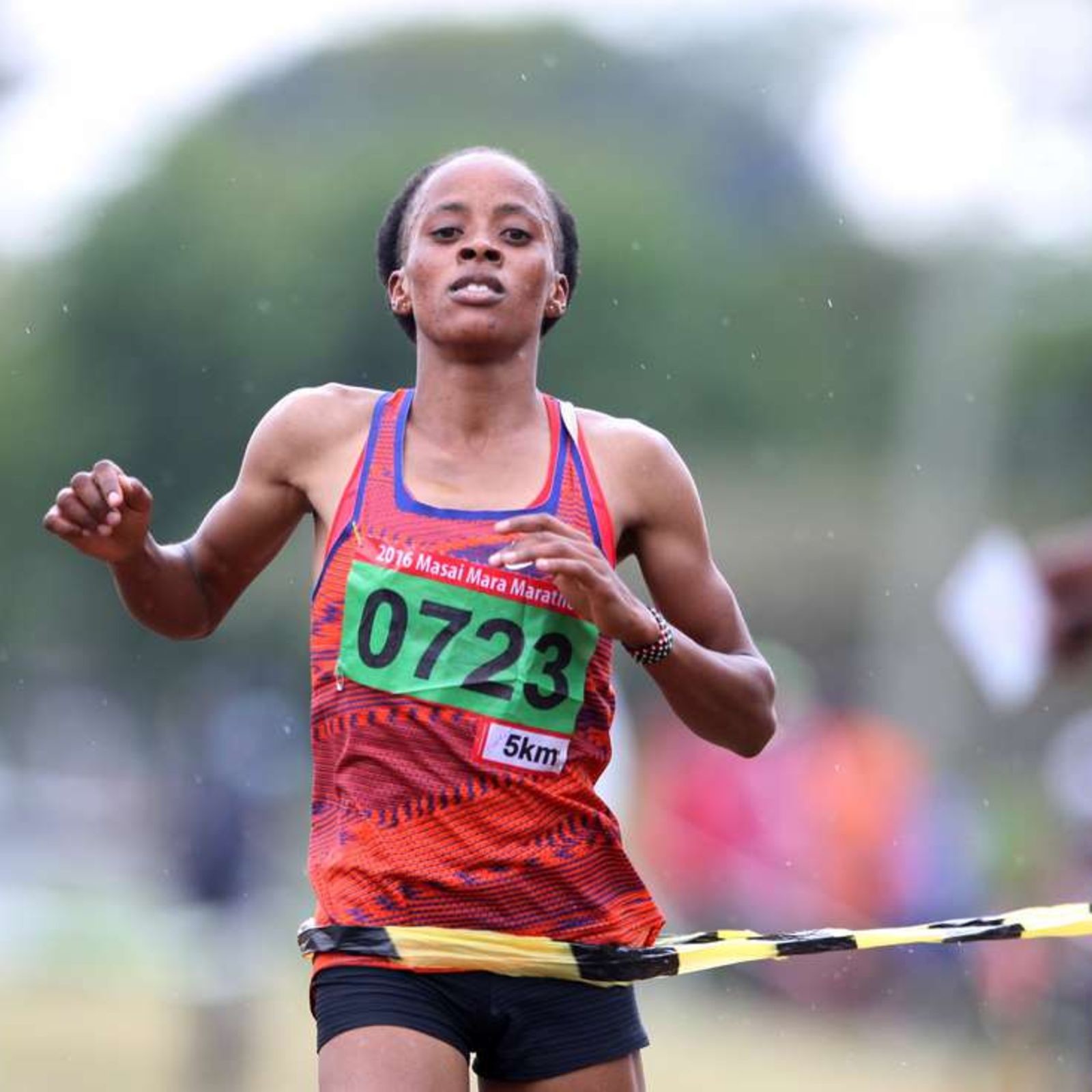
Ndunta eased home in third place in 35:41.6 followed by Ann Nasisyo (Langáta), Bency Cheruiyot (makadara) and Emily Chepkemoi (Kasarani) in 36:07.1, 36:26.1 and 36:27.5 respectively to seal their places in the Nairobi team for the National Cross Country Championships on February 13 in Nairobi.
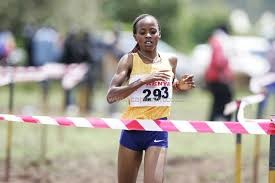
“It’s feels great to retain my title and more so win for the sixth time in Nairobi. I have two junior titles here and this is my fourth senior crown. I thank God for the great health,” said Sandra, who is eager to break it to the big staged.
“I really want to break the duck at the nationals where I have taken part several times without success,” said the 23-year-old Sandra, was fresh from finishing ninth at Discovery Cross Country 10km race in Eldoret the previous weekend.
Sandra, who trains at Lemotit Camp, Londiani, Kericho, is also eager to represent Kenya in 10,000m at the Tokyo Olympic Games later this year.
Trizah Cherotich from Langáta won women’s Under-20 6km race in 21:25.6, beating teammate Dorcus Chepkemoi (21:49.0) and Westlands’ Regina Wambui (22:26.9) op second and third places respectively. Mirriam Chemutai was untouchable in girls’ under-18 5km contest, where she clocked 17:17.3, beating Fancy Chepkorir and Sharon Chepkemei in 17:22.7 and 17:40.9 in that order.
(02/08/2021) ⚡AMPby Ayumba Ayodi
Tokyo 2020 Olympic Games
Fifty-six years after having organized the Olympic Games, the Japanese capital will be hosting a Summer edition for the second time, originally scheduled from July 24 to August 9, 2020, the games were postponed due to coronavirus outbreak, the postponed Tokyo Olympics will be held from July 23 to August 8 in 2021, according to the International Olympic Committee decision. ...
more...USA’s Athing Mu sped to a 50.52 record clocking, to win the 400m at the Charlie Thomas Invitational in College Station
Two of the world’s most talented teenagers produced stand-out performances on either side of the Atlantic on Saturday.
USA’s Athing Mu sped to a 50.52 clocking to win the 400m at the Charlie Thomas Invitational in College Station. If ratified, the 18-year-old’s time would improve the official world U20 indoor record of 50.82 set by 2012 Olympic champion Sanya Richards-Ross.
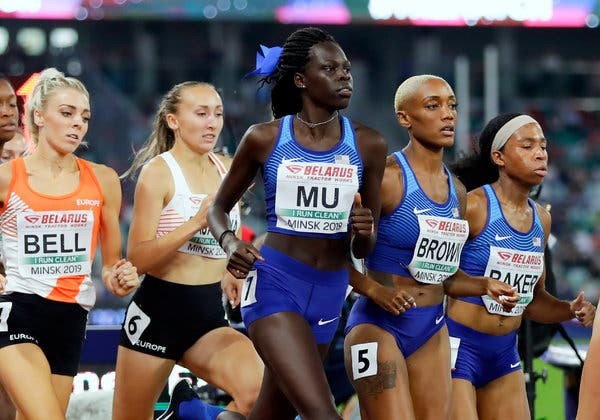
The fastest indoor time ever achieved by an U20 sprinter, however, remains the 50.36 clocking set by Sydney McLaughlin in 2018; her time could not be ratified as a world U20 indoor record. Mu now moves to 20th on the senior world all-time indoor list and fourth on the senior US list.

In recent weeks, Mu has been lighting up indoor tracks on the US collegiate circuit. She clocked a North American U20 indoor record of 2:01.07 for 800m in January and followed it one week later with a world-leading 1:25.80 run over 600m. Last week she ran a 50.5 anchor leg in a 4x400m in Lubbock, hinting at her potential for the individual 400m.
Jamaica’s Charokee Young finished a distant second to Mu in College Station, running 51.93.
The men’s 400m in College Station also produced some swift times with Noah Williams setting an outright PB of 45.47 to win from Sean Burrell (45.57). St Lucia’s Julien Alfred won the women’s 60m in 7.17, having clocked 7.15 in the heats.
Adrian Piperi, the 2015 world U18 shot put champion, produced a big PB of 21.74m to move up to 11th on the US indoor all-time list.
European U20 long jump champion Larissa Iapichino got her 2021 campaign off to a flying start, quite literally, at the Italian U23/U20 Championships in Ancona on Saturday (6).
The 18-year-old leapt an indoor PB of 6.53m in the second round, beating her own national U20 indoor record, and then improved to 6.70m in round three. She went even farther in the fifth round, leaping 6.75m.
Her winning mark moves her up to fourth on the world U20 indoor all-time list and is just 13 centimeters shy of the world U20 indoor record set by Heike Drechsler back in 1983.
(02/08/2021) ⚡AMPby World Athletics
2021 Sahara Marathon will go virtual
The solidarity race with the Saharawi refugees will be held in a virtual way during the last week of February. Participants will be able to run in their country while supporting the humanitarian project.in support of Western Sahara at this very delicate moment.
The Sahara needs us like never before. At a time when Covid19 has hit the whole world, the Saharawi refugee camps in Tindouf are experiencing an extremely complicated situation in which their precarious living conditions are compounded by the impact of the pandemic and the consequences of the war conflict that has resumed after 30 years of ceasefire.
In these circumstances and given the impossibility of performing the Sahara Marathon in person and with the assistance of runners from all over the world, the organisation of the solidarity race has launched a very special edition with a virtual event. Runners and supporters of the Saharawi cause will be able to participate in the prestigious race through a digital application that will be available once the registration is made (EUR 15 [USD 18]) and that will allow the athletes to run from anywhere in the world.
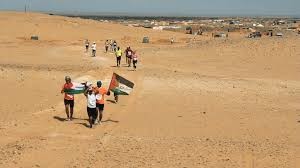
The Sahara Marathon is a solidarity race organised by the Saharawi Ministry of Youth and Sports and a group of volunteers from different countries. During the last twenty years, the race in the desert has served as a platform to denounce the unjust situation that exists in Western Sahara and to tackle countless solidarity projects in the refugee camps. Thousands of runners from all continents have travelled during this time to the Algerian desert to live the experience provided by this race and to bond with refugee families. In this unique edition of 2021, the objectives of the event remain, although the experience will be different.

Participants will be able to carry out their race during the last week of February. They will be able to choose the most appropriate distance (5, 10, 21 or 42 km) and even run in different distances or repeat the race throughout the week (the best time will be validated). The application also invites runners to upload their videos and messages of solidarity with the Sahara to their social networks. All the money contributed for this solidarity project, as well as the donations or acquisitions of the inscription pack (T-shirt, tubular scarf and bib number), will be used in the Sahara Marathon solidarity project, which on this occasion is about Saharawi families in need of direct help, through the purchase and distribution of a basic food basket bought on site to favour the local economy.
On 26 February, the usual date for holding the marathon in other editions, a race (5, 10 km and children race) will be organised in the Saharawi refugee camps, where Saharawi athletes will participate, with the aim of keeping the spirit of the Sahara Marathon alive . The pandemic has caused significant restrictions to humanitarian aid for the Saharawi refugee camps during the last year, as well as to all the visits of aid workers and people in solidarity with the Saharawi, leading the refugee camps to a humanitarian crisis that is added to the global health crisis,. We therefore invite all regular participants in the Sahara Marathon, as well as all those committed to this cause, to support this alternative project by participating in the virtual race or contributing a small donation via www.saharamarathon.org. As it says on the official race jersey: “The desert wind will spread the Saharawi voice around the world.”
(02/08/2021) ⚡AMPSahara Marathon
The Sahara Marathon is an international sport event to demonstrate solidarity with the Saharawi people. Its first edition is in 2001, from an idea of Jeb Carney. It’s organized by the Secretary of State for Sport, Government of the Sahrawi Arab Democratic Republic with the help of volunteers from all over the world. The Sahara Marathon, which along with the...
more...German Ultrarunner Florian Neuschwander Breaks the 100K Treadmill World Record
He ran a 6:13 pace for six and a half hours on a treadmill!
German ultrarunner Florian Neuschwander has proven once again that he is a master of the treadmill, capturing the 100K treadmill world record on January 30.
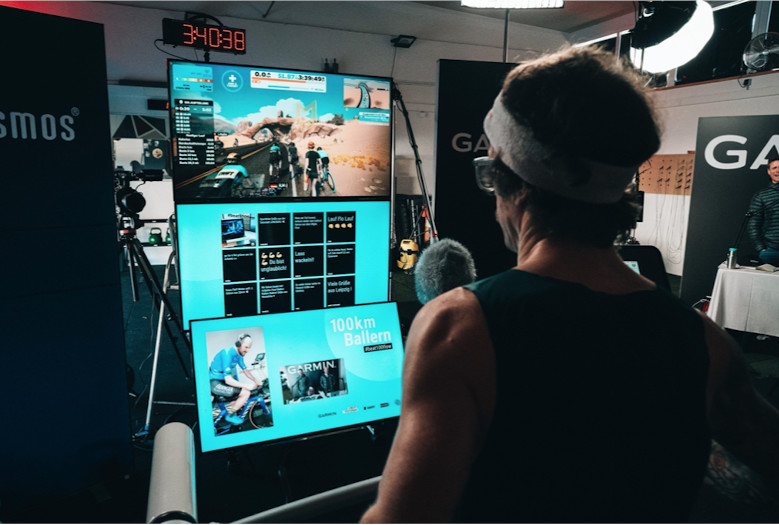
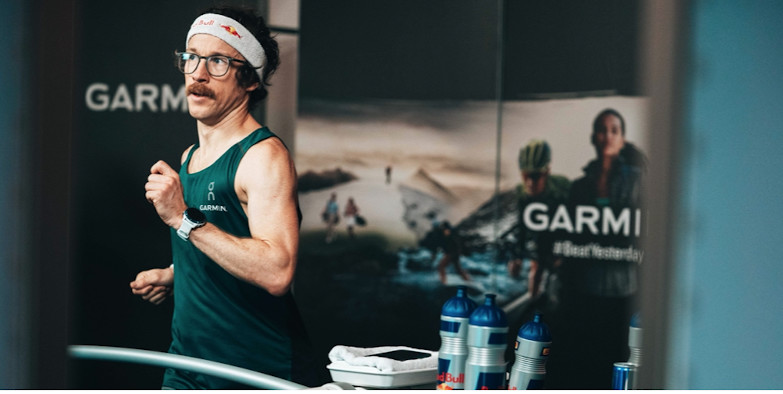
The 39-year-old completed the distance in 6:26:08—an average of 6:13 per mile!—beating the previous record by six minutes.
Neuschwander, 39, is no stranger to treadmill records. He captured the 50K treadmill world record in March 2020, running 2:57:25. But that mark was bested a few more times before the end of the year by runners like Matthias Kyburz and Tyler Andrews.
In October, Neuschwander considered again going after the 50K record—Andrews’s 2:42:51—but instead, he thought he might be more successful going after the 100K record of 6:39:25, set by Mexican-American runner Mario Mendoza in June 2020.
“I planned this run because where I live, we have good snow and it’s icy, and I don’t like to run every day in the cold temperatures or slip,” Neuschwander told Runner’s World. “I always train on the treadmill in the winter and we decided to do it with about 10 to 12 weeks to prepare.”
Neuschwander kept his mileage relatively low for training, logging between 60 to 80 miles a week. He supplemented that with Zwift cycling and backcountry skiing. His biggest runs came on long treadmill efforts: two marathons, four 50Ks, and two 60Ks. The run that gave him the most confidence for his record attempt was a 50K test run he did, which he finished six minutes faster than his world record time.
With the help of one of his sponsors, Garmin, and treadmill company, H/P/Cosmos, Neuschwander set up in a small gym near his home in Germany. With plenty of fresh air flowing in and three screens in front of him to look at for entertainment and motivation, Neuschwander put some Squirrel Nut Butter on his feet to prevent blisters, donned his On Cloudflow shoes, and started up his treadmill and Zwift for the six-plus hours of running ahead. 

“The first half was flying by. It was really fast,” he said. “On the screens, I had comments, texts, and videos that helped me a lot from people who were watching the live stream. That helped me get through to the 60K, which I knew should be easy because I had done it before. After that, it was uncharted territory.”
Neuschwander’s treadmill speed was around 15.6 km/hr throughout the entire run, but his toughest stretch between came between 75 and 85K, when he got some cramps in his quads and he dropped his speed down to 15.1 km/hr (9.38 mph), his slowest of the day. He continued to take his Maurten mixed drink every hour for fuel, supplemented by water, which helped the cramps subside.
For the final 10K, Neuschwander added two Red Bulls mixed with water to his routine and cranked up the speed to 17 km/hr (10.5 mph). This turned out to be too fast after six hours of running, but that didn’t stop him from trying to go faster.
“I went again to 15.5, and then I’d move it up and down, up and down, up and down because I wanted to go faster faster faster,” he said. “But at the same time, I was afraid I’d cramp so I slowed down again. But that last 10K was 36:05, which meant I speeded up after six hours of running.”
Neuschwander got the record comfortably, finish six minutes ahead of the previous record with a time of 6:26:08. That’s an average of 6:13 per mile. The new record-holder admitted that he was worried he would have wobbly legs or that he’d fall down when he got off, but he didn’t experience that.
“For me, treadmill running isn’t really hard,” he said. “The main thing is to have fresh air. This is hard, but if you have a lot of fresh air, your heart rate goes down. In the gym, we had a big door open and it was nearly like outdoor running but in one place.”
With most things still shut down, celebrations were limited after his record run. Neuschwander said he celebrated with his wife and kid and he ate two big pizzas and had two beers.
With his race schedule uncertain at the moment because of the pandemic, Neuschwander plans to continue training for the 100K German Championships in the fall. There or in time, he hopes to capture the German 100K record—6:24:29. After seeing Jim Walmsley miss the 100K record by 11 seconds on January 23, he said his goal that he’d be happy with is a sub 6:20.
(02/07/2021) ⚡AMPby Runner’s World
People Are Double-Masking More and More and, Sometimes, That Includes Runners
While the CDC hasn’t officially recommended it yet, here’s what experts want you to know to stay safe and slow the spread
From healthcare workers to politicians, double-masking is the latest coronavirus trend. In a press briefing Wednesday February 3, National Institute of Allergy and Infectious Disease (NIAID) director Anthony Fauci, M.D. said that double masking could be a common-sense approach in mitigating the spread of COVID-19. He even added that he wears two masks in situations where he won’t be able to sufficiently socially distance himself from others. But does that mean runners should think about wearing two masks when training?
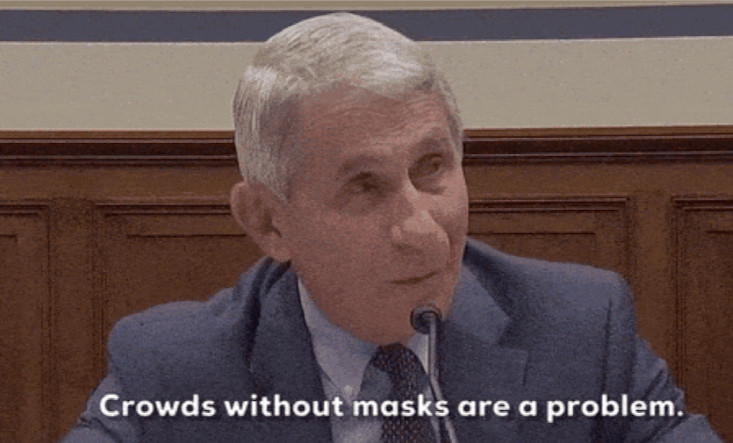
Fauci said the CDC will continue to update recommendations as more research is completed, but in the meantime, here’s what you need to know about double-masking, according to David Nieman, Dr.PH., health professor at Appalachian State University and director of the Human Performance Lab at the North Carolina Research Campus, Brian Labus, Ph.D., MPH, assistant professor in the School of Public Health at the University of Nevada Las Vegas, and Matt Ferrari Ph.D., associate professor of biology in the Eberly College of Science, and a researcher with the Center for Infectious Disease Dynamics at Penn State.
Why are people double masking?
First and foremost—the focus is still on using high-quality masks that will protect the wearer and others, explains Ferrari. That means it’s important to find a mask with good filtering material and a proper fit. Your mask should cover your nose and mouth, and fit snugly to the face with no gaps. (Get more helpful mask-wearing tips from the CDC here.)
“Two masks might be the way to do that, but one really good mask, say a KN95, may still be better than two single-ply gaiters,” Ferrari says.
For context, an N95 respirator, the U.S. standard that should be reserved for healthcare workers, and the KN95 mask, the China standard, both filter 95 percent of aerosols and protect the wearer better than a single layer fabric mask.
“What we are usually talking about with double-masking is doubling up on the fabric masks to increase filtration,” Labus says. But the caveat is, both masks need to fit properly.
And, adding a less-effective fabric mask over an N95 or KN95 mask won’t provide much additional protection. However, medical professionals sometimes do this to help extend the life of the masks, as PPE has been in short supply.
When might double-masking be necessary?
Wearing a well-fitting mask (or two) may be especially important for protecting others and yourself if you are in a setting where people are close together or breathing heavily, such as a gym.
“If you’re an athlete and going to be with other people indoors I would highly recommend double-masking,” says Nieman.
Currently, the CDC suggests that you wear masks with two or more layers of washable, breathable fabric, and avoid using those intended for healthcare workers, such as N95 or surgical masks. However, opting for a KN95 is okay, because U.S. healthcare workers don’t use that mask, explains Nieman.
“It gets old saying it, but if you have the luxury of avoiding settings where you would need to double-mask—indoors, poorly ventilated, crowded—then avoiding those settings is better than two, or three, or four masks,” says Ferrari.
For runners, this may mean avoiding a crowded gym and instead opting to run outside where there is plenty of space for distancing or setting up a home gym space.
However, if you can’t avoid indoor settings with other individuals (say, for work or to care for others) then double-masking may provide the extra protection to reduce risk in high-density indoor settings.
What is the best way to double-mask?
“As with a single mask, it’s about having a good fit to your face,” explains Labus. Ensure that your mask or masks cover from above your nose to below your chin, and that air is not escaping around the sides.
“In addition to the extra filtration provided by the second mask, [doubling] can also allow the mask to fit better on your face, covering any gaps from the first mask,” Labus says.
But two bad masks are not necessarily better than one good one. In fact, the healthcare industry has shown that one, high-quality, well-fitted mask can be very effective, says Ferrari. And, leakage tends to be a problem in masks, so even if you’re wearing two masks, if they don’t fit well, they won’t be effective at protecting others, says Nieman.
What is the best mask to wear while working out?
That all depends on what the masks are made of. Masks like an N95 or KN95 are designed to filter out much smaller particles than a cloth mask and require more effort to breathe through. So, even if you are just wearing a single high-filtration mask, it’s likely not going to work to wear during intense exercise, because once you begin sweating, breathing will become more difficult.
It also depends on what type of exercise you are doing. If you’re lifting weights and don’t expect to get breathless as you would when doing treadmill intervals, a KN95 and cloth mask or two cloth masks may work just fine, says Nieman. But, once you start to sweat and breathe harder, that’s when it can get tricky.
Nieman recommends finding a mask that is at least double-ply with tightly woven fabric or one that is specially made for exercising, such as the Under Armour Sportsmask, which is used in his lab when tests are being done.
“Try to focus on workouts and activities where the mask isn’t the limiting factor. Outdoors and distanced is better for everyone,” says Ferrari. This might mean getting creative with your workouts if you live in a cold climate or trying other socially-distant cross-training activities like Nordic skiing.
The bottom line: Remember, the CDC has not yet changed their recommendations and still recommends a single fabric mask that’s at least two layers. While some are starting to wear two, it is still okay to wear a single mask, says Labus. That second mask can provide some extra protection, but wearing any mask is much, much better than not wearing one at all.
“If you’ll be near others, or out running with friends, wear a mask. If you have to do an indoor workout with others in the gym make sure you’re masked up with the best filtering, best fitting mask(s) you’ve got,” says Ferrari.
(02/07/2021) ⚡AMP
by Runner’s World
Two Oceans Marathon Cancelled Due To COVID-19
Cape Town’s premier running event, the Two Oceans Marathon scheduled for Easter Saturday, April 3, has been cancelled because of the COVID-19 pandemic. The 56 km race is the second largest ultramarathon in South Africa and has been held since 1970. According to a media release by the race organizers, “the current pandemic climate, [and] the health risks around hosting the… mass participation event are far too significant for the event to proceed safely.”
“It is never pleasant when an event like this is disrupted and which in turn affects the fixture calendar and the many athletes who are already planning for that day,” said Jakes Jacobs, President of Western Province Athletics (the provincial authority for the event). “However, it is even more painful to us when an event of this magnitude is forced to be cancelled. Unfortunately, the pandemic knows no bounds and… no one knows when it will be put under control or even be eliminated, if at all. We have consulted with Athletics South Africa regarding the race. Western Province Athletics and the organizers eventually took this final decision after taking into consideration the many factors in the management of the event and the current behavior of the virus.”

The organizers said while they did consider a postponement of the event to a later date, they are “planning alternative events and programmes… within the prevailing regulations”. These will be announced soon.
Cape Town’s premier running event, the Two Oceans Marathon scheduled for Easter Saturday, April 3, has been cancelled because of the COVID-19 pandemic. The 56 km race is the second largest ultramarathon in South Africa and has been held since 1970. According to a media release by the race organizers, “the current pandemic climate, [and] the health risks around hosting the… mass participation event are far too significant for the event to proceed safely.”
“It is never pleasant when an event like this is disrupted and which in turn affects the fixture calendar and the many athletes who are already planning for that day,” said Jakes Jacobs, President of Western Province Athletics (the provincial authority for the event). “However, it is even more painful to us when an event of this magnitude is forced to be cancelled. Unfortunately, the pandemic knows no bounds and… no one knows when it will be put under control or even be eliminated, if at all. We have consulted with Athletics South Africa regarding the race. Western Province Athletics and the organizers eventually took this final decision after taking into consideration the many factors in the management of the event and the current behavior of the virus.”
The organizers said while they did consider a postponement of the event to a later date, they are “planning alternative events and programmes… within the prevailing regulations”. These will be announced soon.
The Two Oceans was also cancelled in 2020, when it would have been the 51st running of the ultramarathon (and the 23rd of the accompanying half-marathon). When it was last held in 2019, the winners were Bongmusa Mthembu and Gerda Steyn (her second consecutive victory). The race had 12,026 finishers; the combined total of 26,509 finishers in the ultra and half-marathon easily makes it the biggest running event in South Africa.
Almost simultaneously with this news, Athletics South Africa announced that track and field events can resume this weekend after several months of no activity. It is expected that the country’s COVID-19 lockdown level will be lowered by the government before or on February 15, which would increase the limit on the number of people allowed at public gatherings such as track and field meetings and road races.
(02/07/2021) ⚡AMPby Let’s Run
Joy Kramarich: running and nursing during COVID-19
The COVID-19 pandemic has been stressful and scary for all of us, but has been uniquely challenging for frontline healthcare workers. Joy Kramarich is a runner with the University of Toronto Track and Field Club (UTTC) Masters Division and a trauma nurse at the Sunnybrook Health Sciences Centre in Toronto. She spoke with us about her experience working on the front lines of the COVID-19 pandemic and what running has meant to her during this difficult year
Not surprisingly, work for the 60-year-old Oakville resident has been demanding, challenging and marked with ambiguity since the pandemic began. Her hours have been long, working 12-hour shifts with minimal breaks, and she and many of her colleagues have been working double shifts and overtime in order to provide ongoing care to the high volume of patients who are coming through their doors.

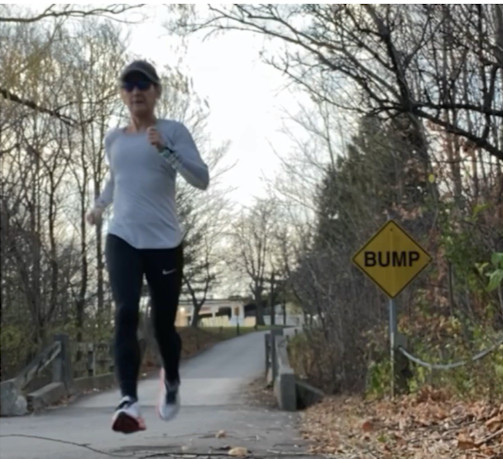
For many people, working conditions like these would be an understandable reason to allow their running regime to fall by the wayside, but not for Kramarich. Her mileage has actually increased throughout the pandemic, and there have been many weeks where she’s run a solid 110 kilometres, despite working 60 hours or more.
“COVID and the government-mandated restrictions related to COVID has given me
tremendous focus with respect to my running,” she says. “The hours of the day have been relegated to work and running, since that was all there was and often still is.”
Kramarich has been running since elementary school, she has appreciated the ability to run even more throughout the pandemic, as it allows her to get outside and move, be alone with her thoughts and decompress from the stress of work. She explains that running has provided encouragement when it feels like life is so dismal for so many, and provides her with the motivation to carry on
Running has also been a source of gratitude for Kramarich, reminding her how lucky she is to be alive, that she can move and breathe and that she and her family are safe and healthy at a time so many people have lost so much.
“There are no races on the road or the track, no requirement to run a certain distance in a certain time. It has simply been about the ability to run, which I love and which I do every day, even on the days that I work.”
Kramarich emphasizes that while she is a runner, that is only a small part of who she is. She is a mother, a coach, a teacher and a nurse, and her goal is to make a difference in the lives of all of her patients and her families. The exceedingly high demands on the healthcare system over this last year, however, have made it increasingly difficult for her and her colleagues to provide the same level of care that they ordinarily could. She also recognizes that this has been a difficult time for everyone, not just healthcare workers, but stresses the importance of following the government guidelines and initiatives to help minimize the spread of the virus, pointing out that even runners who are healthy are not immune.
The hope, of course, is that we will soon be able to get back to training in groups and racing again. For Kramarich, that means getting back to training with her masters group at U of T.
“Now that I am a Masters athlete and at this time in my life, I am cognizant of the fact that running is now a leisure activity, something that I am able to do in my free time,” she explains. “I think it is fantastic that we can still run and participate in running events and track meets. It enables me to supplement my daily life with a much loved and easily accessible physical activity.
(02/07/2021) ⚡AMPby Running Magazine
Four Recovery Nutrition Mistakes Runners Make
Even with the best of intentions, post-run recovery can take a hit due to confusion on nutrition recommendations or lack of planning or preparation. Nutrition is a key player in your ability to bounce back for the next day of training, especially if you have done a long run, higher intensity session or a double day. Make the most of it by taking these steps to ensure you are making the most of your post-run nutrition.
Mistake #1) No carb with protein post-workout
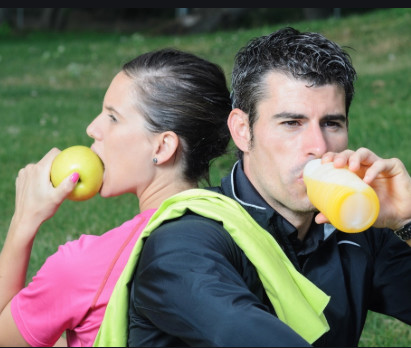
"But I had my protein shake post-workout, so I should be good!" While it is a good idea to have some protein post-exercise to boost amino acid consumption and help with muscle repair, the priority should be to replace carbohydrates. Having carbohydrates with protein stimulates a higher insulin response, which can help with glycogen regeneration and muscle protein synthesis. Aim for a 3:1 ratio of carbs to protein (45-60G of carb) and 15-20G of protein. A parfait of yogurt with berries and granola fits the bill.
Mistake #2) No hydration
While running, you lose fluids and electrolytes, even in winter! Replacing lost fluids is a good way to ensure that you are setting yourself up properly for the next training session. Scientific recommendations are to replace 150 percent of fluids lost based on body weight. In general, aiming for 16-20 oz for every hour of exercise can be a good starting point. It is a good idea to consider an electrolyte supplement like a sports drink post run long runs over 90 minutes in hot climates or at altitude.
Mistake #3) Nutrition window
This one has gotten a lot of attention in the science community in recent years. The traditional recommendation has been to rush to replace nutrition in the magical 30-60 minutes post-exercise, suggesting a closed-door effect after an hour has elapsed. You can keep replenishing glycogen, fluids, and electrolytes well beyond that 30-60 minute window, it just slows down. If you exercised 30-90 min, glycogen stores have most likely not been depleted anyway, so timing is not quite as important. Guideline wise, if you are doing a double day of training, an interval session, or long run >90 min, try to have a recovery snack containing carbohydrate and protein to maximize recovery.
Mistake #4) Taking a bunch of supplements instead of eating food
Other than the occasional recovery powder in a shake, taking supplements does not offer a huge recovery benefit. Food contains calories plus micronutrients that your body needs to repair and rebuild. Supplements may have micronutrients within them, but there is debate as to whether the supplement form is even utilized as well from the body and they will not have near as big an effect on performance and recovery as the food first approach will. It might just result in very expensive urine. Plus, supplements are not regulated well.
(02/07/2021) ⚡AMP
by Trail Running Magazine
Ted Metellus has been named race director of TCS New York City Marathon
Ted Metellus has been named the race director of the TCS New York City Marathon, making him the first Black race director of any of the Abbott World Marathon Majors races.
The announcement from New York Road Runners comes on the heels of large-scale allegations of sexism and racism by current and former employees, first made in the fall of 2020. Jim Heim, the marathon's race director for the past 13 years, along with others in leadership roles, stepped down in January.
"For me in this position, it will shed a tremendous light on the talent that's out there, the ability that is out there, the chance that you may be opening up the doors for [somebody]," said Metellus.
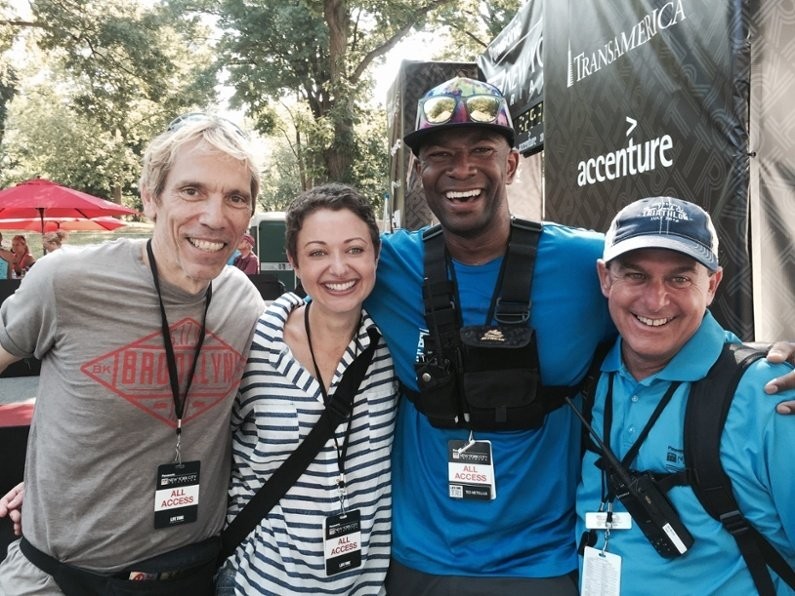
Metellus, 47, is being promoted from vice president of events at NYRR, an organization he has worked with since 2001. He grew up running in New York City.
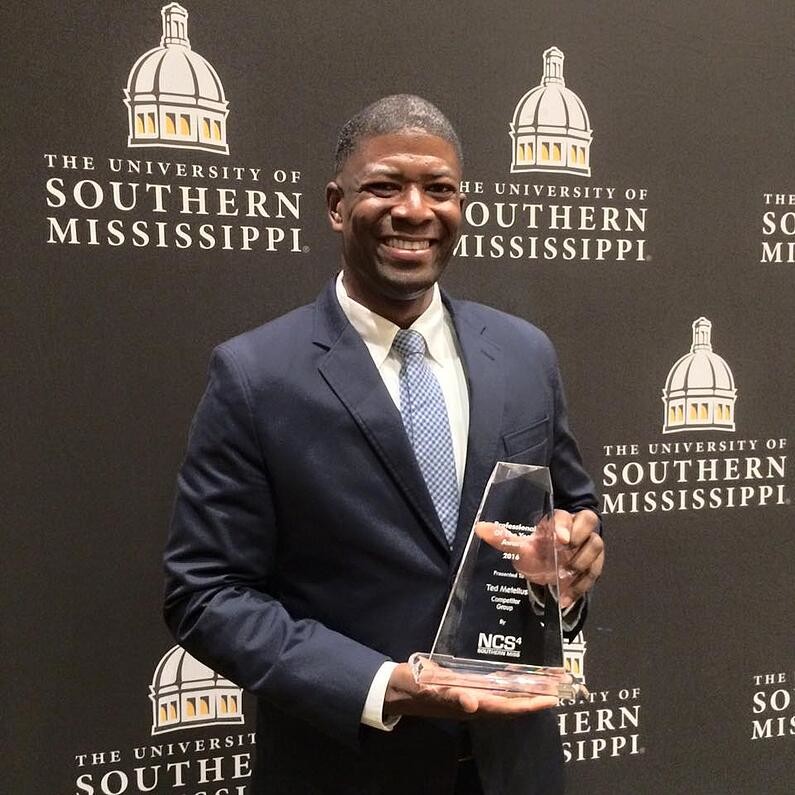
"Being born and raised in the Bronx, my mom was a maid and my dad was a janitor -- blue collar, hard workers," he said. "Organized sports wasn't something that was available to us, but when I was really young, everybody wanted to be the fastest kid on the block."
In high school, he joined the cross country and track teams, and even though he was one of the slowest members ("It was painful," he said), he loved running, and he loved bringing runners together. That led him to work on organizing large-scale events like Ironman, Rock 'n' Roll Marathons and the NYC Marathon.
"When people ask me, 'How do I get people to join and be a part of my team? How do I invite them in?' I say, 'No, no, no, you don't invite them in, you go to them,'" Metellus said.
Metellus is taking over as race director at a time when the coronavirus pandemic has ravaged the running industry, causing cancellations of almost all major races worldwide in 2020. NYRR canceled all in-person races from March until the end of September, and the 2020 NYC Marathon was held virtually. This November, the hope is to have a safe in-person marathon with strict COVID-19 guidelines.
"The legacy I'd like to leave behind is for us to have a safe and enjoyable marathon this November -- because I know that's going to be a moment that people look back at, just like in 2001 when we had a marathon two months after 9/11 ... There will be moments in the history of running and even beyond when people will look back and say, 'What happened when...' and 'Who was the director when ..." and what were some of the takeaways from that and how we can use that moving forward."
Metellus hopes that his role helps create new opportunities for others as well.
"At the end of the day, what I would like is not to be the first and last. Who else am I opening up the doors for? When I look at the industry right now, who's going to be the next person and how do I lay the groundwork for them," he said.
(02/06/2021) ⚡AMPby Aishwarya Kumar
TCS New York City Marathon
The first New York City Marathon, organized in 1970 by Fred Lebow and Vince Chiappetta, was held entirely in Central Park. Of 127 entrants, only 55 men finished; the sole female entrant dropped out due to illness. Winners were given inexpensive wristwatches and recycled baseball and bowling trophies. The entry fee was $1 and the total event budget...
more...Eddie Izzard Completes 32 Marathons in 31 Days—All on a Treadmill!—to Raise Money for Charity
Even George Clooney joined the British comedian for the final minutes of her last marathon
Comedian Eddie Izzard, who admits she "doesn't like running", has notched up more than 830 miles, raising more than £275,000.

Eddie Izzard has raised over a quarter of a million pounds for charity after completing 32 marathons and performing 31 comedy gigs in just 31 days.
The 58-year-old ran a marathon on a treadmill every day in January, followed by a "Best Of" comedy gig as part of a "Run For Hope".
Using the social media hashtag #MakeHumanityGreatAgain, the British performer completed the challenge from Riverside Studios in London, but ran virtually through different cities around the world each time.
Izzard also chatted to a host of celebrities including George Clooney, Davina McCall, Joe Wicks, Stephen Fry, Bill Bailey and Dame Judi Dench, as she notched up the miles.
A dedicated Crowdfunder site has so far raised more than £275,000, and been supported by nearly 5,000 people, with over 12 hours of fundraising still to go.
Money will go to organisations working with disadvantaged and vulnerable people, including some of those dealing with the wider effects of the COVID-19 pandemic.
The first five charities to benefit will be Fareshare, a UK charity fighting hunger and food waste, Walking With the Wounded, Care International, United to Combat Neglected Tropical Diseases and Covenant House New York City - a US youth homelessness charity.
(02/06/2021) ⚡AMPby Runner’s World
Miley Cyrus Prep Her Powerful Vocals for Her Super Bowl Pregame Show Performance With Treadmill Intervals
This may be the toughest speedwork and fastest recovery I’ve ever seen, but WTF Do I Know?
Miley Cyrus posted an Instagram video showing how she’s preparing for her Super Bowl LV pregame show performance on Wednesday, February 3.

The “Midnight Sky” singer is set to perform at the NFL’s pregame TikTok tailgate on Sunday, February 7.
To train for her performance, she runs on a Peloton treadmill while flawlessly belting out “Rebel Girl.”
Getting ready for a live performance is no small task, and many artists have told Runner’s World that running gives them an endurance boost they need when they’re on stage. Apparently Miley Cyrus includes treadmill intervals when prepping for her performances, too
On Wednesday, February 3, Cyrus posted a video of herself to her IGTV and Instagram story running on a Peloton treadmill—while belting out “Rebel Girl” by Bikini Kill. She captioned the video, “#SBLV PREP â˜ ï¸ Angels like you can’t fly with rebel girls like me 😈👼.” In the background of the video, you can also hear a person suggest she match her running pace with the rhythm of the song, which she does without missing a beat.
(02/06/2021) ⚡AMPby Runner’s World
Man runs barefoot half marathon in the snow to break Guinness record
A Norwegian runner unofficially broke a Guinness World Record when he ran a half marathon in 1 hour, 44 minutes and 58 seconds while barefoot -- in the snow.
Jonas Felde Sevaldrud, who chronicled his record attempt in a YouTube video, said the book Born to Run by Christopher McDougall inspired him to take up barefoot running, and his early attempts surprised him at how running barefoot over ice and snow wasn't as difficult as he imagined.

Sevaldrud said he decided to take on Dutch athlete Wim Hof's world record, which was set in 2007 when he ran a half marathon over ice and snow in 2 hours, 16 minutes and 34 seconds.
The runner said his first attempt at the record was called off prematurely when sharp ice caused injuries to his feet, but a few weeks later he tried again on some soft snow and had more success.
Sevaldrud said his final time beat his own goal of 1 hour and 50 minutes.
The runner said he is now waiting to hear back from Guinness about whether his attempt was successful.
(02/06/2021) ⚡AMPMorning vs. evening runs: which are better?
In the world of running, there are two types of people: early risers who are hitting the streets before the sun comes up, and evening runners who prefer to save their miles for after work. Of course, there are others, like those who enjoy a mid-day lunch run and shift workers who like to go out mid-morning or mid-afternoon, but for the majority of nine-to-fivers, morning and evening are their only two options. But is one better than the other? You’ll likely get a different answer depending on who you ask, but we’re here to settle the debate once and for all.
The case for the morning run
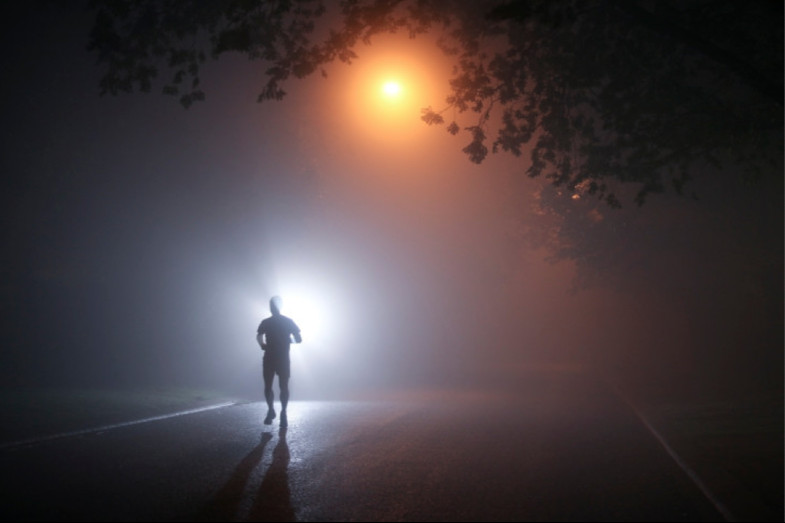
Running in the morning offers a lot of benefits. Aside from getting the opportunity to catch a good sunrise, running in the early hours is a great way to boost your mood and keep you happy for the rest of the day. Cortisol, which is also known as the stress hormone, is at its highest levels first thing in the morning, which is why people who struggle with depression or anxiety feel the worst at this time of day. Running can help counteract that, making you feel cheerier as you go about the rest of your day.
Getting your run in early also means there’s less of a chance that something could get in the way of it later. No matter what happens during the day — whether you end up having to work late or a friend invites you over for dinner — your run is already in the books and will be unaffected. Additionally, the streets in the morning tend to be quieter, and many morning runners love the peace and tranquility of that time of day.
Finally, testosterone levels peak in the morning and then gradually drop throughout the day. For this reason, running in the morning is a great way to build muscle. If you’re including some strength training in your weekly plan, the morning is also a great time to get those workouts in, too.
The case against the morning run
Running in the morning isn’t all sunrises and tweeting birds. There are some drawbacks, and most of them have to do with how well your body functions that early in the day. Running in the morning puts you at a greater risk for injury because your muscles are stiffer and colder after having been at rest all night. This means that if you do run in the morning, it’s important to do a proper warm-up and to start slow to allow your body to ease into the run.
The early morning also isn’t a great time to put in hard workouts, because you are likely not fuelled properly for that run after fasting for eight to ten hours while you slept. Without enough calories (aka energy) in your system, you likely won’t be able to run as fast or as long, so it’s best to save your hard efforts for a time when you can at least have one good meal a few hours before your workout.
The case for the evening run
Many runners find that they can run faster or longer in the evening, despite putting in the same level of effort as they do in the morning. This is because by the time the evening rolls around, you’ve likely eaten a couple of meals and so you have more energy available to fuel your run. This is also when your body temperature peaks, and since you’ve been moving around during the day your muscles are warmer and more ready to work out. Not only does this mean runner will feel easier, but it will also lower your risk for injury.
The case against the evening run
Motivating yourself for an evening run is just as difficult as a morning run, but for a slightly different reason. Most of us hit our mental peak in the morning, which then slowly dwindles throughout the day, and we often feel sluggish or tired by the end of our workday. Those two factors combined make it easy to give in and skip our run. Of course, there is also a greater possibility that something could come up during the day that forces you to miss your evening run, which could make it difficult to stick to a consistent schedule. Most of the time, however, if you can push yourself to lace up your shoes, you’ll be surprised at how good you feel once you actually start running.
There are also more environmental factors to contend with in the latter part of the day, like increased traffic (and therefore decreased air quality), hotter temperatures in the summer months and a lack of light when the sun goes down early during the winter. If you go out running at this time, it is important to be prepared for whatever elements you may have to deal with so you can run safely.
Finally, while running in the evening may not force you to get up early, it could disrupt your sleep if you leave it too late. Sleep is a very important part of recovery, so if you’re finding that your sleep quality is worse after you run in the evening, you may want to try finding an earlier time to run.
The bottom line
When it comes down to it, the best time of day to run depends on you and your schedule. If starting your day with a run makes you feel energized and happy and helps you to stay consistent with your training, then by all means continue. Just make sure that you’re warming up properly and going to bed early so you’re not missing out on sleep. If getting up before the sun sounds like torture to you, then the evening run is the better option. If you can, avoid heavily trafficked areas so you aren’t breathing in so many fumes, and make sure you’re well-prepared for the environmental conditions you might encounter on your run.
(02/06/2021) ⚡AMPby Running Magazine
2021 Two Oceans Marathon has been cancelled due to the pandemic
Cape Town’s premier running event, the Two Oceans Marathon scheduled for Easter Saturday, April 3, has been cancelled because of the COVID-19 pandemic.
The 56 km race is the second largest ultramarathon in South Africa and has been held since 1970. According to a media release by the race organizers, “the current pandemic climate, [and] the health risks around hosting the… mass participation event are far too significant for the event to proceed safely.”
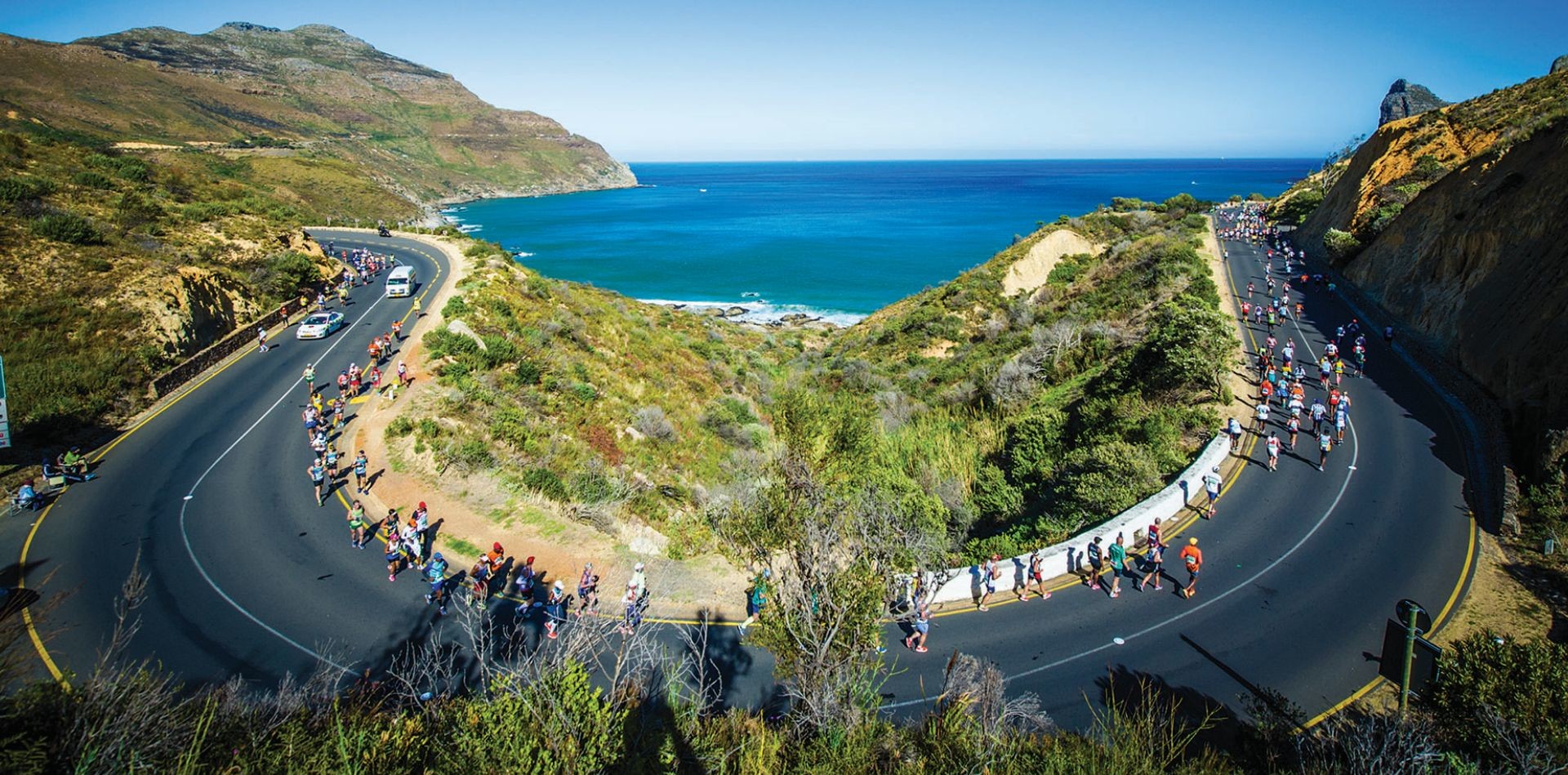
“It is never pleasant when an event like this is disrupted and which in turn affects the fixture calendar and the many athletes who are already planning for that day,” said Jakes Jacobs, President of Western Province Athletics (the provincial authority for the event). “However, it is even more painful to us when an event of this magnitude is forced to be cancelled. Unfortunately, the pandemic knows no bounds and… no one knows when it will be put under control or even be eliminated, if at all.
We have consulted with Athletics South Africa regarding the race. Western Province Athletics and the organizers eventually took this final decision after taking into consideration the many factors in the management of the event and the current behavior of the virus.”
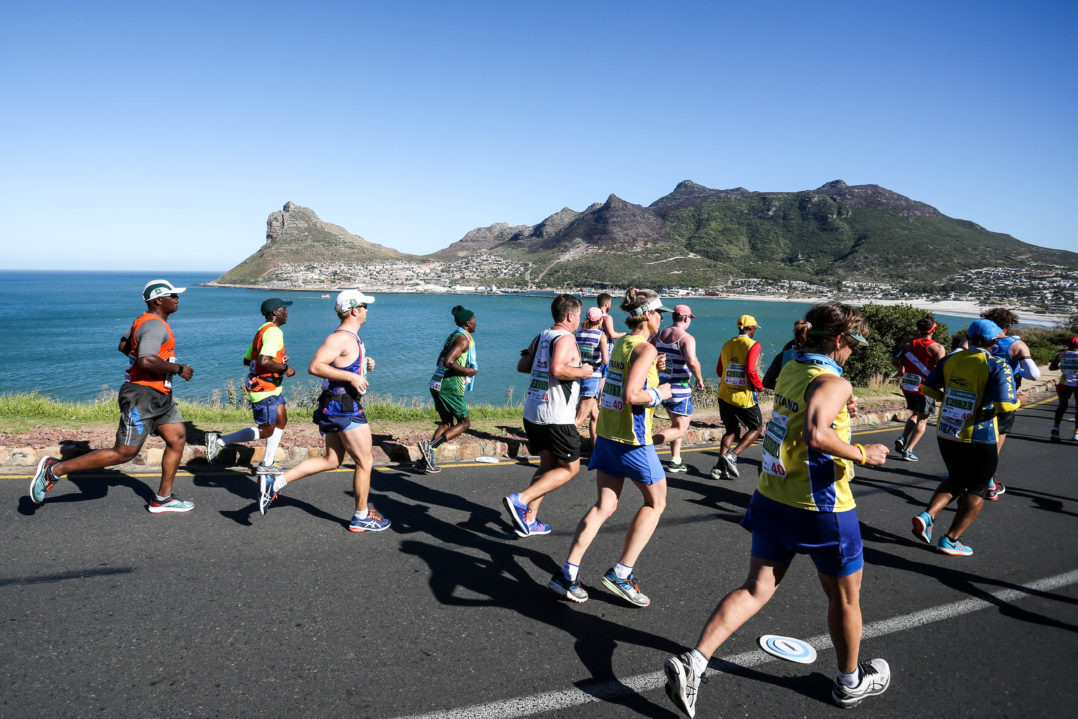
The organizers said while they did consider a postponement of the event to a later date, they are “planning alternative events and programmes… within the prevailing regulations”. These will be announced soon.
The Two Oceans was also cancelled in 2020, when it would have been the 51st running of the ultramarathon (and the 23rd of the accompanying half-marathon). When it was last held in 2019, the winners were Bongmusa Mthembu and Gerda Steyn (her second consecutive victory). The race had 12,026 finishers; the combined total of 26,509 finishers in the ultra and half-marathon easily makes it the biggest running event in South Africa.
Almost simultaneously with this news, Athletics South Africa announced that track and field events can resume this weekend after several months of no activity. It is expected that the country’s COVID-19 lockdown level will be lowered by the government before or on February 15, which would increase the limit on the number of people allowed at public gatherings such as track and field meetings and road races.
(02/06/2021) ⚡AMPby Riël Hauman
Two Oceans Marathon
Cape Town’s most prestigious race, the 56km Old Mutual Two Oceans Ultra Marathon, takes athletes on a spectacular course around the Cape Peninsula. It is often voted the most breathtaking course in the world. The event is run under the auspices of the IAAF, Athletics South Africa (ASA) and Western Province Athletics (WPA). ...
more...Why Runners Should Treat Winter as a Training Tool
In the winter of 1939, when the military posted Swedish miler Gundar Hagg to the far north of that nordic country, he devised a unique training program of running on trails through knee- or hip-deep snow. Most days he would do 2500 meters in snow for strength, followed by 2500 meters on a cleared road for turn-over. But during those times when he couldn't find cleared roads-sometimes for weeks-he'd run up to the full 5K in snow. The next summer he set huge PRs, coming within one second of the mile world record.
Hagg continued his routine in subsequent winters, devising a hilly 5K loop in a different locale that trudged through snowy forest for 3000 meters then ended with a 2000 meter stretch of road where he could run at full speed. He kept improving, and the summer of 1942 he set 10 world records between 1500m and 5,000m.

While Hagg's routine was created out of necessity, he obviously valued the snowy training. When he moved to a city with a milder climate, he wrote in a training journal, "It will be harder running than any previous year. Probably there won't be much snow." And every winter he scheduled trips north to train on the familiar, tough, snowy trails.
Hagg isn't the only runner who has found winter training valuable. Roger Robinson, who raced internationally for England and New Zealand in the 1960s before setting masters road records in the '80s, recalls his training for the deep-winter English cross country championships of the 1950's and 60s. "We ran, often at race pace, over snow, mud, puddles, deep leaves, ploughed fields, scratchy stubble, stumpy grass, sticky clay, sheep-poo, whatever, uphill and down," Robinson says. "And thus, without going near a gym or a machine, we developed strength, spring, flexibility, and stride versatility that also paid off later on the road or track; I made one of my biggest track breakthroughs after a winter spent running long intervals on a terrain of steep hills and soft shifting sand."
Robinson, now 80, with two artificial knees, still runs in the cold and slop. "Running is still in great part about feeling the surfaces and shape of the earth under my feet," he says.
Hagg and Robinson are of a different generation than those of us with web-connected treadmills that can let us run any course on earth from the comfort of our basement, but they're on to something we might still benefit from: Winter can be an effective training tool. Here are five reasons you'll want to bundle up and head out regardless of the conditions, indeed, why you can delight when it is particularly nasty out.
1) Winter Running Makes You Strong
As Hagg demonstrated and Robinson points out, winter conditions work muscles and tendons you'd never recruit on the smooth, dry path. A deep-winter run often ends up being as diverse as a set of form and flexibility drills: high knees, bounds, skips, side-lunges, one-leg balancing
Bill Aris, coach of the perennially-successful Fayetteville-Manlius high school programs, believes that tough winter conditions are ideal for off-season training that has the goal of building aerobic and muscular strength. He sends the kids out every day during the upstate New York winter, and says they come back, "sweating, exhausted and smiling, feeling like they have completely worked every system in their bodies."
2) Winter Running Makes You Tough
No matter how much you know it is good for you and that you'll be glad when you're done, it takes gumption to bundle up, get out the door and face the wintry blast day after day. But besides getting physically stronger, you're also building mental steel. When you've battled snow and slop, darkness and biting winds all winter, the challenges of distance, hills and speed will seem tame come spring.
"If you have trained in deep snow, or battled up a slippery hill into freezing sleet, or lifted your feet out of sticky clay for an hour, the race can hold no fear," Robinson says. "If you do real winter training, Boston in April can throw nothing at you that you have not prepared for."
3) Winter Running Improves Your Stride
Running on the same smooth, flat ground every day can lead to running ruts. Our neuromuscular patterns become calcified and the same muscles get used repeatedly. This makes running feel easier, but it also predisposes us to injury and prevents us from improving our stride as we get fitter or improve our strength and mobility. Introducing a variety of surfaces and uncertain footplants shakes up our stride, recruits different muscles in different movement patterns, and makes our stride more effective and robust as new patterns are discovered.
You can create this stride shake-up by hitting a technical trail. But as Megan Roche, physician, ultrarunning champion, clinical researcher at Stanford and Strava running coach, points out, "A lot of runners don't have access to trails. Many runners are running on flat ground, roads-having snow and ice is actually helpful, makes it like a trail."
In addition to creating variety, slippery winter conditions also encourage elements of an efficient, low-impact stride. "One thing running on snow or ice reinforces is a high turn over rate and a bit more mindfulness of where your feet are hitting the ground," Roche says. "And those two things combine to a reduced injury risk." After a winter of taking quicker, more balanced strides, those patterns will persist, and you'll be a smoother, more durable runner when you start speeding up and going longer on clearer roads.
"Exercising in general, particularly during periods of higher cold or flu season has a protective effect in terms of the immune system," says Roche. You get this benefit by getting your heart rate up and getting moving even indoors, but Roche says, "Getting outside is generally preferable-fresh air has its own positive effect."
Cathy Fieseler, ultrarunner and sports physician on the board of directors of the International Institute of Race Medicine (IIRM), says there's not much scientific literature to prove it, but agrees that in her experience getting outside has health benefits. "In cold weather the furnace heat in the house dries up your throat and thickens the mucous in the sinuses," Fieseler says. "The cold air clears this out; it really clears your head."
Fieseler warns, however, that cold can trigger bronchospasms in those with asthma, and Roche suggests that when it gets really cold you wear a balaclava or scarf over your mouth to hold some heat in and keep your lungs warmer. "Anything below zero, you need to be dressed really well and mindful of your lungs, making sure that you're not exposing your lungs to too cold for too long," Roche says.
For all its training and health benefits, the thing that will most likely get most of us out the door on white and windy days is that it makes us feel great. "A number of runners that I coach and that I see in clinics suffer from feeling more depressed or a little bit lower in winter," says Roche. "Running is a great way to combat that. There's something really freeing about getting out doors, feeling the fresh air and having that outdoor stress release."
Research shows that getting outside is qualitatively different than exercising indoors. A 2011 systematic review of related studies concluded, "Compared with exercising indoors, exercising in natural environments was associated with greater feelings of revitalization and positive engagement, decreases in tension, confusion, anger, and depression, and increased energy." They also found that "participants reported greater enjoyment and satisfaction with outdoor activity and declared a greater intent to repeat the activity at a later date."
That "intent to repeat" is important. Running becomes easier and more enjoyable, the more you do it. "Consist running is really the most fun running," Roche says. "It takes 4 weeks of consistency to really feel good. Your body just locks into it."
Most people associate consistency with discipline, and setting goals and being accountable is an effective way to build a consistent habit. Strava data shows that people who set goals are much more consistent and persistent in their activities throughout the year. The desire to achieve a goal can help overcome that moment of inertia when we're weighing current comfort with potential enjoyment.
But the best way to create long-term consistency is learning to love the run itself. Runners who make it a regular part of their life talk little about discipline and more about how much they appreciate the chance to escape and to experience the world on their run each day-even, perhaps especially, on the blustery, cold, sloppy ones.
"I want to get out into whatever the weather is, the environment is. I want the experience," Robinson says. "Yes, in winter it's nice to stay warm inside; except when you go outside once a day to run, in whatever weather and on whatever footing nature provides. That's called living. It's also good for your later races."
(02/06/2021) ⚡AMPby Trail Runner Magazine
US 800m star, Ajeé Wilson is on the comeback trail
The US 800m star is on the comeback trail, writes Elliott Denman, and about to hit the track for her first competition in 12 months
“It’s been crazy,” Ajee’ Wilson tells you, by way of telephone interview.
Which isn’t exactly late-breaking news.
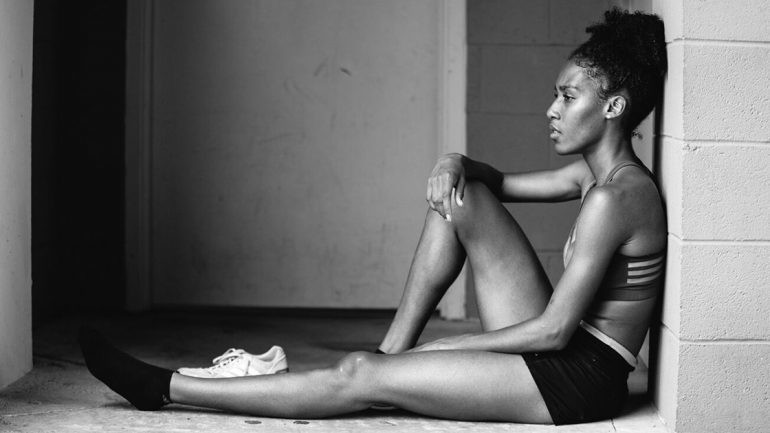
Then again, when you are the No.1-ranked athlete in the world in a prime event on the programme of the “flagship sport of the Olympic Games,” a very good guess is that the last year has been a whole lot crazier for you than it’s been for so many of your contemporaries.
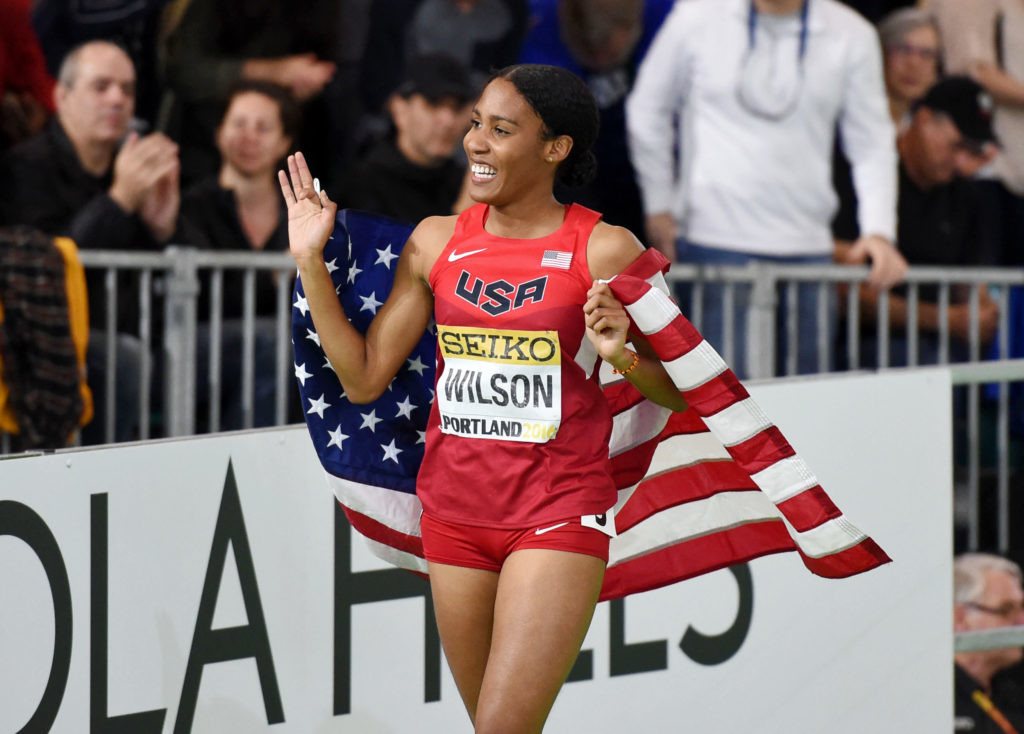
At 26 – she’ll be 27 on May 8 – the stellar speedster from Neptune, New Jersey, a Temple University graduate who now lives and trains in Philadelphia, is already the owner of 11 USA Track and Field national championship gold medals, holds both versions of the American record for 800m (1:55.61 outdoors, 1:58.29 indoors) and is a young veteran of both the 2016 Olympics and multiple editions of the world championships, And, too, she ran off with the top spot in the most recent complete edition of the Diamond League circuit in 2019.
That’s already a career dossier that puts her right up there with the best of the best in American track annals.
Nevertheless, she hasn’t competed in nearly a year and can’t really tell you “where I am” heading into the New Balance Grand Prix at Staten Island’s Ocean Breeze complex, on Saturday February 13. Her 2021 debut will thus be more than interesting as the track and field world catch up on her exploits and she catches up with her own sport.
Her most recent competitive outing was at the USATF Indoor Nationals in February last year in Albuquerque. Of course, she won it, in 2:01.98 and at altitude. It came a week after she’d won at New York’s Millrose Games, in an American record of 1:58.29, which held up as No.2 world time of the indoor season behind Jemma Reekie’s 1:57.9.
She’d opened her 2020 season with a 2:02.37 win in January at the New York Armory’s Dr Sander Invitational. But before that, her last prior major outing was third place at the World Championships in Doha in September 2019.
So that adds up to just three major competitions in a year and just four in nearly 16 months. What can the track and field world expect?
Wilson can’t really tell you – other than saying: “I’m pretty healthy, I’ve been training well, not bad at all (with her training group partners and coach Derek Thompson, almost always outdoors in Philadelphia, no matter the weather).
“I don’t have any issues, no nicks, no nacks.”
Yes, there were “some nicks, some nacks” for a brief stretch last summer but they’re long gone now and she’s more than anxious to get back into real racing.
She’s grateful, too, that, even through this brutal stretch of overlapping universal economic slowdown, and the devastations of the pandemic, her sponsor adidas has stayed with her and lent the ongoing support appropriate to a world-class athlete.
After the Staten Island start, she hopes to run The Texas Qualifer, a brand new outdoor meet in the Austin area on February 26-27 designed to help Tokyo Olympic hopefuls post qualifying marks. Focusing on events from the 800m up to 10,000m for men and women, the meet will be USATF-sanctioned, spectator-free and fully observant of Covid protocols.
“Hopefully” – a word almost all the global elite uses regularly these challenging days – the meet will evolve into a major stepping stone on the way to Japan in July.
Like every global Games candidate, she has no firm idea if the Tokyo Olympics will actually transpire as scheduled. And if so, in what form? As a strictly-for-TV extravaganza? As a spectator-free production? In a who-knows-what format?
“I’m just hopeful,” said Wilson. “Whatever they decide, that’s fine with me.”
She adds: “It’s obviously a bigger call than any of us can make.”
(02/05/2021) ⚡AMPby Athletics Weekly
Tokyo 2020 Olympic Games
Fifty-six years after having organized the Olympic Games, the Japanese capital will be hosting a Summer edition for the second time, originally scheduled from July 24 to August 9, 2020, the games were postponed due to coronavirus outbreak, the postponed Tokyo Olympics will be held from July 23 to August 8 in 2021, according to the International Olympic Committee decision. ...
more...2021 Nagano Marathon has been cancelled due to the pandemic
The Nagano Marathon organizing committee held the meeting on February 2nd at Nagano city and decided to cancel the 23rd Nagano marathon.
This is the judgement to put utmost priority to safety to participant runners and local residents considering the condition of coming April cannot be foreseen because 11 prefectures in Japan are still under the second proclamation of state of emergency due to the spread of new coronavirus.
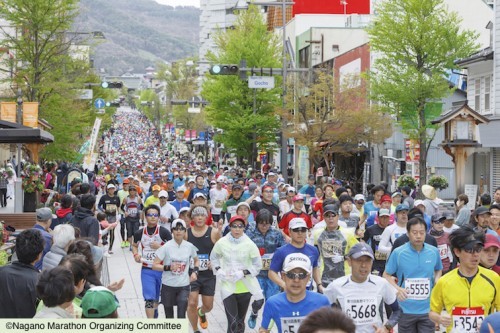
The committee has considered the necessary infection prevention measures, however the spread ot the third wave infection, which began from around November last year, is continuing and the state of emergency period is expected to be extended.
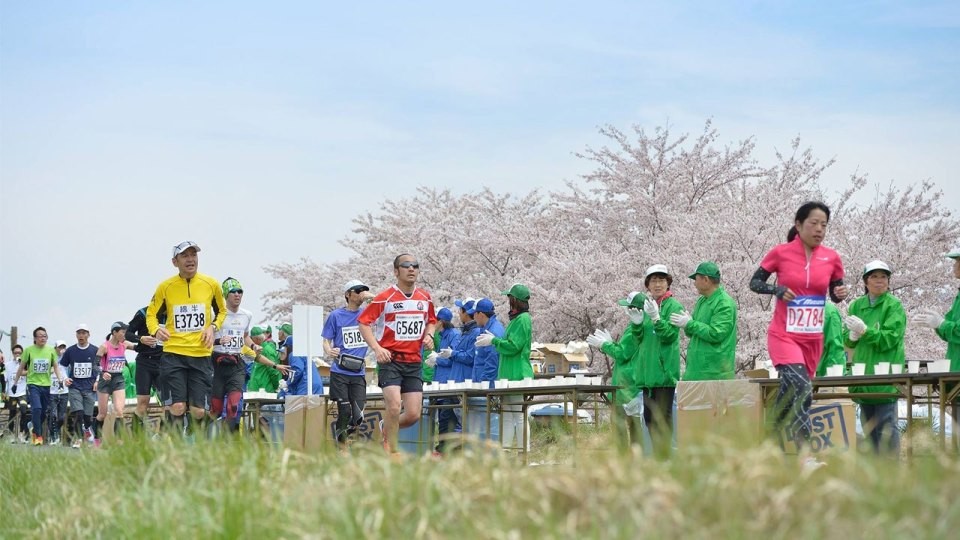
for only this time, the applicant will be given a full refund of the entry fee and will also be given priority entry to the next Nagano marathon. In addition, we are planning to hold alternative events such as online marathon that can be held without runners becoming crowded.
We are going to prepare for the next Nagano Marathon hoping new coronavirus will go down as soon as possible and both domestic and foreign runners will be able to participate in the next race with smiles.
Thank you very much for your continued support. The Nagano Organizing Committee.
(02/05/2021) ⚡AMPNAGANO MARATHON
The Nagano Olympic Commemorative Marathon is an annual marathon road race which takes place in mid-April in Nagano, Japan. It is an IAAF Bronze Label Road Race competition. The Nagano Marathon has races for both elite and amateur runners. It is named in honour of the 1998 Winter Olympics which were held in Nagano. The course has a point-to-point style...
more...





